Porto-North-Portugal.com
The best independent guide to north Portugal
Porto - Braga - Aveiro - Douro - Guimarães - Monsanto - Lamego - Chaves - Serra da Estrela - Trancoso

Viana do Castelo, Portugal; a tourism guide for 2024
Viana do Castelo is the gem of Northern Portugal and exemplifies all of the finest aspects of the Costa Verde region. There are pristine beaches, dramatic natural scenery, and a city rich in history and Portuguese culture.
Viana do Castelo has always been a hardworking industrial city, with a proud shipbuilding heritage and a large fishing fleet. It is also a personable and likeable destination, which has a surprising amount of sights and activities to offer you.
Contained within the compact historic centre are ornate religious buildings, handsome 17th-century villas and cobbled shopping streets. Viana do Castelo spans the northern banks of the mighty Rio Lima, and this shoreline has a pleasant mix of park, ultra-modern architecture and a bustling fishing port.
Dominating the skyline of Viana do Castelo is the Santuário de Santa Luzia, a neo-byzantine church that stands atop the Monte de Santa Luzia hill. From the top of the church’s domed roof is one of the finest panoramic views in the whole of Portugal.
Viana do Castelo lies in a region of outstanding natural beauty. The city sits at the mouth of the slow-flowing Lima River, and is surrounded by rugged hills characteristic of the Minho region, while the coastline comprises of gorgeous sandy beaches.
Viana do Castelo is barely known by foreign visitors, but the city and surrounding region has so much to offer, that it deserves to be discovered by you. This article will show you why you must visit Viana do Castelo and help you get the most from the region. Relate articles: Ponte de Lima – Dy trips from Porto – The Douro valley
Highlights of Viana do Castelo
The Santuário de Santa Luzia – The magnificent white church that stands high above the city, with beautiful rose windows and a spectacular view from the top of its roof.
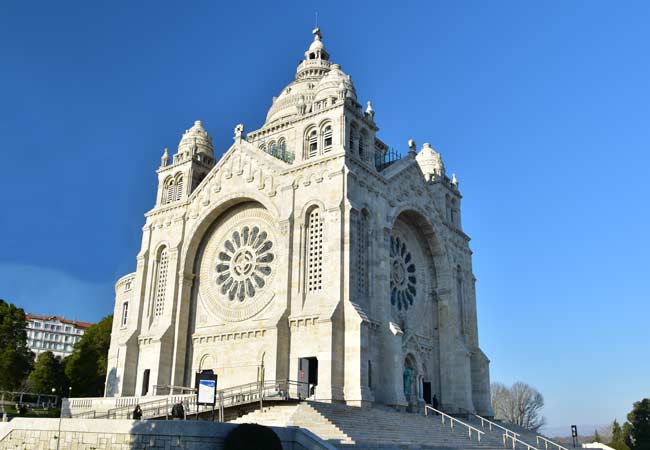
The Praça da República – The heart of Viana do Castelo, with its historic buildings, cobbled streets and the Santa Casa da Misericórdia church, with its stunning interior.
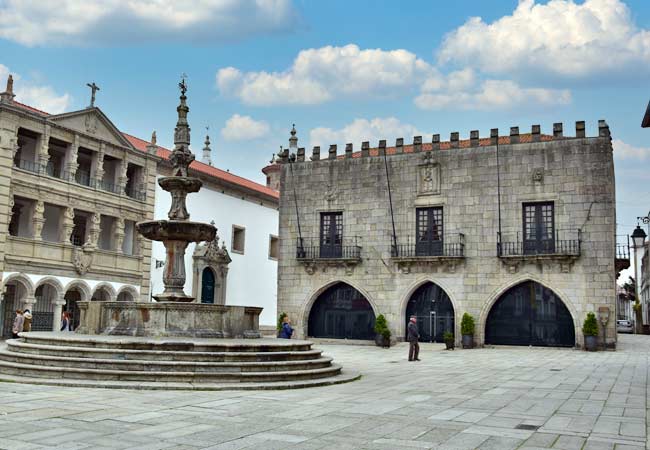
The Gil Eannes hospital ship – The 1950s ship constructed in Viana do Castelo to support the city’s Atlantic fishing fleet, now converted into a fascinating museum that details its history.
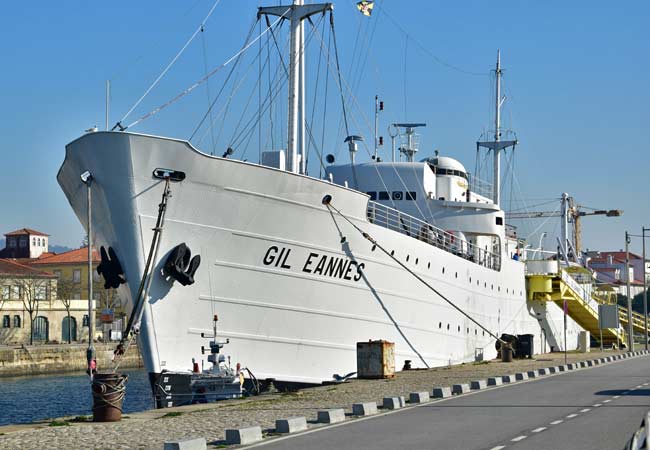
The Praia do Cabedelo – Sweeping sandy bay south of Viana do Castelo, with pristine natural scenery and near-perfect surfing waves.

A day trip to Viana do Castelo
Viana do Castelo is a great destination for a day trip from Porto but is rarely considered. There are sufficient sights to easily fill a day of sightseeing, and the city has a completely different atmosphere to Porto.
It is even possible to visit Viana do Castelo as a day trip from Porto using public transport. The inter-region (IR) train service from Porto to Viana takes 95 minutes, and a return ticket costs €14.40; see Comboios de Portugal https://www.cp.pt
A typical day trip to Viana do Castelo is divided into three sections; the historic centre, the waterfront and the Monte de Santa Luzia hill. To explore each of these distinct areas takes five to six hours and makes for an enjoyable day trip.
The map below shows a suggested day trip to Viana do Castelo. The green line marks the tour of the city, and the yellow line shows the tour around Monte de Santa Luzia ( Note: zoom out to see all of the points)
Sights of the day trip: 1) Museu do Traje 2) Praça da República 3) Igreja da Misericordia 4) Sé Catedral 5) Ponte Eiffel 6) Monumento ao 25 de Abril 7) Centro Cultural 8) Gil Eannes 9) Forte Santiago da Barra 10) Santuário de Nossa Senhora 11) Igreja de São Domingos 12) Elevador de Santa Luzia 13) Santuário de Santa Luzia 14) Citânia Santa Luzia 15) Praia Norte (beach) 16) Praia do Cabedelo (beach) Note: On Monday, all of the city’s museums are shut, so it is advisable not to visit Viana do Castelo on this day
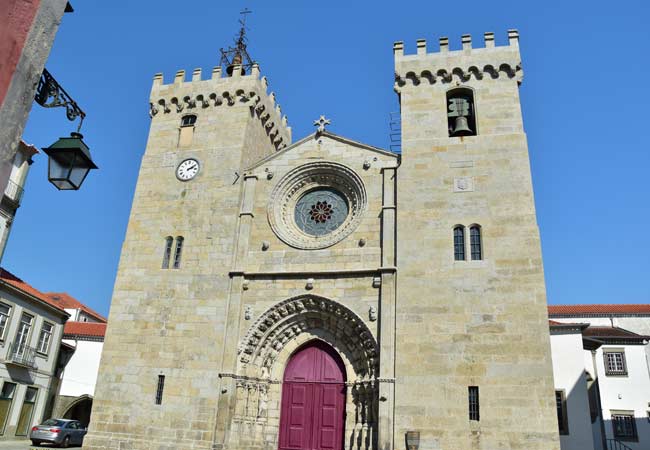
The gothic styled Se Cathedral
For your day trip, we suggest beginning in the historic centre, which is conveniently close to the train station. The historic centre follows a grid layout with the Praça da República at its heart. Highlights include the Sé Catedral, the Misericordia church and the informative Traje regional museum.
The waterfront is a mix of ultra-modern buildings and parks, that are centred around the Centro Cultural. Towards the mouth of the Lima River is the spawling Santiago da Barra Fort and port complex where the Gil Eannes ship is moored.
The final area for the day trip is the Monte de Santa Luzia hill (228m). This is where the Santuário de Santa Luzia is situated, along with the iron-age ruins of the Citânia de Santa Luzia. A funicular climbs the hill and stops at the base of the Santuário de Santa Luzia.
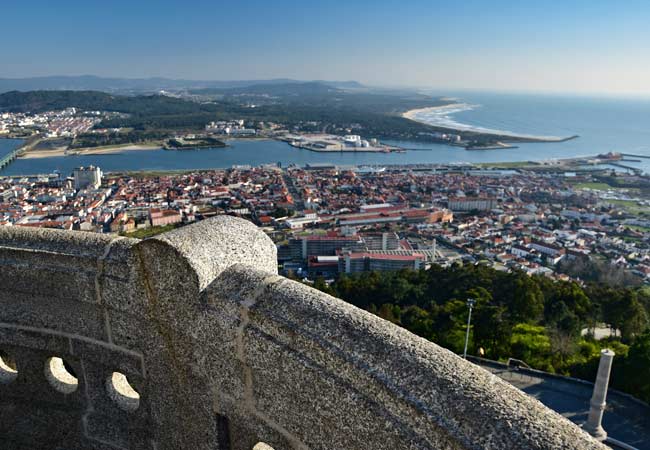
The view over Viana do Castelo from the top of the Santuário de Santa Luzia
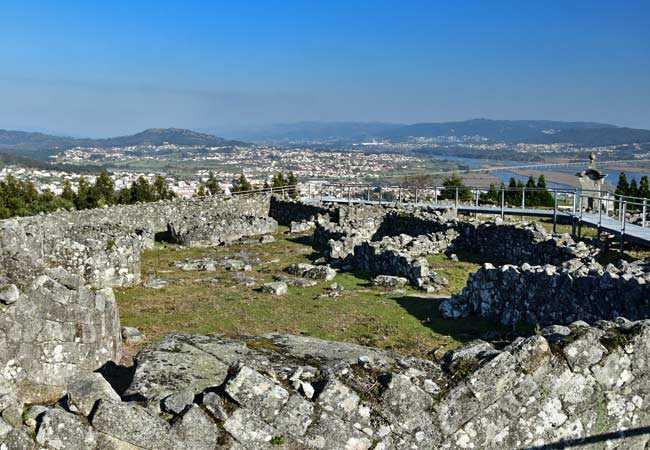
The Citânia Santa Luzia ruins were a major iron-age town and fort that covered the entire summit of the Santa Luzia hill.
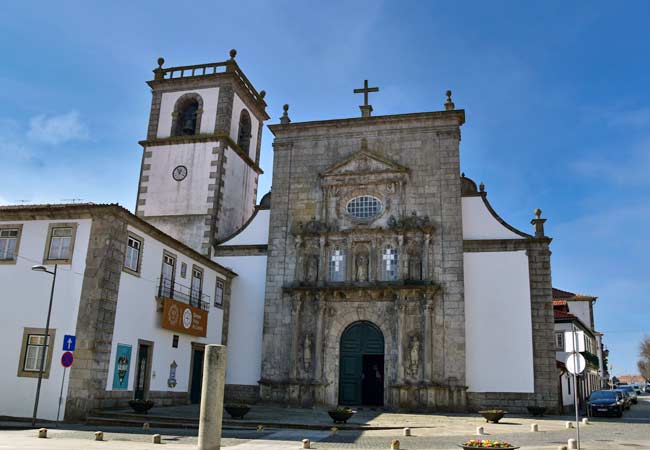
The Igreja de São Domingos
Viana do Castelo for a longer stay or holiday
Viana do Castelo may not seem an obvious choice for a holiday, but it is a fantastic location if you are seeking a completely undiscovered and unique destination.
Along with the historical sights and activities, Viana do Castelo boasts a wide selection of restaurants, hotels and bars. The city has the facilities, services and nightlife of a large city but without the excessive clamour or hecticness of Lisbon or Porto.
For a holiday, Viana do Castelo provides exceptional value for money, as all restaurants and nightlife are designed for locals and not tourists.
Our opinion: If you adored Lisbon, fell in love with Porto, and the Algarve is too touristy for you, then Viana do Castelo should be the next place you visit in Portugal.
Viana do Castelo is not a classic beach resort, but there are amazing beaches within walking distance of the historic centre (the Praia Norte), and there is a summertime ferry to the beautiful Praia do Cabedelo.
The city is an ideal base from which to explore the Minho region and the Costa Verde coastline, and Viana do Castelo is the primary transport hub of the region. A suggested 1-week itinerary could include: • Day 1 – Explore the historic centre and the Santa Luzia hill. • Day 2 – Visit the Gil Eannes ship and the beaches • Day 3 – A day trip to Ponte de Lima (a pretty town) • Day 4 – A day trip to Valença (a fortified town on the Spanish border) • Day 5 – A day trip to the Parque Nacional Peneda-Gerês (car needed) • Day 6 – A day trip to Caminha and Vila Nova de Cerveira (delightful coastal towns) • Day 7 – A day trip to Barcelos (a pretty riverside town)
The Viana do Castelo has a decent selection of hotels and rental rooms, and the best are seen in the map below. If you adjust the dates to your trip, it will display current prices and availability:
The weather of Viana do Castelo
One consideration for a trip to Viana do Castelo and the Minho region is the weather. The Costa Verde (the Green Coast) is named after its lush vegetation, but this is due to the amount of rain that blows in from the Atlantic Ocean and falls over the hills. The summer months are dry and warm, but there can be a lot of rain in the autumn, winter and early spring.
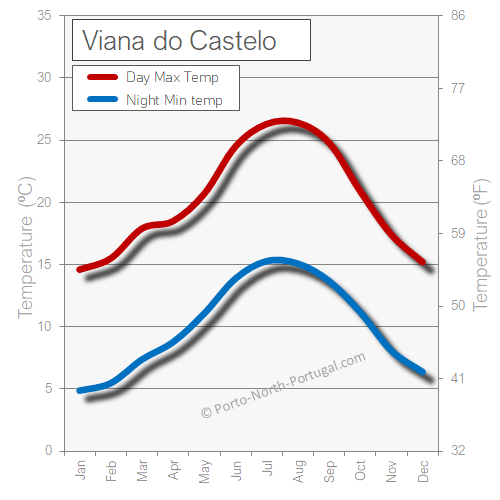
The daytime maximum temperature (measured in the shade) and night-time minimum
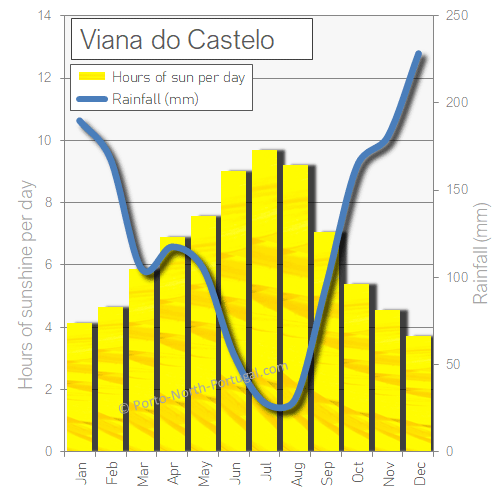
The average hours of sunshine per day and monthly rainfall
The Gil Eannes
The Gil Eannes hospital ship was constructed in 1955 to support the city’s fishing fleet during their month-long cod-fishing expeditions to Newfoundland (off the coast of Canada). The ship doubled up as a supply ship and mobile hospital for this incredibly dangerous profession.
The boat was rescued from scrappage in 1992, and has been lovingly restored to its former glory, and celebrates the fishing heritage of Viana do Castelo. The entire boat can be explored, from the bridge to the engines, and even the operating theatres. This is a fantastic tourist attraction for adults and children alike: http://www.fundacaogileannes.pt
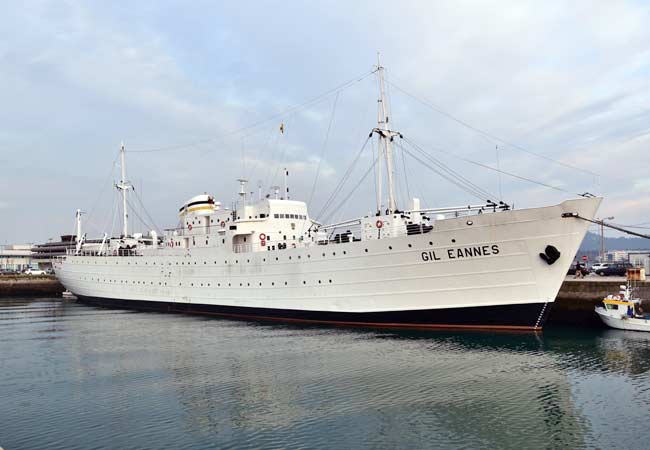
The operating room was at the lowest point of the ship, to have the least movement during rough seas
The Santuário de Santa Luzia
The magnificent Santuário de Santa Luzia stands atop the Monte de Santa Luzia, and is visible from any point of the city. The neo-Byzantine styled church is much younger than it appears, with its construction only starting in 1904, and completed in 1959.
The Monte de Santa Luzia hill provides amazing panoramic views of the region, and if you are fit (without claustrophobic or vertigo) can climb to the top of the churches dome for even better views. Related articles: The Santuário de Santa Luzia .
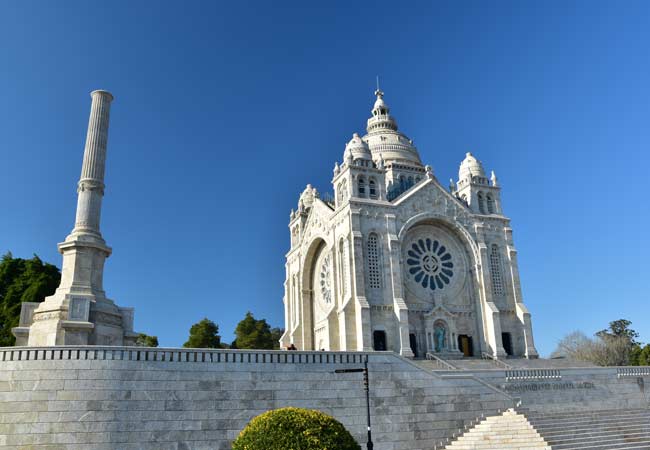
The Igreja da Misericordia
The nondescript exterior of the Santa Casa da Misericórdia gives no indication of the opulent and decorative interior of the church. Inside gilded leaf and beautifully painted Azulejo tiles adorn every surface.
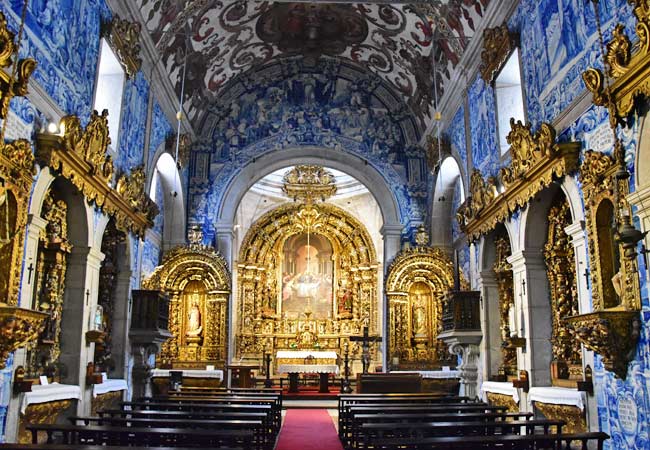
The interior of the Igreja da Misericordia is simply stunning
The beaches of Viana do Castelo
The Costa Verde has a gorgeous coastline of pristine and windswept beaches. These beaches are stunning, and in the summer, when there is less wind, they can easily rival the best beaches of the Algarve.
The seawater of the Northern Portugal coastline is surprisingly cold, only reaching 16-18C in the summer.
The Praia do Cabedelo is the finest beach of Viana do Castelo and lies on the southern side of the Rio Lima. This pristine beach extends for over 3.5km and is popular for surfing and kite surfing due to its excellent waves and reliable sea breezes.
On the northern side of the mouth of the river Lima (and closer to the city) is the Praia Norte. This is a beautiful sandy beach interspaced with rocky outcrops, and has a bustling promenade of cafes, bars and restaurants.
Further north along the coastline are the smaller resort towns of Carreço, Afife and Vila Praia de Âncora, and each offers a wonderful sandy beach.
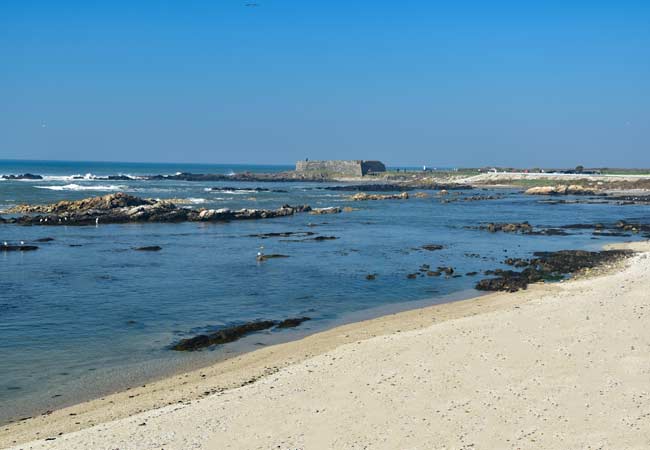
The Praia Norte beach
Our most popular guides to northern Portugal

Where historic and modern Portugal meet, and have a glass of Port wine!

A vibrant city, regarded as the religious centre of Portugal

Known as the birthplace of Portugal and steeped in history
Douro by car

Leave the tourists behind and discover the true allure of the Douro

Picturesque village perched between huge boulders

Charming town surrounded by vineyard-covered hills

Historic northern defensive town, famed for its hot water springs
Beira region

Castles, hilltop towns and arid plains, discover Portugal’s frontier

Canals, colourful fishing boats and a rich history
Estrela by car

See the best of the Serra da Estrela with our driving tour
Linha do Douro

Ride the scenic railway as it snakes up the beautiful Douro Valley
Vila do Conde

Likeable harbour town surrounded by beautiful beaches
Ponte de Lima

Ancient crossing point of the Lima River
Viana do Castelo

A city that exemplifies all of the finest aspects of the Minho region

Liberal students and ancient university traditions create a fascinating city
Top 10 Porto

What are the top 10 sights and activities in Porto?
48 hours in Porto

Itinerary for two fully packed days in Porto
Porto's beaches

Porto is on a coastline of glorious beaches
Porto day trips

Porto's day trips; where to go? which order?

Lively beach resort, offering the best beaches close to Porto
A complete list of all of our Porto and North Portugal guides
Getting Started
- Porto Home Page
- When to visit Porto?
- 1 Week Porto
- Porto in 3 Days
- Porto in 2 Days
Porto Beaches
- Porto Beach Guide
- Vila do Conde Intro
- Povoa de Varzim Intro
- Senhor da Pedra beach
- Aguda beach
- Espinho beach
- Introduction
- Day trip to Ponte de Lima
- Aveiro Introduction
- Porto to Aveiro
Other guides
- How long to stay in Porto?
- Porto Language
- Serra da Estrela by car
- Is it safe to visit Porto?
- Porto Airport
- Chaves Portugal
Viana Do Castelo
- Day trip to Viana
- Santuario de Santa Luzia
- Day trip to Valenca
Porto Guides
- Porto Day Trips
- Walking tour of Porto
- Airport to Porto city
- Porto's trams
- Torre dos Clérigos
- Linha 1 tram route
- Porto to Lisbon
- Porto to the Algarve
- Porto to Coimbra
- Lisbon to Porto Tour
- The Douro by car
- Linha do Douro train ride
- Leonardo de Galafura viewpoint
Porto or...
- Porto or Barcelona
- Porto or Copenhagen
- Porto or Florence
- Porto or Lisbon
- Porto or Madrid
- Porto or Milan
- Porto or Seville
Matosinhos intro Matosinhos beach
- Guimarães Introduction
- Day Trip to Guimarães
- Porto to Guimarães
- Guimarães or Braga?
- Braga Introduction
- Porto to Braga
- Day trip to Braga
Portugal Guides
Where to go in Portugal? Where to Live in Portugal Top 10 Portugal 1 week in Portugal Top 10 beaches
Central Portugal
- Sintra introduction
- Sights of Sintra
- Day trip to Sintra
- Lisbon to Sintra
- Sintra beaches
- Sintra tourist bus 434
- Palacio da Pena
- Palácio de Monserrate
- Quinta da Regaleira
- Parque da Pena
- Castelo dos Mouros
- Cascais introduction
- Day trip to Cascais
- Cascais beach guide
- Cascais sights
- Cabo da Roca
- Lisbon to Cascais
- Evora guide
- Evora sights
- Evora day trip
- Bone Chapel
- Lisbon to Evora
- The Alentejo region
- Sesimbra intorduction
- Sesimbra sightseeing
- Sesimbra beaches
- Lisbon to Sesimbra
- Cabo Espichel
- Obidos Introduction
- Things to see in Obidos
- Obidos day trip
- Ericeira introduction
- Lisbon to Ericeira
- Ericeira beaches
- Setubal introduction
- Serra da Arrabida
- Peninsula de Troia
- Berlengas Islands
Lisbon Guides
- Lisbon introduction
- Lisbon top 10
- Secret Lisbon
- Lisbon beach guide
- 24 hours in Lisbon
- 48 hours in Lisbon
- 3 days in Lisbon
- Lisbon in 5 Days
- 1 Week Lisbon
- Lisbon day trips
- Where to stay?
- Lisbon shopping
- Lisbon Parks
- Lisbon on a wet day
- Museums and galleries
- Alfama District
- Baixa District
- Belem District
- Parque Nações
- Alcântara District
- Graça District
- Cais do Sodre
- Lisbon airport
- Lisbon Metro
- Castelo de São Jorge
- Elevador Santa Justa
- Torre de Belem
- Elevador da Bica
- Elevador do Lavra
- Elevador da Gloria
- Praça do Comercio
- Mosteiro dos Jerónimos
- Padrão dos Descobrimentos
- Lisbon Viewpoints
- Miradouro da Graça
- Sao Pedro de alcantara
- Senhora do Monte
- Lisbon to Belem transport
- Costa da Caparica Portugal
- Lisbon at Christmas
- Santos Populares
- Lisbon for Families
- Lisbon for Seniors
- Cristo Rei Christ
- Lisbon Markets
- Ponte 25 de Abril
- Príncipe Real
- Free Lisbon
- Is Lisbon Walkable
- Lisbon Budget
- Driving in Lisbon
- From the airport
- To Cristo Rei
- Lisbon to Porto
- Lisbon tram guide
- Lisbon Ferrys
South Portugal
- Algarve introduction
- Albufeira guide
- Albufeira activities
- Albufeira beaches
- Day trip to Albufeira
- Albufeira boat trips
- Carvoeiro beaches
- Percurso dos Sete Vales hike
- Sights and activities
- Faro beaches
- Funchal introduction
- Lagos guide
- Lagos beaches
- Praia da Marinha
- Praia da Rocha
- Praia da Rocha beaches
- Tavira guide
- Tavira sights
- Tavira Beaches
- Vilamoura beaches
- Vila Nova de Milfontes
Viana do Castelo Portugal © 2024 Porto-North-Portugal.com - Privacy Policy

We Travel Portugal

Viana do Castelo – The Ultimate Guide to Viana do Castelo [2024]
Viana do Castelo is a charming waterfront city in the North of Portugal . It’s a delightful place and a perfect example of a classic Northern Portuguese city, rich in history and culture, surrounded by incredible scenery, while proudly displaying its Portuguese heart. You’ll find unique attractions, and some of the best food Portugal has to offer, all in an underrated destination devoid of mass tourism!
A Brief History of Viana do Castelo
The area around Viana do Castelo has been inhabited since at least the Mesolithic era. Although its first significant settlement appears in the iron age. Citânia de Santa Luzia is a remarkably well preserved citânia providing ample evidence of settlement in the pre roman era. The town grew to prominence and gets its first mention in the Portuguese history books under Afonso III who grants the town of Viana, a charter renaming it Viana da Foz do Lima.

During the Age of Discoveries, its port was one of the main arrival points for Portuguese explorers and traders returning from their travels of the new world. Many of the town’s historic buildings, including its grand churches date to this period of wealth and expansion. The prosperity continued and it was the main northern port that exported wines, salt, and fruit from Northern Portugal, and was heavily involved in the importation of textiles, ceramics, and glass. On the 20th of January 1848 the queen elevated the town to the status of city and gave the city its current name of Viana do Castelo.
What to see and do in Viana do Castelo
Viana do Castelo has an almost effortless charm, historic buildings, winding streets, and some unique attractions – a museum dedicated to traditional clothing, a hospital ship with a storied history, and some very impressive religious architecture. It’s also surrounded by natural beauty, the Lima River valley and its hills, and the stunning coastline. Read on to find out everything to see and do in Viana do Castelo.

Praça da República
We often like to start our visits to new towns in Portugal by checking out there most prominent squares and plazas. They are a great place to take in some local life, grab a coffee and absorb the sights and sounds of an unfamiliar city! Praça da República in Viana do Castelo is one of those.
It’s a large and very open square surrounded by historical buildings, and at its centre you’ll find a 16 th century fountain. It’s a great starting point as from the square you can easily access the Igreja da Misericórdia church, Viana do Castelo’s Se (cathedral) and Museu do Traje (The Costume Museum).

It’s also the crossing place for many winding and narrow streets that are also lined with cafés and local shops. It’s a pedestrianised area, so you’ll find families meeting here, children playing, and typical buskers giving the whole square a lively but friendly atmosphere.
Igreja da Misericordia
One of the historic focal points on the square is the Santa Casa da Misericórdia on the Northern side, it’s historic but plain exterior is noticeable but somewhat discreet. Inside is the complete opposite, every surface of the walls, ceiling and features of the archways are intricately designed. Granite archways, goldleaf features, all surrounded by beautiful blue Azulejos. It’s a very unexpected surprise compared to the somewhat nondescript exterior. Entrance costs €1 and allows entry to a small courtyard on the inside of the church as well!

Catedral de Viana do Castelo
If you head directly down a small street southeast of the square called Rua Sacadura Cabral after a short walk you’ll find Viana do Castelo’s cathedral. It’s a 15 th century Romanesque church that was elevated to a cathedral by Pope Paul VI in 1977. From the front, its two castle like towers watch over a gothic Portal and large rose window. An original church is dated to 1400, but the twin bell towers were raised in the 17 th century. Internally, it’s much more sedate than the azulejo of the Igreja da Misericordia, but still grand and offering lots of intricate details. Entrance is free and it’s open between 8am and 7pm, but closed during lunch at 12pm to 2pm.

Surrounding the cathedral is a network of traditional and winding streets, filled with local cafés, restaurants and shops, it’s well worth spending some time exploring in any direction.
Museu do Traje – Costume Museum
Directly south of the square is the imposing Museu do Traje. It’s taken residence in the 1950s former Bank of Portugal building. It’s a museum dedicated to the traditional outfits made by local women. These bright and colourful outfits made of dresses, shirts and headdresses were a symbol of local identity and pride. Essentially displaying wealth, and skill in the intricate designs.
The brightly coloured dresses known as Traje de Lavradeira, were typically worn by the young women on special occasions and festivals to attract a husband. They were showing off their wealth – the colours and quantities of material, and their suitability as homemakers in their ability to embroider intricate patterns and stitches. You’ll also find many examples of the a traditional heart shaped bag – an algibeira, this was carried with the costume as an accessory. The typical heart shape of an Algibeira is now used across Portugal in many logos and is prominently displayed in many parts of Viana do Castelo – even forming part of the cities logo!
The museum is a fascinating place to get under the skin of some of the local traditions and embroidery you’ll find in many places in Northern Portugal. The displays with many different types of costumes are explained in both English and Portuguese. The museum is open from 10am – 6pm everyday, other than Mondays when it is closed.

Viana do Castelo’s Waterfront
After a morning or afternoon of exploring Viana do Castelo’s historic quarter, we recommend heading towards it’s river front. It’s an area with a very different character, opening up into several large gardens, parks and marinas. It’s yet another place to simply walk along and get a feel for Viana do Castelo. Jardim Público de Viana do Castelo is a great place to start, it’s lined with trees and has multiple cafés, you’ll also find a footbridge that takes you over a small section of the marina and directly to the river front. This section of the river front is a great place to view the historic Ponte Eiffel.

Ponte Eiffel – Eiffel Bridge
Ponte Eiffel, known fully as Ponte Rodo-Ferroviária de Viana do Castelo is a 645m bridge that crosses the Lima River. It connects Viana do Castelo on the northern bank of the river, with the south bank and parish of Darque. Its design and construction was completed by world famous engineer – Gustave Eiffel, although most prominently known for the Eiffel tower, he’s left his mark on Portuguese architecture too, being the mastermind behind Maria Pia bridge in Porto, and Pinhão Bridge in Pinhão.
Monumento ao 25 de Abril
Continuing southwest along the waterfront towards the mouth of the river will lead you to Praça da Liberdade and the Monument to 25 th April. It’s a large square that’s surprisingly quiet, with the hulking steel monument dominating the landscape. The monument itself is dedicated to the victims of the dictatorship, and praises those who rose up on the 25 th April 1974 in what would later be called the Carnation Revolution.

Gil Eannes – Hospital Ship
Continuing along the iyllic waterfront, you’ll soon find a large white ship called the Gil Eannes that’s moored in Viana do Castelo’s port. It’s a storied ship that was originally built and launched from Viana do Castelo’s very own shipyards. Originally it was the flagship of the Portuguese White Fleet – a group of white fishing and merchant ships that would make yearly trips to the Grand Banks of Newfoundland to fish for cod.
For nearly twenty years it served as a flagship, mail ship, tug ship and even an icebreaker in support of Portugal’s fishing fleet in the Atlantic. In 1977 it was decommissioned and left rusting in Lisbon’s dockyard before being recovered and restored as a tribute to the Viana do Castelo’s maritime past. It’s a truly unique attraction for Portugal, and anyone interested in maritime history. Large parts of the ship have been restored and you can visit the bridge, kitchen, bakery, engine room, medical office, various treatment rooms, including a radiology office , as well as several cabins. Individual tickets cost €5.00.

Forte Santiago da Barra
The hospital ship and cultural centre offer a more pristine and restored look at Viana’s do Castelo’s maritime history. However, if you continue to head out of the city and towards the mouth of the river, you’ll soon discover both modern and historic evidence of Viana’s maritime prominence.

The first of those is Forte Santiago da Barra, a 16 th century fort surrounding the remains of a 13 th century castle and keep. The continued development of the defences of Viana do Castelo (Originally Viana do Foz de Lima) really show just how important this historic city was to protecting the north of Portugal, and its trade routes to Galicia, France and Flanders. A full lap around the fortress will introduce you to its significant walls, triangle bastions, protruding keep, and significant moat.
Facing the waterfront, you’ll also find the Estátua à Mulher Vianesa, a statue representing local women welcoming visitors arriving to the port.

Santuário de Nossa Senhora da Agonia
Directly north of the fortress and through a large open park is the historic Santuário de Nossa Senhora da Agonia. It’s an 18 th Century Baroque church that’s closely tied to one of the most famous traditions in Viana do Castelo – Festa da Senhora da Agonia. Each August the pathway to the church is lined with flowers and a religious procession is performed. On the evening of the 15 th August a procession escorts statues of Our Lord of the Afflicted and Our Lady of the Assumption to the church. During the evening and weekend before the event you’ll find the typical Portuguese feira with large gatherings, street foods, and local music.

Igreja de São Domingos
The last church of note in Viana do Castelo is Igreja de São Domingos, which can be found in the praça of the same name. It’s a beautiful 16 th century Renaissance church made up of exposed granite and white washed walls. The lively little square is also a delight, with several cafés and traditional shops. From here you can head directly along Rua Manuel Espregueira, a pedestrianised street that will lead you back to the main historic square of Praça da República.

Santuário de Santa Luzia
If you haven’t yet noticed, from nearly all angles of Viana do Castelo an imposing hill to the north can be seen. On the top of that hill is one of the most famous religious monuments in Portugal – the Sanctuary of Saint Luzia. It’s an imposing monument and forms that backdrop of the city. And, yes, we’re aware this is the fourth church we’ve recommended visiting in this city!

It’s an iconic church that was only constructed in the early 20 th century, even if you’re perhaps tired of Portugal’s religious heritage, we really recommend heading up the hillside. It offers stunning views of the landscape that surrounds Viana do Castelo, the river, the town, and the ocean.
Construction began in 1904, but it was only finished in 1959. It was supposedly inspired by the Basilica of the Sacred Heart in Paris, although this is disputed it does have its similarities. It’s a remarkable mix of architectural styles featuring neo-romantic, neo-gothic and Byzantine styles. Its large rose window is reported to be the largest of its kind on the Iberian Peninsula. For the adventurous, and if the views from its base aren’t good enough, you can take the stairs to the top of the dome. Entrance to the church is free, but if you want to take the stairs or a lift to the top of the dome it will cost €2 per person!

Elevador de Santa Luzia
The hilltop location of the sanctuary is 3km by road from the city centre, adventurous people, and pilgrims will need to walk up the 2km walking path that also features 659 steps. However, there is also a historic funicular directly from the city – Elevador de Santa Luzia. Getting to the base of the elevador from the historic centre is a little awkward, you’ll need to cross the railway at the main train station, then walk around a large roundabout and one of the main roads into the city. From there you can take the longest funicular in Portugal, 650m directly to the top of the hill. It costs €2 to go one way, and €3 for a return ticket.

Is there a beach in Viana do Castelo?
Yes, Viana do Castelo has several beaches easily reachable from the city itself. The closest is Praia Norte just 2km from the city by road. Praia Coral is around 3km from the city, although it’s a much more rugged beach and much closer to the industrial port.
It’s popular with walkers and dog owners who want a secluded beach, but not an exceptional beach for sunbathers. One of the best beaches is Praia do Cabedelo, although you’ll need to cross the bridge by road, or take the ferry across the River Lima, as the beach is on the southern side of the river.

Praia Norte – Viana do Castelo’s Prime beach and swimming spot
The rocky shorefront of Viana do Castelo results in the beach being relatively protected from strong Atlantic waves but means there’s very limited swimming opportunities other than a brief paddle. However, if you look further out to sea, you’ll find two sea pools that are available for swimmers.
The beach has successively been awarded a blue flag since 1998, you’ll find lifeguards during the bathing season, and accessible changing rooms. There’s also a variety of cafes and restaurants serving the beach as well as several grass parks. At the northern end of the beach is a 17 th Century fort – Fort Areosa. It’s a great focal point, and its free to enter and explore!

Should you stay in Viana do Castelo?
Among international visitors, Viana do Castelo is not really heard of, and it may not seem an obvious choice for an overnight stay or longer trip. However, it is a really great location to base yourself and explore the wider and less travelled northern region of Portugal. Along with the historical attractions and local city, Viana do Castelo boasts a wide selection of restaurants, hotels, and bars. The city itself serves a population of 88,000 people so you’ll find plenty of options available to support a longer stay!
Where to stay in Viana do Castelo?
As a small city, you’ll find multiple options of hotels, guesthouses and even hostels within Viana do Castelo. The city is not overly developed for tourists, so you won’t find your major hotel chains, or giant luxury hotels here either. However, there are a few gems here! First up, for a luxury stay the stunning AP Dona Aninhas . It’s a newly refurbished hotel in the historic centre. It’s spa and indoor is a great place to recharge yourself after a day of exploring or hiking! For something slightly more budget minded Hotel do Parque . It’s a 3-star hotel just 700 metres from the city centre, it has an outdoor pool, and restaurant with views of the Lima River. For a full list of accommodation available in Viana do Castelo check here!

How to Get to Viana do Castelo
Viana do Castelo is located in the north of Portugal, around 70km north of Porto. Nearly all public transport connections will take you through Porto.
Driving – If you have a rental car or your own vehicle, then driving directly to Viana do Castelo is a simple option. It will take around 50 minutes to drive from Porto, or around 3 and a half hours to drive from Lisbon. Don’t have a rental car yet? Then our guide covers everything you should know about renting one in Portugal!
Public Transport – Trains and Buses
Viana do Castelo has its own train station on the Linha do Minho trainline. Allowing you to catch multiple services from the likes of Coimbra (Coimbra B), Porto (São Bento and Campanha). The same trainline runs further north to Viana do Castelo and Valença. For the full timetables and for tickets, book directly on the official website ( Combois de Portugal ).
Viana do Castelo is also served by a large bus station, with multiple connections to the local and wider area. Rede Expressos also known as Renex operate regional services, as well as the low-cost long-distance operator Flixbus. Services from Lisbon are available but they typically have transfers in Porto or Braga, travel times are also quite long – usually around 5 hours or so!

Is Viana do Castelo worth a visit?
Yes, Viana do Castelo is absolutely worth visiting. It’s a great example of a Northern Portuguese city that has kept its historical heart, despite the recent industrialisation, its still surrounded by pristine nature and offers something for nearly every type of visitor. The city hosts multiple attractions that can support both day trips, or longer stays as a base to explore the region of North Portugal . Nearby towns like Barcelos are well worth exploring too!
Affiliate disclosure . Some of the links included in this post are affiliate links. What this means is we get a tiny percentage of the booking fee if you do click the links and book something. This costs no extra for you and helps support the site.
Looking for more travel ideas or tips for Portugal? Then join our Facebook community Portugal – Travel, Tips, and Planning !
Leave a Comment Cancel reply

Home » Travel Guides » Portugal » 15 Best Things to Do in Viana do Castelo (Portugal)
15 Best Things to Do in Viana do Castelo (Portugal)
Where the Limia River arrives at the Atlantic Ocean, Viana do Castelo is a lovely historic city.
In the old town, especially at Praça da República, there’s 16th-century Manueline and Renaissance architecture to win your heart.
Behind the city looms the Monte de Santa Luiza, which can be reached by the longest funicular railway in Portugal.
At the top is a majestic basilica, as well as an Iron Age “castro” and panoramas to die for.
Beachgoers have all they could wish for at Praia de Cabedelo, a gigantic, untouched bay with golden sands, traced by dunes and washed by rolling waves.
Lets explore the best things to do in Viana do Castelo :
1. Praça da República

This long square in the centre of the old town is somewhere you’ll returning, whether on a sightseeing tour or just to take the weight off for a few minutes with a shot of coffee or cold beer.
It is totally pedestrianised, and has many centuries-old buildings.
You’ll be drawn towards the old city hall, built in the 16th century: This granite building has an arcade on its lower floor and is capped with merlons, while just above the central window is Viana do Castelo’s coat of arms.
A few steps back from the old city hall is the square’s wonderful Renaissance fountain, also made from granite in the 1550s.
2. Santa Casa Da Misericórdia

João Lopes, the same Renaissance craftsman who sculpted the fountain also worked on the facade of the church and the hospital complex in front of it.
It’s a sight to savour from the steps of the fountain, with a Venetian arcade and a two-storey loggia.
The quantity of sculpture will keep you rapt for a few minutes, whether it’s the sundial, the caryatid pillars on the loggia or the extravagant portal to the right of the arcade.
The church inside is Baroque from 1714, and is equally astounding thanks to its marvellous 18th-century azulejos conveying bible scenes, all the way up the walls and on the vault.
3. Gil Eannes Ship

This vessel in Viana do Castelo’s commercial docks was launched in 1955 and as the flagship of the “White Fleet” is a compelling memorial to the Estado Novo regime.
The Gil Eannes was a hospital ship that would set sail for the Ocean off Newfoundland and Greenland, and support the trawlers fishing those waters for cod.
A lot of the original medical equipment on board, like x-ray machines and the operating room, set close to the hull to minimise sway.
In its 20 years in service the Gil Eannes was also used for breaking ice, transporting mail and as a tugboat.
4. Santuário de Santa Luzia

Rising just north of the old town is the Monte de Santa Luzia, which at the turn of the 20th century was crowned with a sanctuary inspired by the Sacré-Cœur in Paris.
This took a few decades to complete and was designed in Eclecticist style, mixing Neo-Gothic and Byzantine styles.
The rose windows on this building are the largest on the Iberian Peninsula, and leading craftsmen were brought in to work on the frescos, sculpture and altar, sculpted from Vila Viçosa marble.
The scenery from the dome(and the platform below) will leave you lost for words, presenting Viana do Castelo’s old town, the Atlantic, the River Limia and pine-topped hillscapes in three directions.
5. Funicular de Santa Luzia

The most enjoyable way to get to the sanctuary and viewpoint on Santa Luzia is to take the “elevador”. This has been in place since 1923 and at 650 metres is the longest in Portugal, more than twice the length of its nearest rival in Nazaré.
At 160 metres the climb is also larger than any other in the country, no mean feat given the array of funiculars in Lisbon for instance.
The journey to the top takes seven minutes, and the last journey in summer is at 20:00.
6. Citania de Santa Luzia

A quick stroll from the sanctuary atop Monte de Santa Luzia is an Iron Age fortified settlement inhabited from the 7th century BC up to Roman times.
From this lofty perch it would have commanded the Limia Estuary and had a privileged vantage point for miles around.
People had known about this lost town for hundreds of years before excavations started at the end of the 19th century.
Today only one third of this vast site has been uncovered.
Via a boardwalk you’ll traverse this ancient citadel and marvel at the technical skill that went into building the dry stone walls for the perfect circular houses.
7. Viana do Castelo’s Architecture

The centre of Viana do Castelo is a trove of exquisite architecture.
There are Manueline, Renaissance and Baroque facades at Praça da República, and on the parallel streets down to the riverside.
These all have whitewashed walls, with portals and windows sculpted from granite, while some will be covered with geometric tiles.
Outside the old town there are also plenty of noteworthy 20th-century buildings: Avenida dos Combatentes da Grande Guerra has Art Deco houses and amenities from the 1920s and 1930s.
For avant-garde architecture, check out Praça da Liberdade, designed by Fernando Távora, and the municipal library by Álvaro Siza Vieira.
8. Praia do Cabedelo

In the summer months there’s a ferry across the Limia Estuary to this heavenly beach.
The Praia do Cabedelo is absolutely immense, curling out in to the distance with no sign of development beside a few huts.
Even though the river’s width from the city you’ll feel like you’re in the middle of nowhere.
The beach is on the edge of a nature reserve, with dunes and pine scrub in a delicate ecosystem that can be seen from a boardwalk but is cordoned off to protect the plants.
The beach shelves very gently, so even though there are rolling waves there’s a big shallow area that kids can play in quite safely.
9. Museu do Traje

In stylish modern galleries, this museum tells the story of traditional dress in this part of the Norte region.
There are items spanning hundreds of years, but the era in focus is the 19th century.
At this time ceremonial clothing for young women was colourful and loaded with gold filigree, and the museum will help you decipher the code that each piece of clothing would communicate (age, marital status and so on). There are also costumes worn by farmers, fishers and the workers who used to cultivate seaweed along Viana do Castelo’s beaches.
Get up close to the showcases to see the precision in the embroidery.
10. Cathedral

With a military appearance, Viana do Castelo’s cathedral is both Gothic and Romanesque.
The facade is from the 15th century when the two square towers were crowned with crenellations.
Also from this time is the carving that you can see on the archivolts with images from the Passion and apostles beside the doorway.
This indicates the influence of Galician architecture, as this doorway is almost identical to the one at Tui Cathedral across the border.
The chapels inside are decorated in the Manueline and Renaissance styles and merit a quick peek.
11. Museu Municipal

Viana do Castelo’s municipal museum is housed in two connected buildings.
The older part fronts the Largo de São Domingos and is an 18th-century palace for the powerful Teixeira Barbosa Maciel family.
You can spot their coat of arms on the facade, and interiors are a joy with azulejos lining the walls.
The galleries will acquaint you with Viana do Castelo’s time-honoured faience industry, and contain the largest ceramics collection in Portugal.
Much of this was made at workshops in the city, or at the factory in Meadela.
There’s furniture, painting and Iron Age artefacts from the citadel at Santa Luzia.
12. Forte de Santiago da Barra

In Viana do Castelo’s commercial docks is a 16th-century fortress, guarding the anchorage in the Limia Estuary and what used to be one of Portugal’s major seaports.
This building replaced an earlier fort, and in the last decades of the 1500s was equipped with all of the elements developed to counter artillery.
The walls have a trapezoidal outline on a pentagonal plan, with bartizans at the angle of the bastions.
The fort isn’t bursting with interest, but it’s a sight to keep in mind: To enter you have to cross the dry moat and pass through a vaulted tunnel, and from the walls you can contemplate the Limia Estuary or the Hill of Santa Luzia.
13. Nossa Senhora da Agonia

At an adorable Baroque chapel near the port is a shrine for the Virgin of Agony erected in 1674 for fishermen praying for good luck on their voyages.
The feast day for this patron saint is August 20, the day of a procession down to the water.
Over the centuries this celebration evolved into the unrestrained festivities that happen today.
The festival runs from the 17th to the 20th and involvesparades with giant ceremonial puppets (gigantones & cabeçudos), thousands of participants and scores of floats.
There’s also a costume party, fireworks and a programme of folk music recitals.
14. Watersports

Tucked behind Praia do Cabedelo are a few companies helping you get the best out of the beach’s rolling surf and steady ocean breezes, picking from regular surfing, bodyboarding, windsurfing and kitesurfing.
The beach is so exposed that the last two can be done at almost any time of year.
Even if you come for a walk in winter there will be kites dancing in the air all along the beach.
In summer Praia do Cabedelo is spacious enough that surfers and swimmers won’t need to fight for room.
15. Local Food

Every harbour town on the Norte region’s coast has its own ways of preparing fish and seafood.
In Viana do Castelo there’s pescada à Vianense, which is cod, hake or other whitefish seasoned with lemon juice and garlic, then baked with sliced potatoes and garnished with sautéed garlic and onions.
The Minho Province here in the far northwest of the country is the birthplace of caldo verde, the famous Portuguese vegetable soup made with kale and potatoes.
It’s a fine vegetarian option but can also come with cured meats like chouriço, linguiça or paio.
15 Best Things to Do in Viana do Castelo (Portugal):
- Praça da República
- Santa Casa Da Misericórdia
- Gil Eannes Ship
- Santuário de Santa Luzia
- Funicular de Santa Luzia
- Citania de Santa Luzia
- Viana do Castelo's Architecture
- Praia do Cabedelo
- Museu do Traje
- Museu Municipal
- Forte de Santiago da Barra
- Nossa Senhora da Agonia
- Watersports

Viana do Castelo travel guide
Viana do castelo tourism | viana do castelo guide, you're going to love viana do castelo.
Viana Do Castelo, situated in the north of the country, is renowned as one of the most beautiful cities in Portugal. It is famous both for the quality of its cityscape and also the loveliness of the surrounding countryside.

Top 5 Reasons to Visit Viana do Castelo
1. astounding architecture.
Viana Do Castelo has been named by Wallpaper magazine as the "Mecca" of architecture, and the city attracts visitors from all over the world to admire buildings such as the Basilica of Santa Luzia.
2. The Landscape
The town's position on the estuary of the Rio Lima is particularly attractive and the nearby Lima valley and Serra d'Arga mountain are simply stunning.
3. Unwind at the Beaches
The town is close to a number of good Blue Flag beaches. Some are within a 10-minute drive from the town center or can be reached in a 45-minute walk.
4. The Eiffel Bridge
Viana Do Castelo's Eiffel Bridge spans the Rio Lima and was designed and built by Gustave Eiffel, famous for the Eiffel Tower in Paris.
5. Stroll Around
Walking in the narrow streets of the pedestrianized historic town center is a great way to get to know Viana Do Castelo.
What to do in Viana do Castelo
1. 360˚ views of the city.
Situated on the banks of the Lima river, the Castelo de São Tiago da Barra dates back to the 13th century when King Afonso III of Portugal erected walls to defend the city of Viana. In the 15th century a tower was built, followed by the fortress. Expanded by Italian architect Filippo Terzi, the castle was completed in 1596 with the help of the townspeople, who carried stones to the site. The pentagonal stronghold, which currently houses an auditorium where cultural events and exhibitions are held, is revered for its panoramic views of the city.
2. Sacred Mountaintop Sanctuary
Sitting atop the Santa Luzia mountain, the Templo do Sagrado Coração de Jesus Sanctuary was built between 1904 and 1959 by architect António Adelino de Magalhães Moutinho in honor of the region's patron saint. The granite shrine is said to be inspired by the Sacré Cœur Basilica in Paris. The temple, which also houses the Núcleo Museológico do Templo-Monumento de Santa Luzia, can be reached by the Funicular de Santa Luzia, a cable railway. The museum showcases carvings, illustrations, tiles and paintings. The site also includes an amphitheater and a panoramic restaurant.
3. Let's Meet In The Middle
In the heart of the old city, the Praça da República is a central square that can be accessed by seven different passageways. The square revolves around the Chafariz, a Renaissance fountain erected in 1554, and holds the Antigos Paços do Concelho, a 16th century town hall that currently hosts contemporary art exhibitions, and the Edifício da Misericórdia e Igreja, a Rennaisance structure inspired by the Italian and Flemish architecture of the era. The interior of the church displays carvings by Ambrósio Coelho, painted tiles by Policarpo de Oliveira Bernardes, and frescoes by Manuel Gomes.
4. All Things Chocolate
Featuring a hotel, a restaurant and a museum, the Fábrica do Chocolate is a must-visit for chocolate lovers. Focusing on the origins and history of chocolate, the museum explores the science of chocolate-making, as well as the modern technology developed for its sustainable production. The hotel, which has 18 rooms that represent a variety of chocolate brands and classic stories such as Charlie and the Chocolate Factory and Hansel and Gretel, also offers chocolate-inspired spa treatments and an endless array of chocolate treats and cocoa-based toiletries.
5. Viana's Artistic Past
Housed in an 18th century palace, the Museu de Arte e Arqueologia showcases a stunning collection of 17th and 18th century ceramics, most notably blue Portuguese porcelain, as well as furniture. Consisting of two buildings joined by a courtyard, the museum, designed by Manuel Fernandes da Silva, has two floors. The first focuses on archeology, including pre-Roman stone shields, bronze artifacts and ceramics. The second floor displays 16th to 19th century paintings and decorative tiles, which represent mythological and hunting scenes.
Activities & attractions in Viana do Castelo

Where to Eat in Viana do Castelo
À Moda Antiga serves well-priced Portuguese dishes from EUR6 and Taberna do Valentim is a good seafood restaurant on Campo do Castelo, with mains from EUR10.
When to visit Viana do Castelo
Viana Do Castelo gets hot in the summer but ocean breezes make it feel cooler. Winters can be wet and quite cold. Summer is the peak season for visitors.

How to Get to Viana do Castelo
The closest airport is Porto Airport (OPO). It has excellent connections from other Portuguese cities and from major centers across Europe. You can catch a bus to Viana Do Castelo for around EUR8 and a taxi will cost EUR50.
Viana Do Castelo has extensive rail connections from cities across Portugal. The fare from Porto is from EUR8.
The A28 connects the town from Porto, while the A27 enters from Ponte de Lima.
AVIC runs services to Viana Do Castelo from Lisbon and Porto. The fare from Porto is EUR5.
Airports near Viana do Castelo
Airlines serving viana do castelo, where to stay in viana do castelo.
Pensão O Laranjeira offers traditional accommodation right in the historic center, by Praça da República, while Hotel Flor de Sal has spectacular views from its clifftop perch on Avenida de Cabo Verde.
Popular Neighborhoods in Viana Do Castelo
Historic Center - this beautiful town center lies to the north of the Rio Lima. It is home to most of the town's best architecture and the pedestrian area is a wonderful area to explore.
Cabedelo - this district lies on the opposite bank of the river and features a beach and some good hotels and guesthouses.
Sobreiro - this is a quiet and leafy neighborhood just to the north of the town center. It is close to the pretty park of Santuário de Santa Luzia.
Where to stay in popular areas of Viana do Castelo
Most booked hotels in viana do castelo, how to get around viana do castelo, public transportation.
The city bus network is run by AVIC, with single fares from EUR1.50.
Taxis are easily found in town. Meter drop is EUR3.42 and then you pay EUR1 per mile.
Driving in Viana Do Castelo is fairly relaxed, with light traffic and well-marked roads. Car rental is available from just EUR10 per day.
The Cost of Living in Viana do Castelo
Shopping streets.
The area around Estação Viana is good for general shopping, while the local specialty of Viana crockery can be purchased in the factory at Meadela.
Groceries and Other
A quart of milk in Viana Do Castelo will cost EUR0.57 and loaf of bread is EUR1.02.
Viana do Castelo

- 1.1 Visitor information
- 2.1 By plane
- 2.2 By train
- 3.1 On foot
- 3.2 By bicycle
- 3.4.1 Car rentals
- 7.2 Mid-range
- 7.3 Splurge
Viana do Castelo is one of the most beautiful Portuguese cities, in the Minho region of Northern Portugal . The Pilgrimage of Nossa Senhora da Agonia and the amazing views of the Lima River make this city unforgettable. The city is famous for the monuments in and around the city, and the surrounding natural beauty.
Understand [ edit ]
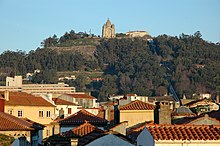
Viana do Castelo ( vee-UH-nuh doo kuhsh-TEH-loo , /vi.ˈɐ.nɐ du kɐʃ.ˈte.ɫu/) is the capital of a municipality with 314.36 km 2 (121.38 sq mi) and has some 36,750 inhabitants. The municipality borders the municipality of Caminha in the north, the municipality of Ponte de Lima in the east, the municipalities of Barcelos and Esposende in the south and the Atlantic Ocean in the west. The city's origins date back to before the Christian era, as it can be seen in the hill fort near the Basilica of Santa Luzia. It received its first foral from King Afonso III of Portugal in 1258, as well as the name Viana da Foz do Lima, because of its geographic location; in 1848 it became a city by a decree of Maria II of Portugal, and received the name of Viana do Castelo.
Visitor information [ edit ]
- 41.6911 -8.8283 1 Viana Welcome Centre ( Posto Municipal de Turismo ), Praça do Eixo Atlântico , ☏ +351 258 098 415 , [email protected] . Mar–Jun Sep Oct Tu–Su 10:00–13:00 & 14:00–18:00, closed M; Jul Aug daily 10:00–19:00; Nov–Feb Tu–Su 10:00–13:00 & 14:00–17:00 . ( updated Jul 2021 )
Get in [ edit ]
By plane [ edit ].
The closest airport is Sá Carneiro International Airport in Porto ( OPO IATA ), with frequent flights from Lisbon , Madeira , and many principal European cities. You can fly to Porto and then catch a transport to the city (see below).
By train [ edit ]
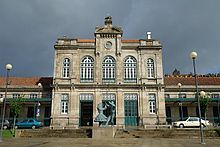
The train station of Viana do Castelo is located in this borough, and there is a train to almost every city in the country, such as Lisbon , Aveiro , Braga , Coimbra , Évora , Faro , Fátima , Figueira da Foz , Portimão , Porto , Guimarães and Guarda .
By bus [ edit ]
Some companies, such as AVIC , have connections to Porto and Lisboa .
By car [ edit ]
The two main highways through town are:
- A28 - Connects the town to Porto , Matosinhos, Leça da Palmeira, Póvoa de Varzim, Apúlia/ Barcelos , Esposende, Vila Praia de Âncora and Caminha.
- A27 - Connects the town to Ponte de Lima and Ponte da Barca.
Get around [ edit ]

On foot [ edit ]
The most obvious way to see the town is on foot. Most of the city's attractions and a large part of its shopping are found in the historic downtown, quite close to each other, and many pathways downtown are pedestrian-only.
By bicycle [ edit ]
Although there are few bicycle lanes, the city center is very bike friendly. Rentals are available in the Tourist Information Office near Praça da Liberdade. During the summer, the 2/4 seats pedal karts are also very popular.
AVIC and Transcunha city buses ply the streets.
Traffic is light, and roads are clearly marked.
Car rentals [ edit ]
- Avis Rent-a-Car , Rua de Gotim 35, tel. +351 258 817 540.
- Auto Europe Portugal , 800 780 008.
- Europcar , Praça General Barbosa 124, tel. +351 813370.
- Auto Jardim , Rua Alves Cerqueira, 71 , ☏ +351 258 847 301 .
See [ edit ]
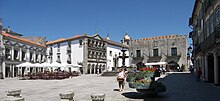
- Basilica of Santa Luzia , Mt. St. Luzia . Constructed in 1903, it was inspired by the Sacré Coeur de Montmartre in Paris . From the basilica's location on top of Mount St. Luzia, there are spectacular views of the city and the beach. The best view of the city can be seen from the pinnacle of the church, accessible from the church through an elevator or through the stairs. You can reach the basilica either by car via the Santa Luzia highway, or by taking the Santa Luzia Elevator. ( updated Jul 2021 )
- Gil Eanes Naval Museum ( on the Dock ). A floating naval hospital constructed in 1952 and which operated until 1973. It is now open to the public as a kind of museum, housing the original equipment. The ship has operation rooms, communication equipments, refrigerating chambers and a reinforced hull. It was restored by a group of locals. It was then adapted to become a youth hostel and is one of the city's biggest attractions. ( updated Jul 2021 )
- Former City Hall , Praça da República . Built in the 16th century, it is located in the Praça da República. In the facade you can see the coat of arms of the city: a boat and an armillary sphere. ( updated Jul 2021 )
- Sá Family House , Praça da República . An ancient building, also in the Praça da República, with a beautiful facade. It was projected by João Lopes, the same architect that projected the fountain in the middle of the square. Each battlement of the facade has a human renaissance figure. ( updated Jul 2021 )
- Fountain at Praça da República , Praça da República . This granite fountain, richly adorned with carved figures, was built by João Lopes in the 16th century. ( updated Jul 2021 )
- Monument to Caramuru and Paraguaçu , Praça da República . built by José Rodrigues in 2009. ( updated Jul 2021 )
- Consistory of Misericórdia , Praça da República . Situated at the Praça da República, the complex is constituted by the Misericórdia Hospital, with one of the most beautiful renaissance facades in the city, built by João Lopes, and by the Misericórdia Church, remodeled in the 18th century, with beautiful tiles inside. ( updated Jul 2021 )
- Cathedral , Largo da Matriz . The cathedral is Gothic in style, with Galician influence, and has two large towers. It has a very beautiful interior. ( updated Jul 2021 )
- Fort of Santiago da Barra , Campo do Castelo . Consisting of an quadrangular outer wall with the Roqueta tower in the center, this fort was constructed during the reign of Dom Manuel I. The tower displays the coat of arms of the city, flanked by an armillary sphere and by the Order of Christ Cross. ( updated Jul 2021 )
- Church of St. Domingos , Largo de São Domingos . The church of the old Santa Cruz convents, founded by Frei Bartolomeu dos Mártires. ( updated Jul 2021 )
- Viana Municipal Museum , Largo de São Domingos . ( updated Jul 2021 )
- Museu do Traje , This is a museum dedicated to traditional Portuguese clothing, with a particular focus on the costumes from the Viana do Castelo region. You can learn about the history and significance of the costumes, as well as see some beautiful examples.
Do [ edit ]
- Beach - most beaches along the coast line have Blue Flag classification and start not more than a 10 minute drive from the city center, so make sure you take your time to enjoy one of the best things the region has to offer. One of the most popular beaches is Praia do Cabedelo, known for its great surfing conditions, on the south bank of the Lima River. It has a long stretch of golden sand, clear waters, and excellent facilities. Another popular beach is Praia do Norte, on the north bank of the Lima River. It is a long, wide beach with soft sand, calm waters, and good facilities, including showers, toilets, and a beach bar.
- Hiking - the foothills of Viana Do Castelo have some hiking paths. You can get maps from the tourist information office.
- Museums - Viana do Castelo is the capital of gold of Portugal. You may visit a privately—owned gold museum with some characteristic exhibits of the Minho area. The most characteristic technique of working the gold in Viana do Castelo is filigree and you have excellent examples in exhibition there.
Buy [ edit ]
- Viana crockery . The most traditional craft of the city is sold in many local shops, as well as in the factory in Meadela. The Viana Municipal Museum, in the Palacete Barbosa Maciel, hosts a vast collection of it as well.
- Filagree pendants
Eat [ edit ]
Local specialties include bacalhau à margarida da praça (a cod dish), pescada Vianense (local fish), and caldo verde (green soup).
Budget [ edit ]
- 41.6915 -8.829 1 Zé Natário , Avenida dos Combatentes da Grande Guerra 20 , ☏ +351 258 826 856 , [email protected] . Su–F 08:00–00:00, Su 8:00–20:00 . Bolas de Berlin from the pastry shop Zé Natário are one of the welcome cards of the town. They are a made out of a bun of sweet dough that is baked in the oven then covered on sugar frosting powder and cinnamon, with a filling on sweet egg cream in the middle. Expect queues of 15 to 30 mins (that can even grow outside the shop) at the time the batches are coming from the oven. There are some other traditional sweets from the region easily available, but make sure you don't miss Natário's bolas de berlin. ( updated Apr 2021 )
- 41.6902 -8.8359 2 Taberna do Valentim , Avenida Campo do Castelo 45 , ☏ +351 258 827 505 . M–Sa 12:00–14:30 & 19:30–21:30, closed Su . Specializing in local fish. ( updated Apr 2021 )
- 41.708 -8.8107 3 As Quatro Colunas , Rua João Paulo II 231 , ☏ +351 258 845 425 . M W–Sa 12:00–15:00 & 19:00–23:00, Su 12:00–15:00, closed Tu . €15-25 . ( updated Apr 2021 )
- 41.6911 -8.8292 4 Restaurante Astúrias , Rua Alves Cerqueira 21 , ☏ +351 258 823 814 . Tu–Su 10:00–00:00, closed M . ( updated Apr 2021 )
- 41.6941 -8.8258 5 Restaurante Átrio , Rua da Gramática 77 , ☏ +351 258 823 944 . ( updated Apr 2021 )
- 41.6922 -8.827 6 Restaurante Covas , Rua Prior do Crato 41 , ☏ +351 258 828 376 . Su–F 12:00–15:00 & 19:00–22:00, closed Sa . ( updated Apr 2021 )
Mid-range [ edit ]
- 41.6913 -8.8289 7 Casa D'Armas , Largo 5 de Outubro 30 , ☏ +351 258 824 999 , [email protected] . 12:30–15:00 & 19:30–23:00, closed W except Jul Aug . Splendid seafood restaurant on the banks of the river. ( updated Apr 2021 )
- 41.6939 -8.8274 8 Restaurante Cozinha das Malheiras , Rua Gago Coutinho 19 , ☏ +351 258 823 680 . 19:00–22:00 daily . Regional cuisine in historic downtown, famous for its rojões , as well as for its cabrito (goat) and its seafood. ( updated Apr 2021 )
- 41.6916 -8.8282 9 Casa de Pasto Maria de Perre , Rua de Viana 118 , ☏ +351 258 822 410 , [email protected] . Tu–Su 12:00–15:00, 19:00–23:00, closed M . ( updated Apr 2021 )
- 41.7095 -8.7723 10 Restaurante Camelo , Rua de Santa Marta 119 (EN 202), Santa Marta de Portuzelo ( on the outskirts of town ), ☏ +351 258 839 090 . Tu–Su 12:00–15:00 & 19:00–22:30, closed M . One of the best places to try local cuisine. ( updated Apr 2021 )
- 41.6956 -8.8208 11 Restaurante Náutico , Praça da Galiza 100 , ☏ +351 258 822 330 . Th–Tu 09:30–22:00, closed W . ( updated Apr 2021 )
- 41.6916 -8.8341 12 Restaurante O Pescador , Largo de São Domingos 35 , ☏ +351 258 826 039 , [email protected] . Tu–Sa 12:00–15:00 & 19:00–22:00, Su 12:00–15:00, closed M . €9-27 . ( updated Apr 2021 )
Splurge [ edit ]
- 41.6945 -8.8314 13 Restaurante da Casa Melo Alvim , Avenida Conde da Carreira 28 , ☏ +351 258 808 200 . ( updated Apr 2021 )
Drink [ edit ]
Sleep [ edit ].
- 41.6915 -8.828 1 Margarida da Praça , Largo 5 de Outubro 58 , ☏ +351 258 809 630 , [email protected] .
- 41.724689 -8.767793 2 Quinta do Bento Novo - Casa de Campo - Turismo Rural , Caminho da Cabine, 187,Perre, 4925-581 Viana do Castelo, Portugal ( Perre ), ☏ +351 962 823 186 , [email protected] . Check-in: 15:30 , check-out: 12:30 . ( updated Feb 2016 )
- 41.7349 -8.680512 3 Paço de Lanheses , Lanheses , ☏ +351 258731134 , [email protected] .
Connect [ edit ]
Go next [ edit ].
- Has custom banner
- Articles needing translation from Portuguese
- Has map markers
- Has mapframe
- See listing with no coordinates
- Has routebox
- All destination articles
- Usable cities
- Usable articles
- City articles
- Has Geo parameter
- Pages with maps
Navigation menu
Explore Viana do Castelo
Plan your trip to viana do castelo: best of viana do castelo tourism.

Essential Viana do Castelo

Viana do Castelo Is Great For
Nature and wildlife tours.

Art & history
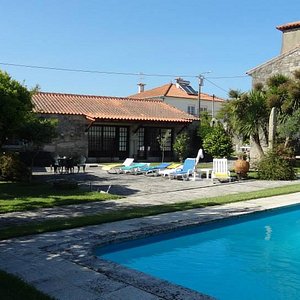
Outdoor Activities

Shopaholics

Eat & drink

- Pousada Viana do Castelo
- Hotel FeelViana
- Casa Melo Alvim Hotel
- Flor de Sal Hotel
- AP Dona Aninhas - Viana do Castelo
- Cerqueira's Lounge & Restaurant
- Tasquinha da Linda
- O Botequim - Restaurante
- Restaurante Ó Viana Praça
- Santuário de Santa Luzia
- Praia do Cabedelo
- O Navio Gil Eannes
- Citania de Santa Luzia
- Igreja da Misericordia
- Viana do Castelo Horseback Riding Tour with Transport from Porto / Braga
- 4X4 Tour – Mountain - Viana do Castelo - Serra Sta. Lucia, Serra D'Arga
- Tree and Slide Adventure in Lamas de Mouro at PNPG
- Sailboat Experience in Viana do Castelo
- Serra D’Arga Hike, Dive & Dine Like A Local in a Secret Spot
- Miranda do Douro
Viana do Castelo
- Corvo, The Crow Island of the Azores
- Faial, The Blue Island of Azores
- Flores, The Yellow Island of Azores
- Graciosa, The White Island of the Azores
- Pico, The Black Island of Azores
- Santa Maria, The Sunshine Island of the Azores
- São Jorge, The Brown Island of Azores
- São Miguel, The Green Island of Azores
- Terceira Island, The Festive Island of Azores
- Central Portugal
- Lisbon and Tagus Valley
- Porto & Northern Portugal
- Portugal Survival Guide
- Entering Portugal
- Guide to Learning Portuguese
- Portugal Holidays
- Average Temperatures in Portugal
- Weather in Portugal
- Portugal Visa Guide
- Golden Visa Portugal
- Portugal Digital Nomad Visa 2023
- D7 Visa Guide
- D2 Visa Guide
- Food & Drink
- History and Culture

What Are Conventual Sweets? A Guide to Portugal’s Delicious Desserts
Countertop dining restaurants: the 28 best counters in lisbon, where to eat on new year’s eve in lisbon, where to eat in lisbon on christmas day, 8 portuguese cheeses to taste on your next visit, two days to freedom – april 25th and the carnation revolution, the greatest portuguese explorers, romanesque architecture in portugal – characteristics and landmarks, manueline architecture in portugal – 9 iconic manueline landmarks, 12 amazing facts about cristiano ronaldo’s workout.
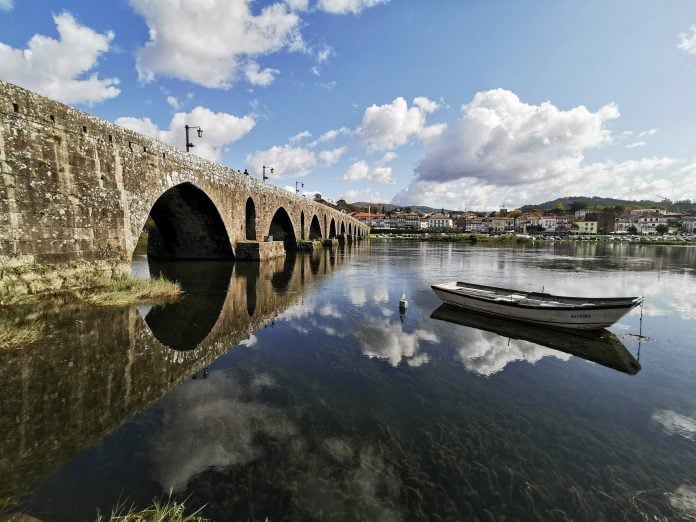
Located on the Western coast of Northern Portugal , the magnificent Viana do Castelo is one of Portugal’s main hidden gems. It is renowned for its scenic downtown, 19th-century boulevards, narrow lanes lined with splendid Manueline houses, and its nonpareil hill-perched gargantuan basilica, Santuário de Santa Luzia. Head here not only to uncover its architectural grandeur but also to profit from its briny seaside charm and its paradisiac beaches.

What to do in Viana do Castelo
Pay a visit to santuario de santa luzia.
Go to the revivalist Santuario de Santa Luzia, one of Europe’s most grand cathedrals. The 1909 house of worship features the Iberian Peninsula’s largest rose windows (Europe’s second-largest), a humongous dome, and a spacious altar with a beautiful sanctuary.
Go to the Monta de Santa Luzia, where the basilica is located, by car or funicular; or climb the steps to get there. Here you can delight in a gob-smacking view over Viana do Castelo, rated the world’s third most beautiful panorama by National Geographic Magazine.
Make a trip to Viana do Castelo’s Old Town
Head to the town’s scenic old town with its quiescent narrow pedestrian lanes, spacious plazas, and many beautiful churches. Here you can not only gaze at its architectural grandeur and take in the peaceful charm of an old seaside town, but also plonk down at a bakery or a cafe to eat the famous Portuguese desserts over a cup of coffee or eat a slap-up dinner at a restaurant’s veranda.
Go kitesurfing at Viana do Castelo’s marvelous beaches
One of the best things to do in Viana do Castelo is to go kite-surfing on its Cabedelo Beach, one of Europe’s top emerging kite-sports spots. Here you will not only find wind and waves perfect for a zippy kite-surfing ride but also can bask in the tender Portuguese sunshine and take pleasure in its warm sand, if traveling in summer. Keep in mind that there is a great wooden walkway to promenade nonchalantly along the beautiful stretch of sand.
Walk to St Mary the Great’s Cathedral of Viana do Castelo
Known as the Cathedral of Saint Mary the Great, the place of worship is one of Vina do Castelo’s main landmarks. Built in the 15th century, it is one of the prime examples of Portuguese Romanesque architecture and features a magnificent altar and a nave and a truly exquisite rose window. Head to this fortress and church, oozing the medieval charm and pointing to the centuries-old history of Viana do Castelo.
Best Tours & Experiences in Viana do Castelo
What makes viana do castelo special.
Viana do Castelo not only abounds in architectural marvels but is also a great beach destination. It is one of Europe’s emerging kitesurfing Meccas thanks to its propitious winds and great surf. The sand stretches for miles and offers splendid views over the Atlantic.
To see the Viana do Castelo coastline from above, head to Monta de Santa Luzia, where is perched one of Europe’s most striking places of worship, Santuário de Santa Luzia.
What to eat in Viana do Castelo
Viana do Castelo offers plenty of local Portuguese fare such as one-of-its-kind seafood. A maritime region Viana do Castelo is known for its sea delicacies like oysters, cod, and sardines. Head to its Peixaria Costa Norte, a seafood market for the freshest sea catch. Also, don’t forget to visit its great Mercado Municipal.
When to visit Viana do Castelo
Travel to Viana do Castelo in April-September for you to profit from kite-surfing or sun-bathing on its long sandy stretches. Also, keep in mind that the twentieth of August is the day of Our Lady of Sorrow, celebrated since 1744, when fishermen started praying to Saint Mary to call upon her to make sure that the sea won’t be rough. Note that since April-September is a high season the price for accommodation can be slightly higher.
Traveling to Viana do Castelo is a great way to combine the scenic medieval charm of its downtown and bask in the sun on its great beaches. Don’t miss out on the medieval architecture in its old town such as Saint Mary the Great Church, or the revivalist Santuário de Santa Luzia. Travel here to make your Portugal holiday truly unforgettable and sun-lit.
⬇️Please share your favorite activities and things to do in Viana do Castelo in the comments⬇️
Receive the latest news, travel information, stories, offers and more!
Join our FB group Portugal Travel & Living for all things Portugal and news updates
Related articles, time required to get portuguese citizenship reduced by 12-18 months, spain vs portugal: which golden visa program is best, most popular, latest articles, your guide to the portuguese toll road system, 7 places to live in portugal that are still affordable – 2024 edition, looking for things to do in lisbon in may 2024 check this out, immersive museum dedicated to the life of amália rodrigues opening in lisbon on may 1st, lisbon-based galp makes a major oil discovery in namibia.
Portugal.com is an independently owned and operated tourism portal about Portugal. All information should be considered informational and for entertainment purposes. Some content may be promotional and/or have affiliate relationships where Portugal.com earns revenue promoting the content.
Want to advertise on Portugal.com? Would you like to write for us? Something else? Please feel free to Contact Us!
© Portugal.com
- Privacy Policy

Subscribe to our newsletter below to get the latest news, reviews, info and more!
Thanks, I’m not interested
11.77 ℃ London
Friday, 3 May 2024
Follow us on social media

Earth's Attractions – travel guides by locals, travel itineraries, travel tips, and more
Insider travel guides, travel tips, and travel itineraries – Amazing places to see in the world!
The ultimate guide to visiting Castelo de São Jorge, Lisbon
Castelo de São Jorge is one of the best places to visit in Lisbon , Portugal. As it’s one of the oldest buildings in the city and as there are many things to do at the São Jorge Castle in Lisbon, it’s no surprise that many tourists visit it each year.
This article is your ultimate guide to visiting Castelo de São Jorge, Lisbon. It includes everything you need to know about São Jorge Castle from how to get to Castelo de São Jorge to when to visit the São Jorge Castle and things to do at Lisbon Castle. All the recommendations are offered by Joanne from Sunsets and Roller Coasters.
Castelo de São Jorge sits on a large hill, overseeing the city of Lisbon, Portugal. With amazing views, beautiful peacocks and stunning medieval castle walls, it’s no surprise that Castelo de São Jorge is one of Lisbon’s most popular attractions.
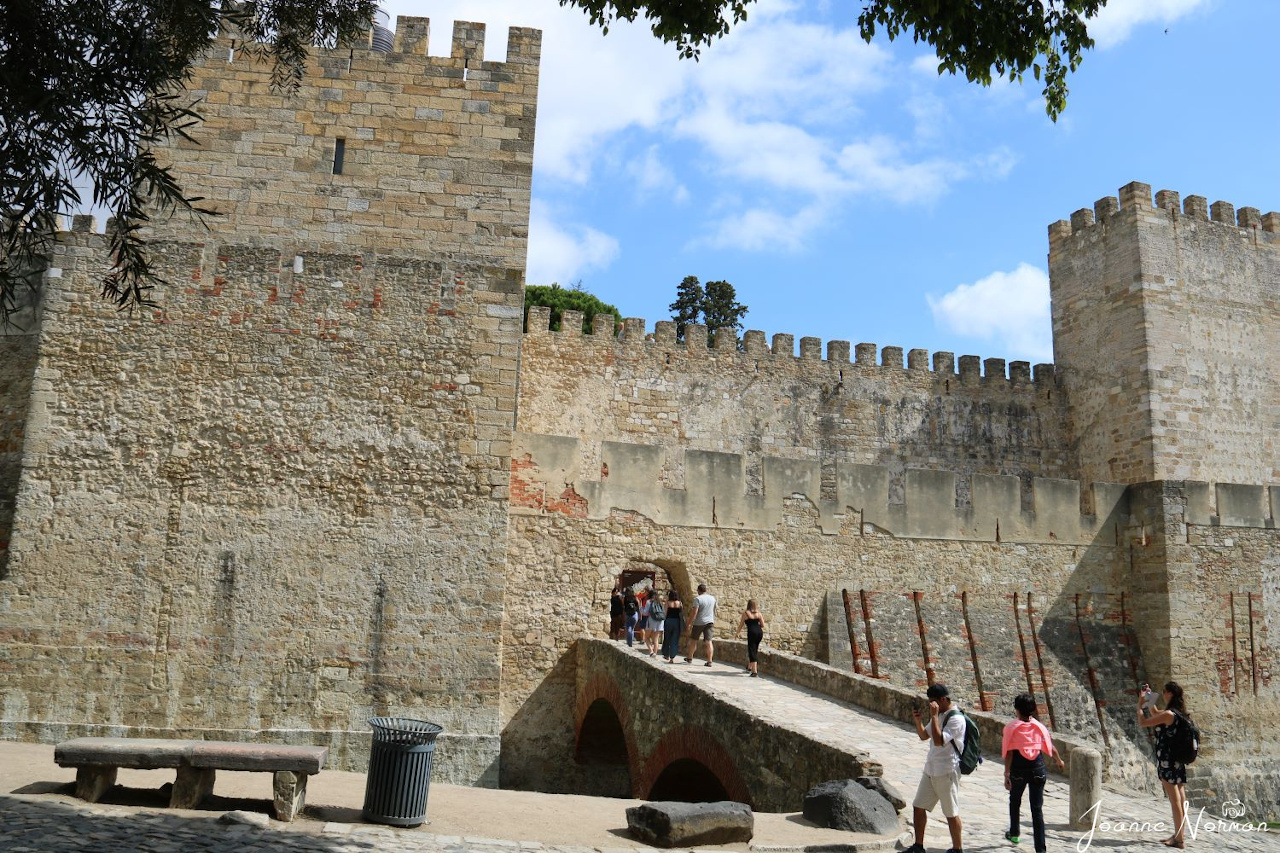
While only the walls and courtyards remain today, a castle has been on this spot for over 2000 years and over time has housed Romans, Moors, Portuguese and more. The actual castle which remains now has existed since the 11th century.
When the Portuguese took the castle from the Moors in the early 1200s, it became a royal residence which, over the next several hundred years hosted many royal families and explorers, including Vasco de Gama. That said, for most of its life, Castelo de São Jorge was not a residential palace. Rather, it had more of a military purpose.
Even as a residence, its primary purpose was to protect Portuguese royalty. Over time, it became a military barracks, prison and military hospital. It was heavily damaged during the famous 1755 earthquake that destroyed most of Lisbon.
The Castelo de São Jorge was restored in the early 1900s using the layout of the castle as it existed in the 1100s. Visiting Lisbon Castle will be a memorable experience as there are a lot of fun things to see and do here.
Where is Castelo de São Jorge and how to get to Lisbon Castle
The first item on this list of useful things to know before visiting Castelo de São Jorge is where is this located.
Set on a hill atop Lisbon’s beautiful Alfama district of Lisbon, Castelo de São Jorge can be reached quite easily even if you don’t want to trek up the hills of Alfama.
It’s possible to walk to Castelo de São Jorge from Chiado and Baixa without tackling the steep hills if you take advantage of Lisbon’s system of “elevadors”.
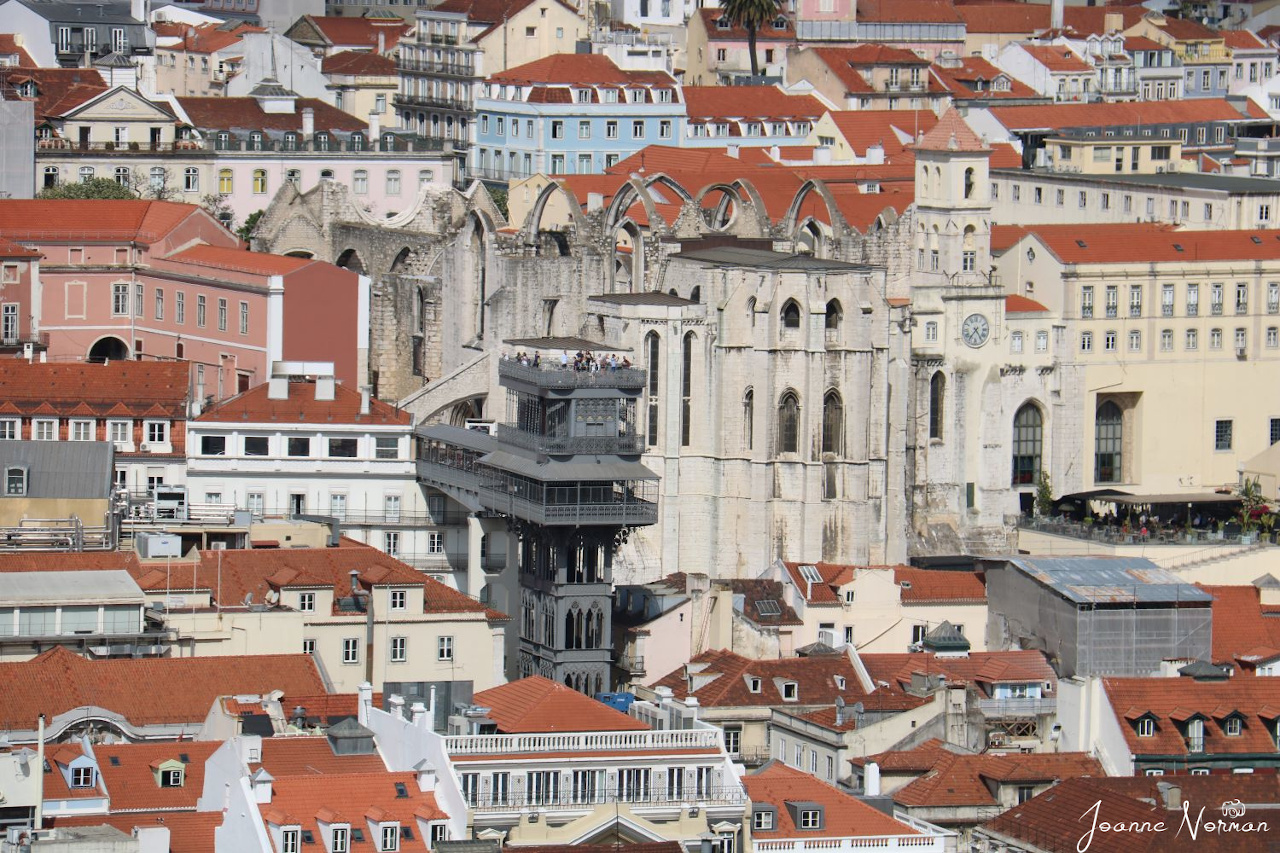
These elevadors link lower elevation of Baixa with the Castelo at a much higher elevation. The Castelo Elevador is a two-lift system. The first elevador is located at Rua dos Fanqueiros 170 and takes people up to Rua da Madalena. Upon leaving, walk directly towards Pingo Doce supermarket.
Along the right side of the entrance, you’ll find the second elevador which brings passengers to Costa do Castelo which is about a 5-minute walk to São Jorge Castle.
If you’d prefer not to walk or if you have mobility issues, there are a few options available. Lisbon’s tram system is fantastic. Both Tram 28 and tram 12 will bring you close to Castelo de São Jorge requiring just a short walk to the castle entrance.
Bus 737 will bring you very close to the castle. You could also take a tuk-tuk which can easily skip through the narrow streets of Alfama to the castle. Finally, it’s always possible to take Uber or a taxi which will get you right to the entrance.
Tickets for the Castle
The program of the Lisbon Castle is next on this article on what you need to know before visiting Sao Jorge Castle.
Castelo de São Jorge is open at 9:00, 7 days a week, except May 1, December 24, 25, 31 and January 1.
Tickets range from 5 euros to 10 euros, depending on age, with children under 12, Lisbon residents and some visitors of specific groups, free of charge. Full details can be found on the official website for the Castelo de São Jorge.
Group tours of the castle grounds, archaeological sight and camera obscura are available throughout the day in English, Portuguese and Spanish.
When to visit Castelo de São Jorge
Summer is the best season to visit Lisbon Castle. Castelo de São Jorge can get very busy during peak tourist season. To avoid lines and enjoy your visit more in summer months, we recommend that visitors arrive early, preferably at the opening, or later in the evening.
A later visit will also allow you to catch a beautiful sunset from the castle courtyard!
That said, we recommend visiting Castelo de São Jorge in the morning so that you can spend as much time as you’d like exploring the castle grounds. It’s easy to spend an entire morning at Castelo de São Jorge.
After your morning, we suggest spending the rest of your day in Alfama , enjoying a traditional Portuguese lunch and exploring the narrow streets and historic sights.
What to see and do at Castelo de São Jorge
As mentioned, there are many things to do at Castelo de São Jorge. All of these activities are detailed below so that this ultimate guide to visiting Lisbon Castle will provide you all the necessary information.
Castle Terrace
Just inside the entrance gates is the castle terrace. The expansive terrace overlooks the city and provides one of the most beautiful views in Lisbon. From here you can see across the orange roofs of Baixa and have lovely views of the Convento de Carmo and Elevador de Santa Justa.
The Christo Rei statue can also be seen across the flowing River Tejo along with the 25 de Avril Bridge. The terrace has several kiosks selling water, wine and coffee and many benches to enjoy the amazing view. So, make sure to stop at this terrace on your visit to Castelo de São Jorge.
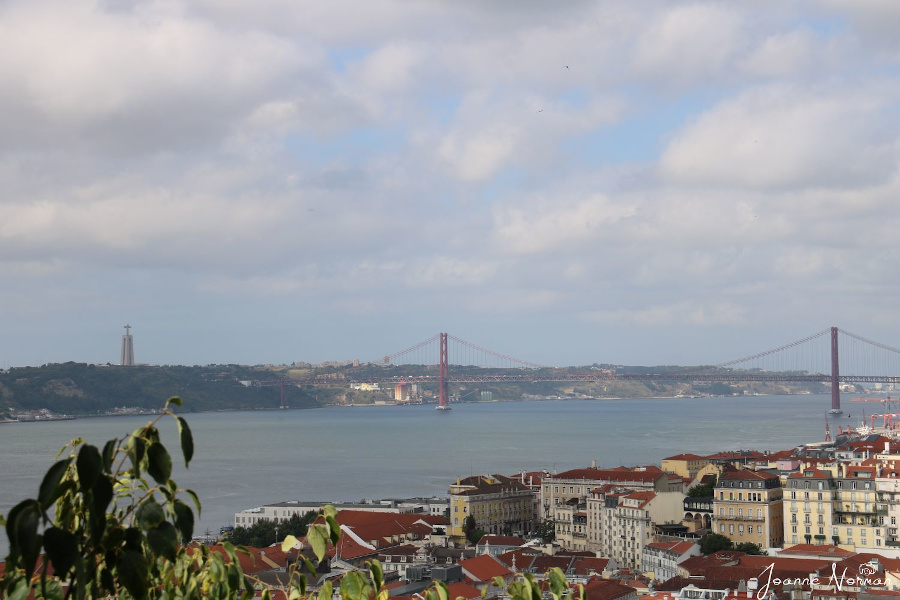
Royal Statue
In the middle of the castle terrace is a bronze statue of Dom Afonso Henriques, the first King of Portugal. He took the castle from the moors in the 12th century with the help of British crusader knights.
Wander past the castle terrace and along the outer wall, through stone archways and olive trees, to find the many cannons protecting the city. Kids will love playing with and climbing on the cannons.
Take a moment to admire the view and allow yourself to step back in time while visiting Lisbon Castle.
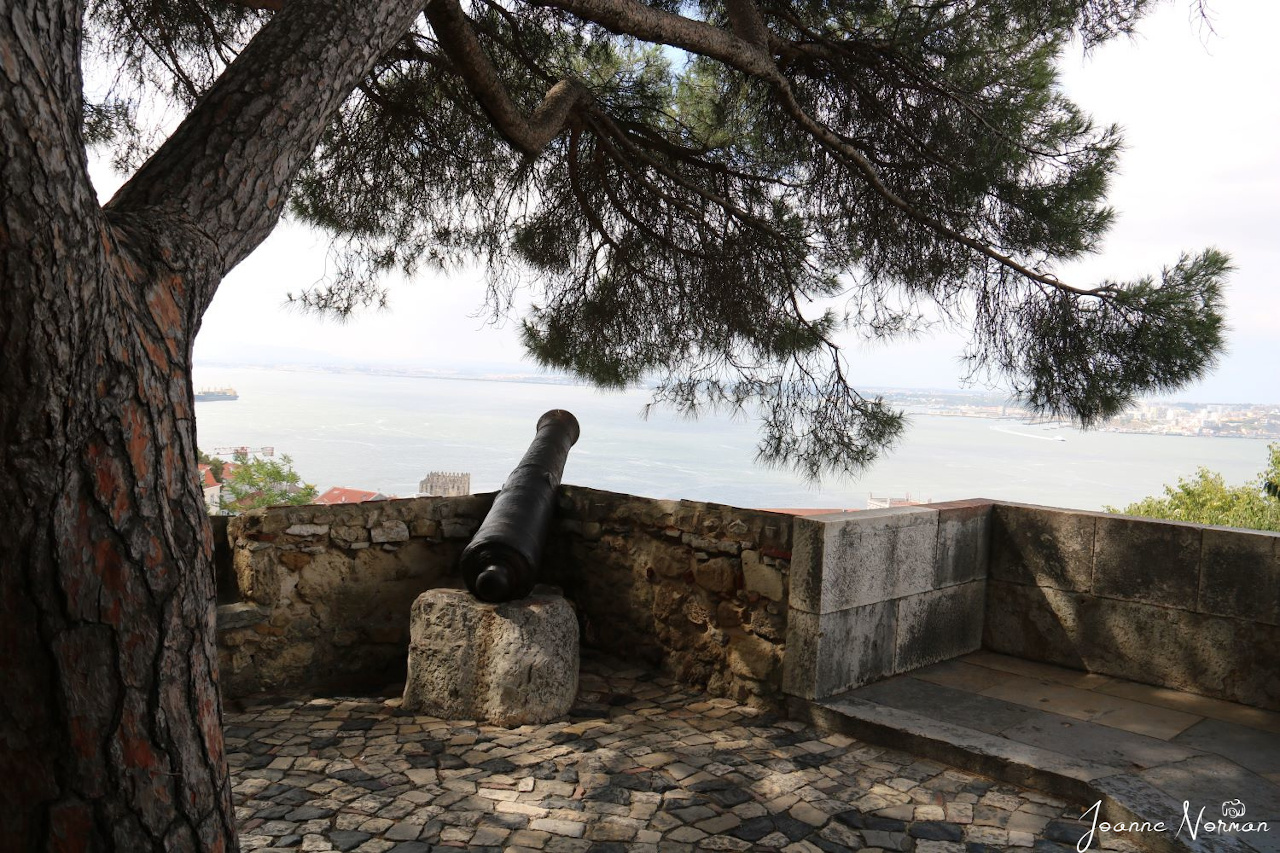
The castle is, of course, the main place to visit on the castle grounds.
This amazing stone structure with square structured edges is reminiscent of every castle you’ve thought of as a child. Take your time and explore throughout this amazing structure and imagine the stories it could tell.
As you enter the main castle entrance, to your immediate left is a set of stone stairs. These won’t bring you around the main castle area but it will bring you some place many visitors don’t get a chance to see. Follow the wall and you will arrive at the area where archaeological exploration continues.
Return to where you started and descend those stone stairs. Continue onward and you’ll find yourself in a large open courtyard surrounded by stone walls.
On each side is a separate set of stone stairs that will take you up to the main castle walls. The stairs are steep but they’re worth the climb.
Wander the walls, climb the many towers and enjoy the incredible views. This experience is not just for kids!! In the Tower of Ulysses, you’ll find the Camera Obscura.
This area is only accessible with a guide so you’ll want to check the schedule when you purchase your tickets. The periscope gives you a 360 degree view of Lisbon that is absolutely incredible
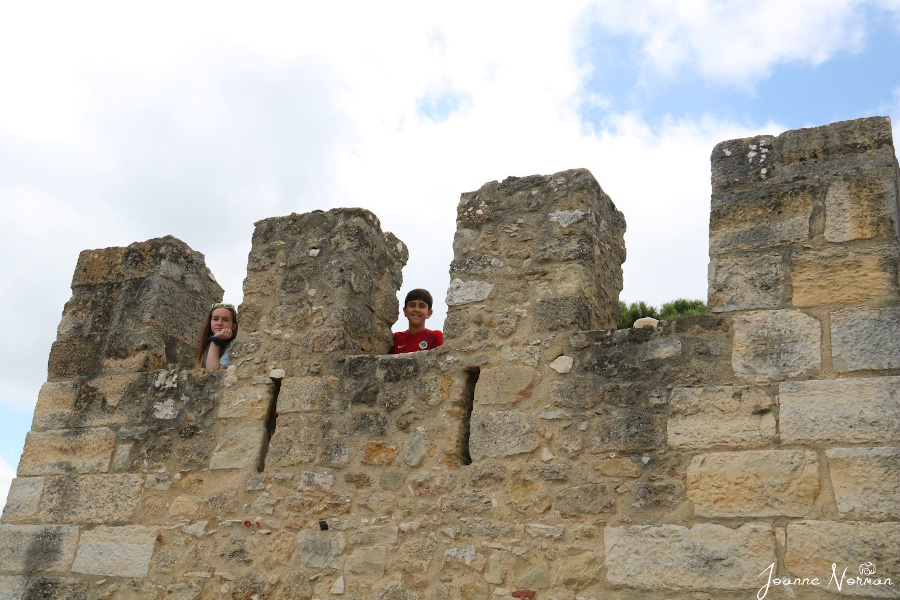
Castle Museum
The next place on this list of best things to do at Sao Jorge Castle in Lisbon is a visit to the castle museum.
The permanent exhibition is located near the castle’s café. It is free to enter for those with a ticket to the castle grounds. It houses archaeological finds from the castle grounds.
While there is an emphasis on the time frame when the Moors occupied the castle in the 11th century, it also has information and artifacts dating back to the 7th century B.C.
Sao Jorge Castle Courtyards
As you explore the castle grounds, you’ll find several beautiful courtyards filled with beautiful flowers and colourful peacocks – perfect places to visit at Lisbon Castle.
The courtyards are wonderful spots to take a break and relax. The peacocks are plentiful and fun to watch for children and adults alike.
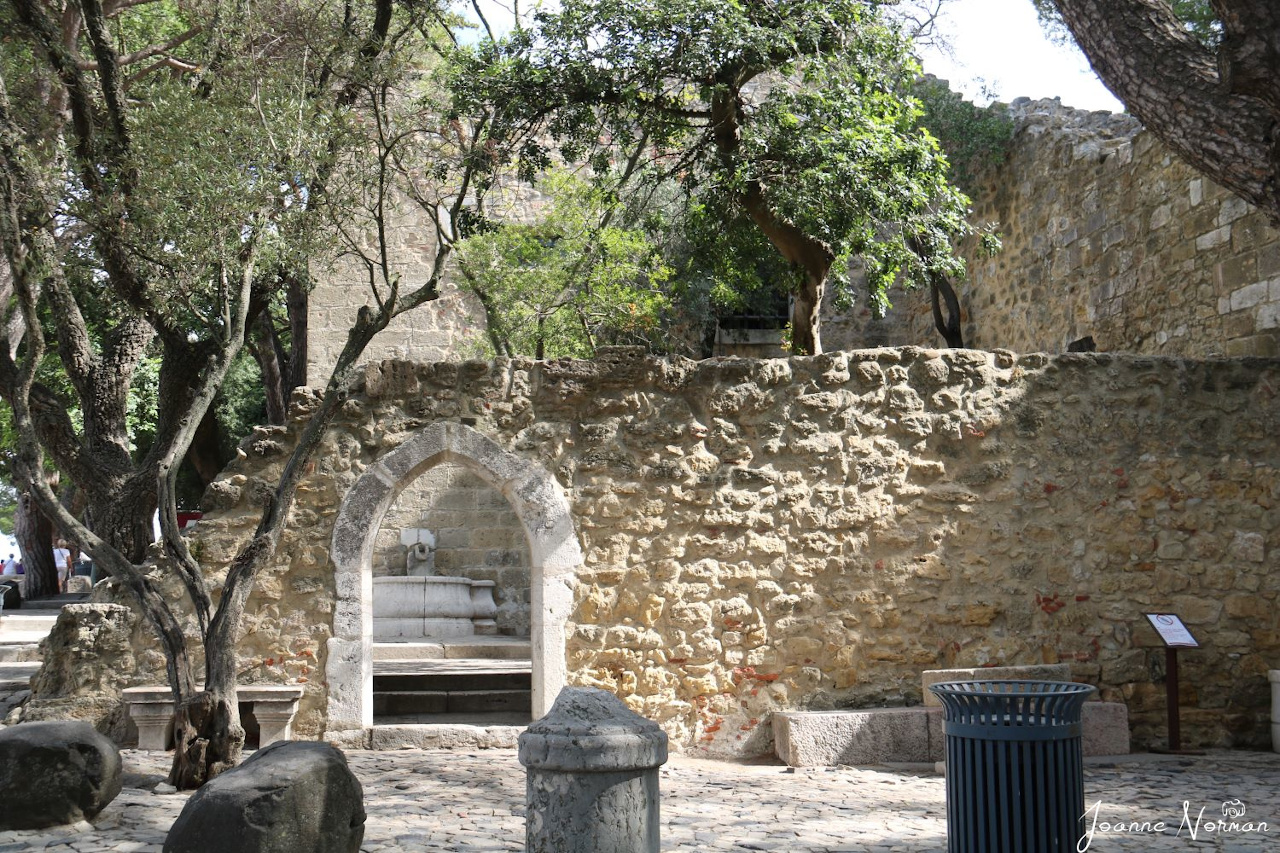
Insider tips for the São Jorge Castle
This ultimate guide to visiting Castelo de São Jorge, Lisbon wouldn’t be complete without some insider tips for Lisbon Castle. Make sure you read them all so that your visit to Sao Jorge Castle is perfect!
If you take the elevador near Pingo Doce to get to the Castelo de São Jorge, make sure to turn left once you leave the elevador . While this is in the opposite direction of the castle, you’ll be rewarded with an incredible view.
The terrace of the Restaurant Zambeze is accessible to the public and it’s well worth the detour!
As you enter the castle gates after getting your tickets, you’ll find the toilets on the right (left if you are leaving the castle area) beyond a fountain and beautiful purple trees.
There are benches around and the small courtyard area is just beautiful. It’s very quiet so if you’re looking for the facilities or simply would like a quiet place to rest, this is your spot.
Make sure to take the time to watch the peacocks during your visit. Did you know they can fly?! I had no idea. It was amazing to watch them wandering, flying and nesting in the nearby trees.
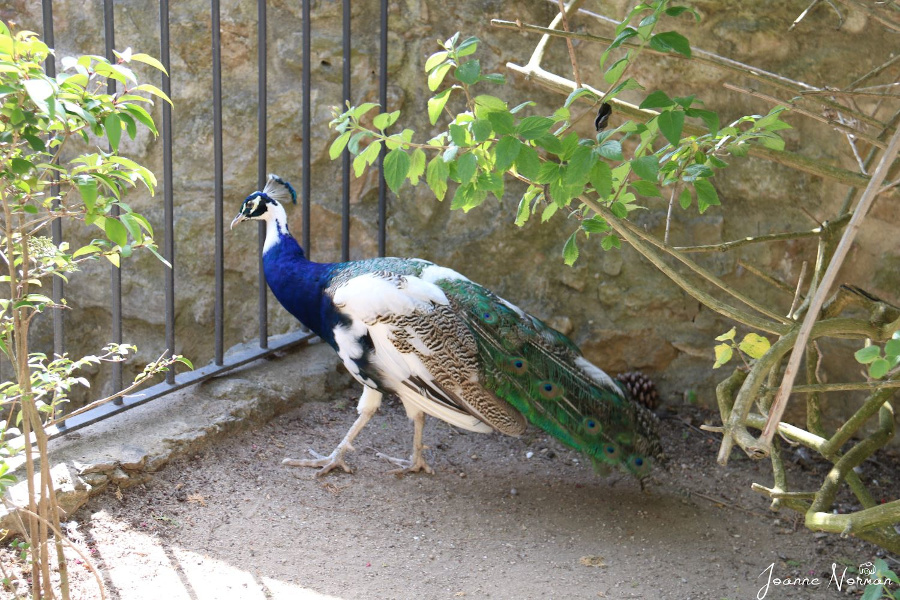
As you get closer to the castle entrance, you’ll find the castle café. We had coffee on arrival at one of the terrace kiosks and again at the café. The coffee and coffee options at the café are fantastic! Definitely get your coffee here if you have a chance.
Castelo de São Jorge is actually named after Saint George, the patron saint of England! Strange? Not really. English crusaders helped Dom Afonso Henriques take the castle from the Moors in the 1100s.
With this past history, in the late 14th century, King John I dedicated the castle to Saint George after he married the English princess, Philippa of Lancaster.
Just outside the castle grounds is what used to be the castle village where the workmen and servants lived. This incredible area is now filled with souvenir shops and cafes. It’s a cute area to explore.
We found the greatest cork shop there. Have a look for the short doors. Do you know why they’re so small? Because when they were built, that was the average height of those that lived there!!!
Even with just one day in Lisbon you should visit Castelo de São Jorge. It covers everything that Lisbon is known for … incredible history and beautiful views!
And, if you have more time on your Lisbon vacation, include Belem on your Lisbon itinerary too as there are plenty of attractions in Belem, Lisbon that you won’t want to miss.
About the author:
Joanne is a proud Canadian mom of three with a passion for travel and photography. She has been travelling around the world with her husband and three kids, now teens and pre-teens, since they were babies. Her blog, Sunsets and Roller Coasters , is filled with recommended destinations and detailed information on local activities, travel itineraries and travel tips. You can also touch base with her on Facebook , Pinterest , Instagram , and Twitter .
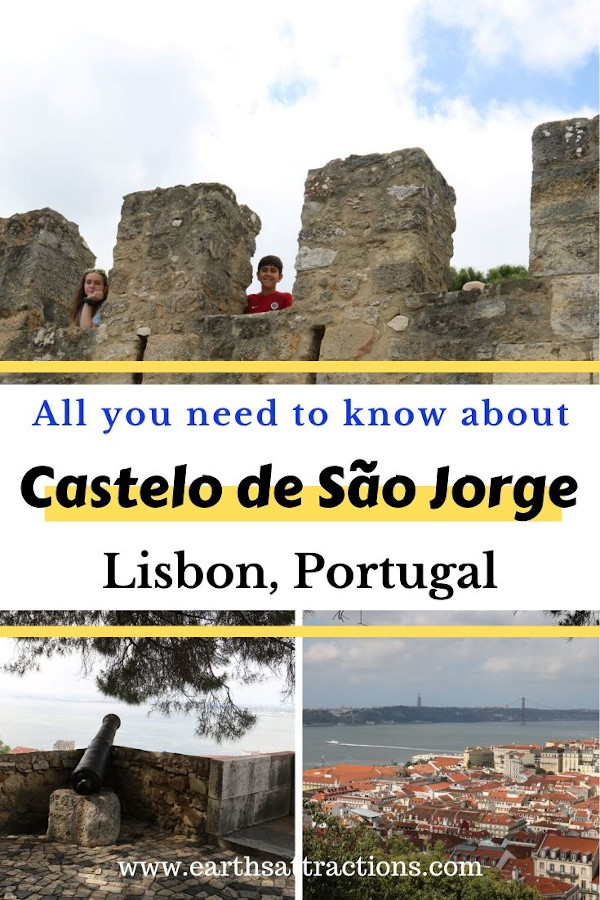
More amazing articles for you:
Related posts.
Hidden Beauty Spots in Wales Worth a Visit
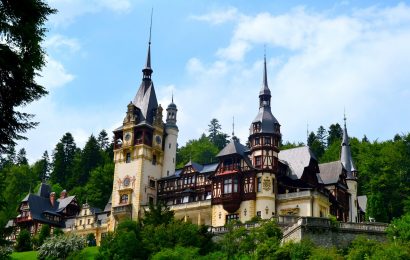
Top romantic places in Romania for a perfect Valentine’s Day (and not only)
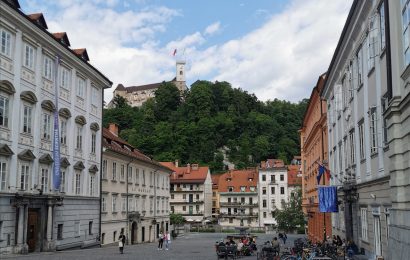
Local’s guide to Ljubljana, Slovenia with the things to do in Ljubljana
Leave a reply cancel reply.
Your email address will not be published. Required fields are marked *
Save my name, email, and website in this browser for the next time I comment.
Currently you have JavaScript disabled. In order to post comments, please make sure JavaScript and Cookies are enabled, and reload the page. Click here for instructions on how to enable JavaScript in your browser.
- International edition
- Australia edition
- Europe edition

Hidden Portugal: where to stay and what to do off the beaten track
Hauntingly beautiful villages, thermal springs, unspoilt beaches, fairytale castles ... Portugal has so much more to offer than the bustle of the Algarve Hidden … Greece | Croatia | Italy
B ritain’s love affair with its oldest ally is set to be reignited this summer. The UK is Portugal’s biggest overseas tourist market, and it became the first EU country to allow Britons fast-tracked entry, post-Brexit, via electronic passport gates. Thanks to the easing of Covid travel restrictions, hundreds of thousands of British travellers are expected to head back there this summer, drawn mainly by its sunny south coast. But Portugal has so much more to offer than the beaches and bars of the Algarve.

Marvão, Alentejo
Tourists driving south to the Algarve or east to the Spanish border may think of the Alentejo (meaning “beyond the Tagus” river) as an endless stretch of cork oaks and olive trees that takes forever to cross. Barrel across its vast plains and the only thing you’ll notice is that it is big; Alentejo is the largest and flattest of Portugal’s provinces, occupying more than a third of the mainland.
But in its north-east corner, close to the Spanish border, the Serra de São Mamede is a mountain range that defies this idea of the Alentejo (there might even be snow in the winter). Some of the towns in this range have breathtaking settings, particularly Marvão, a serene and storied medieval village dramatically set 862 metres high on a granite crag. With its narrow lanes, whitewashed houses and formidable castle, Marvão offers views across the Alentejo plains and over the mountains into Spain.
Nearby Castelo de Vide is another beguiling walled town, its castle rising above the town’s dazzlingly white houses, flower-lined cobbled lanes and peaceful squares. Locals are proud of the crystal-clear mineral water that spouts out of the pretty public fountains in this former Roman spa town.
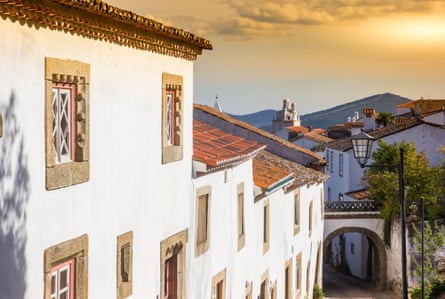
Those in search of a beautifully unspoilt Portugal will find much to love in this part of the country, where life eases along at a slower tempo. And there is no better way to soak in the mood than taking one of the two scenic routes offered by Rail Bike Marvão (from €20) along a disused railway line. Between June and September, the company runs “full moon” night tours three times a month (€35 including drinks, petiscos and live music). Visitors use customised, two-person pedal-powered rail bikes to zigzag through megaliths in the stunning Serra de São Mamede natural park with views over Marvão and Castelo de Vide.
Where to stay

Launched last year, Gavião Nature Village is near the sheltered river beach of Alamal and makes a great base for adventures in the region. As well as 13 glamping tents (doubles from €145), it has 10 lovely cork eco-shelters that sleep two, four or eight, and the restaurant affords a fine view of 12th-century Belver castle. Further south, Pousada Mosteiro do Crato (doubles from €130), in Flor da Rosa, is a converted 14th-century monastery with a stunning pool.
Ponte De Lima, Alto Minho

Portuguese holidaymakers are rediscovering Alto Minho, the country’s greenest area, tucked away in its north-west corner. Its rich soil, ample rainfall and thermal springs keep it perennially verdant, unlike much of the rest of the country. On a hot summer’s day there is little better than taking a shady walk in the hills and enjoying a chilled bottle of vinho verde , the distinctive white wine of the region. Green only in name, it is slightly effervescent, with a fruity nose and acidic bite, making it one of the great delights of travelling in northern Portugal.
Alto Minho’s main town is Viana do Castelo, in a delightful setting on the Lima estuary. Its medieval centre has elaborate mansions, windy streets and pretty squares. It makes a great base for exploring the Atlantic coast; the unspoilt beaches of Cabedelo and Moledo are popular with locals, who regularly brave the cold Atlantic waters.

But the highlight of the region is Ponte de Lima, a half-hour drive east from Viana do Castelo. This market town is one of the oldest and loveliest in Portugal, yet it sees comparatively few visitors. Built along the mellow banks of the Lima, the town is named after its elegant medieval bridge; five of the bridge’s 13 stone arches date back to Roman times.
The small, historic centre with winding alleys has cafes and mansions, but it’s also worth seeking out the romance of Ponte de Lima’s leafy outskirts. Centro Aventura organises guided kayak and paddle trips (from €30), and there are eco-trails and bike paths on both sides of the river.
Further afield, the delightful Lima valley is sprinkled with ancient towns, historic manor houses, Romanesque churches and lush vineyards. Historic Quinta do Ameal , one of the top vinho verde producers, offers tastings and tours (€25) of the attractive vineyard and winery, only 15 minutes’ drive from Ponte de Lima.

Viana do Castelo was an important provider of ships and seafarers for Portugal’s great maritime discoveries of the 16th century. Armadas Lodge (sleeps eight from €475 a night) near Caminha, is a small eco-friendly house recently converted from the mansion of a skipper who sailed with Portuguese explorer Vasco da Gama .
Closer to Ponte de Lima, Terra Rosa Country House & Vineyards (doubles from €180) is a renovated 18th-century wine estate run by charming father-and-daughter team Francisco and Eliana Rosa. Casa da Roseira (doubles from €75 B&B) is a 19th-century farmhouse with a lovely outdoor pool in a quiet, rural spot five minutes’ drive from Ponte de Lima.
Vila Nove de Milfontes, Alentejo
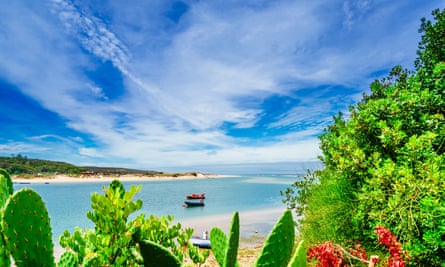
Hippy-chic but overpriced Comporta, on the coast south of Lisbon, has lost its title as one of Portugal’s best hidden beach destinations (Jeff Bezos was photographed there with his girlfriend over Easter this year). If you are driving from the Portuguese capital, ignore Comporta, head past the industrial refineries of Sines and continue to lovely Vila Nova de Milfontes, one of the most attractive and friendly towns on the Alentejo coast , if not the whole country.
Popular with domestic tourists, but largely unknown to the outside world, Milfontes is a hotchpotch of pretty squares and sun-bleached houses. The old town, overlooking the sleepy Mira estuary, grew around a tiny 16th-century castle built to defend it from pirates. Milfontes also has great restaurants that offer Alentejan food and seafood feasts, yet somehow the town has a relaxed atmosphere even at the height of summer.

The river remains an undiscovered gem in the region. A boat trip upriver offers the chance to enjoy the silence while gliding through the landscape, admiring the birds on the banks. It’s a picture-perfect tableau even most Portuguese don’t know about. Mil Emotions offers a variety of trips departing from Milfontes (€10-€30).
In this region, the Atlantic coast offers scenic beaches galore, plus the Rota Vicentina ’s network of walking trails. Milfontes itself has great beaches on river and sea, but 20 minutes away is the stunning Praia do Almograve, perfect for enjoying the sunset. Other lesser-known options include Brejo Largo and Praia de Nossa Senhora.
A little further away, Praia da Amália is named after the most famous fado singer in the country, Amália Rodrigues , who had a holiday home there. Also nearby is the promontory of Cabo Sardão, where dramatic high cliffs face the unrelenting Atlantic waves – certainly one of the best natural viewpoints in the region.
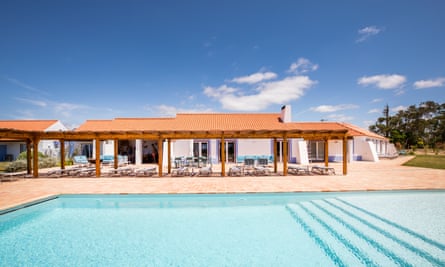
Recently opened Monte da Bemposta (doubles from €210) is a converted farm with 10 houses, three studios and a pool. Also near Vila Nova de Milfontes is rural-chic Herdade do Amarelo (doubles from €220). For more affordable accommodation in the area try the new Ocean House Alentejo (doubles from €70 B&B) in cute Porto Covo, a former fishing village with one of the prettiest squares in the country.
Alcoutim, Algarve
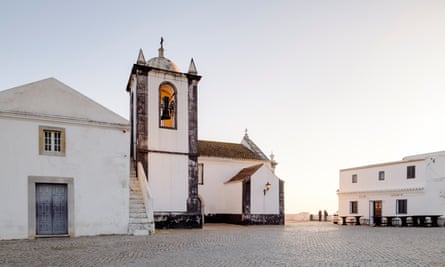
Finding somewhere undiscovered in the Algarve has become practically impossible, but the small village of Alcoutim is probably the one that comes closest. It’s a charming, unspoiled village about 30 miles inland, on the banks of the Guadiana River, which forms the border with Spain. It’s a tiny place where the pace of life is slower than on the bustling beaches to its south.
Alcoutim’s importance as a strategic river port meant visitors in centuries past tended to hang around. None stayed longer than the Moors, who occupied Alcoutim from the beginning of the eighth century until 1240, when King Sancho II finally drove them out. The river was a key trading route at the time, but its significance faded from the 16th century, and Alcoutim became the sleepy, charming place we know today, with its white churches and impressive castle.
As temperatures rise in summer, nearby Pego Fundo, a white-sand river beach on a small tributary, is the perfect place for a cooling dip. Adventurous types can take a short ferry ride across to the Spanish village of Sanlúcar de Guadiana in Andalucía – and return via the world’s only cross-border zipline at speeds of 50mph (€20, Límite Zero ).
Those with a car will find plenty to do in the surrounding villages, from the picturesque Castro Marim with its impressive walled castle, to the enchanting, cobbled village of Cacela Velha, which has a pretty church and a pocket-sized fort. For nature lovers, the Vale do Guadiana nature park to the north and the Sapal nature reserve further south both offer trails and a large variety of plant and bird life, including migrant flamingos.
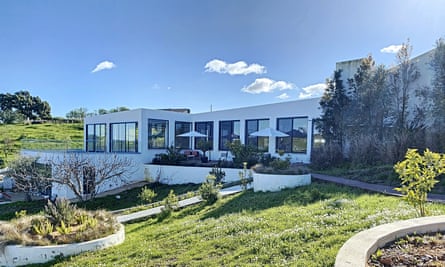
The former customs house in the border town of Vila Real de Santo António is now a Pousada hotel with three pools (doubles from €115) and is perfectly placed for exploring Algarve’s far east. Another nearby option is Monte do Malhão (doubles from €125), a charming, peaceful nine-room eco-hotel on a hilltop near Castro Marim. The drive along the Guadiana River to Alcoutim takes about 40 minutes. Alcoutim is also handy for eastern Algarve beaches such as Praia Verde and Praia de Cacela Velha, which are quieter and where the sea is usually warmer.
Trancoso, Beira Alta
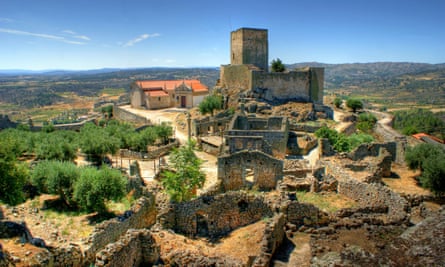
Many years ago, when I first took my English girlfriend – now my wife – home to Portugal, she was charmed by the way we could just drive, hassle-free, into medieval castles. You could even see washing lines of clothes hanging between the ancient walls.
While you can’t do that any more, it’s still hard to beat Portugal for its castles, and few are more magical and less explored than those of Beira Alta – an otherworldly region of sun-bleached plains and hilltop fortress towns. Close to the Spanish border in north-east Portugal, the province has a rich history as for centuries it was riddled with Moorish and Spanish invasion routes.
One of my favourite fortress towns here is Trancoso. Once an important stronghold, Trancoso is where the young King Dinis married Isabel of Aragon in 1282; the dowry comprised 12 castles and four towns, including Trancoso. Today, it’s a sleepy place with a delightful tangle of picturesque squares, churches and narrow lanes, all within mighty 13th-century walls.

Another gem in this often-overlooked region is Marialva, a hauntingly beautiful medieval village within 12th-century walls that was all but abandoned in the 18th and 19th centuries – one theory for its desertion being that it was just too difficult to reach (its population is now 177).
Most people use a car to tour this harsh but striking landscape, but the most exciting way to explore is to hop into a motorcycle sidecar with seasoned bikers Rob and Zayne. Based in central Portugal, their Gusto Motorbikes & Sidecar Adventures (from €200 a day) offers tailor-made trips and the chance to drive down winding country lanes on a truly off-the-beaten-track experience.
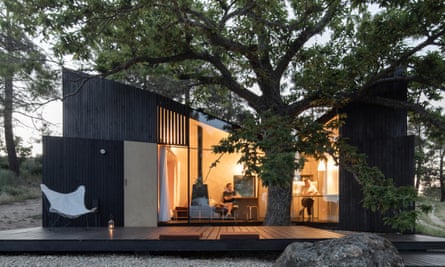
The new Casa no Castanheiro (doubles from €200), in Valeflor, 20 minutes from Trancoso and Marialva, is a striking cabin made of wood and cork. It won Portugal’s 2021 national architecture prize for construction in wood and offers stunning views over the valley and the Marofa mountains. Within the village of Marialva, minimalist-chic Casas do Côro (doubles from €218) is an idyllic mini-village with 13 houses and a lovely swimming pool.
A great-value option – again inside medieval castle walls, this time of Sernancelhe, half an hour from Trancoso – is Casa do Castelo (doubles from €50 B&B). It used to be the priest’s house and has been turned into a charming guesthouse.
- Portugal holidays
- Holiday guides
- Europe holidays
- Beach holidays
- Summer holidays
- Family holidays
Most viewed

Castelo de Vide Portugal: Best Things to See and Do
- David Angel
Sometimes you make the most wonderful discoveries by chance. We had no intention of visiting Castelo de Vide Portugal , other than to stock up on food before continuing our Portugal road trip through the Alentejo region.
I’m so glad we did, as we chanced upon one of the most beautiful places in Portugal. Castelo de Vide is one of the best of Portugal hidden gems and one of the best-preserved medieval towns in Portugal.
You’ll rarely see it on any things to do in Portugal lists, partly because it’s quite remote, near the Spanish border. Even if you plan to visit Alentejo and research the area, you’ll struggle to find much about it.
So why are we suggesting you include such an obscure place as part of your Portugal itinerary ?
It came as a complete surprise to us, but Castelo de Vide turned out to be one of the best places in Portugal that we visited. It’s almost untouched by tourism, and its old town and Jewish quarter among the best Portugal attractions you’ve never heard of.
Table of Contents
Where is Castelo De Vide Portugal ?

Castelo de Vide is in the Alto Alentejo (the Upper Alentejo), near the border with Spain. It’s also on the edge of the Parque Natural da Serra de Sao Mamede, a region that contains the stunning medieval castle and hilltop of Marvao.
It’s in the far north of the Alentejo, to the north of the regional centre of Portalegre. It’s 121 km (77 miles) north of the Alentejo capital Evora , and 225 km north-east of the Portuguese capital, Lisbon .
How to get to Castelo De Vide Portugal

If you intend to explore the Alentejo, public transport options are very limited. You can reach the town on a 4-hour bus trip from Lisbon with Rede Expressos , but getting anywhere beyond that is a challenge. There’s not much in the way of infrastructure in this part of the world.
Castelo de Vide is just 10 km (6 miles) from Marvao, one of the most beautiful castles in Europe. Yet only one bus runs there each day.
Driving is by far the easiest way to get to Castelo de Vide. We drove up from Evora, which took us around two hours. It’s around a three-hour drive to the outskirts of Lisbon – count on a good hour extra if you’re driving from close to the centre (not something we’d recommend).
We took the E802 / N246 up from Evora and Estremoz – a pretty easy road to drive, without too much traffic. Bear in mind that the town is sometimes written as ‘C. Vide’ or ‘Castelo Vide’ on road signs.
What is Castelo De Vide Portugal Like ?

Castelo de Vide is a small country town built on a steep hill near the Spanish border. Narrow-stepped streets of medieval whitewashed houses with red rooftops wind their way up to the Castelo (Castle) at the summit of the hill.
This might sound familiar to anyone who has visited this part of Portugal. We passed several towns which, on the surface, looked similar – Evoramonte, Alandroal, Vila Viçosa, Mourão, Moura to name just a few. We simply didn’t have time to stop to see them all. There are too many places to visit in Portugal, at least in the time we had.
We stopped in Castelo de Vide ostensibly for a supermarket shop before a three-to-four-hour drive down through border country to Monsaraz . We had pencilled in a stop at the border bastion of Elvas on the way down. We had a coffee in the main square, I went for a wander around the backstreets for five minutes, returned and said to Faye,”Come for a walk, just for five minutes.”
Roughly five hours later, we finally left. Elvas would have to wait.
What’s Special About Castelo De Vide Portugal?
Castelo de Vide is one of the best-preserved, most unspoilt medieval towns in Portugal. We’ve visited many of the most beautiful towns in Europe of similar age, and you see the same pattern in most places. Tourism gradually develops. You find cafes, restaurants, souvenir shops selling local crafts. There is some of this in around the edge of the Old Town.
Then you’re transported back centuries. There’s hardly any development here at all. You could picture a lovely café on a stepped street corner with tables outside, or a shop selling cork souvenirs (common in Alentejo). There’s hardly any of it.

All you have is a warren of narrow streets, many accessible to pedestrians only. As you reach the heights, you get some great views back down the cobbled streets. You’ll see two old men stopping for a chat on a corner, while an indolent cat lets out one last yawn before a very long siesta. You get all this to yourself.
It’s not the most obvious way to do your Portugal sightseeing, but it’s one of the most enjoyable.
C astelo De Vide Jewish Quarter
The former Jewish district of Castelo de Vide is one of the best-preserved in Portugal. The streets are amazingly well-preserved, and there are two main sights – the Fonte de Vila fountain and the Sinagoga (Synagogue).
Sadly the Synagogue – which contains a small museum chronicling the town’s Jewish past – was closed when we visited. At least we were able to explore the streets – including Rua da Judiaria and Rua da Fonte – and the alleyways leading up the side of the hill to the Castle.
Castelo De Vide Castle
You can’t visit Castelo de Vide Portugal without making the climb up the hill to see the castle. It’s not as impressive as the lone at Marvao, but it’s well worth the walk.
It’s a very atmospheric place, with wide views over the town and countryside to the Serra de São Mamede mountains. There are still houses around the castle walls, undisturbed in their cobbled alleyways.
Castelo de Vide Portugal – Final Words

I hope you have enjoyed this guide to Castelo de Vide. The beauty of the town came as a great surprise to us, and we’re so glad we stopped by. Even if we had to amend our itinerary afterwards!
The main reason most people visit this part of Portugal is to see the magnificent Marvão Castle, one of the most impressive and beautiful castles in Europe. It’s one of the best places to visit in Portugal, and what lured us to this part of the world.
We spent one night in Marvão, which was as great an experience as we had hoped for. Check out my guide to Marvão Portugal for more information about the Castle and village.
However, we would have loved to have spent an extra day in the area, possibly overnighting at Castelo de Vide or spending a second night up in Marvao. It’s one of the most fascinating places to see in Portugal, and so different and far removed from the more obvious Portugal tourist places.
Check out my Portugal Road Trip Alentejo guide to follow our route through this region near the Portugal-Spain border. It’s one of the unheralded regions of Europe, but if you love old medieval towns you’ll adore this part of the world.
I also suggest taking a look at my guide to the best things to do in Évora , the gorgeous capital of the Alentejo. And don’t miss my guide to Monsaraz , perhaps the most beautiful village in Portugal and one of the most beautiful villages in Europe .
I have also written numerous other guides to Portugal. Take a look at my Portugal 10-day itinerary, which explores the capital Lisbon and the Algarve coastal region to the south.
For an introduction to Lisbon, get your bearings with my Lisbon 3-Day Itinerary guide. And take a look at my additional guides to World Heritage Belem Lisbon and the best views in Lisbon from its famous miradouros .
You may wish to combine the Alentejo region with the Algarve, as we did. If so, take a look at my guide to the Best Algarve Beaches for ideas on where to explore. And while you’re there, take a look at my guides to the best Things to do in Lagos and Costa Vicentina too!
For even more articles on Portugal, check out my Portugal Travel Guide page.

David Angel is a British photographer, writer and historian. He is a European travel expert with over 30 years’ experience exploring Europe. He has a degree in History from Manchester University, and his work is regularly featured in global media including the BBC, Condé Nast Traveler, The Guardian, The Times, and The Sunday Times. David is fluent in French and Welsh, and can also converse in Italian, German, Portuguese, Spanish, Czech and Polish.

© Adrian Seliga/Getty Images

Medieval castles, cobblestone villages, captivating cities and golden beaches: the Portugal experience can be many things. History, great food and idyllic scenery are just the beginning.
Best Time to Visit
Best places to visit, leave the planning to a local expert.
Experience the real Portugal. Let a local expert handle the planning for you.
Attractions
Must-see attractions.
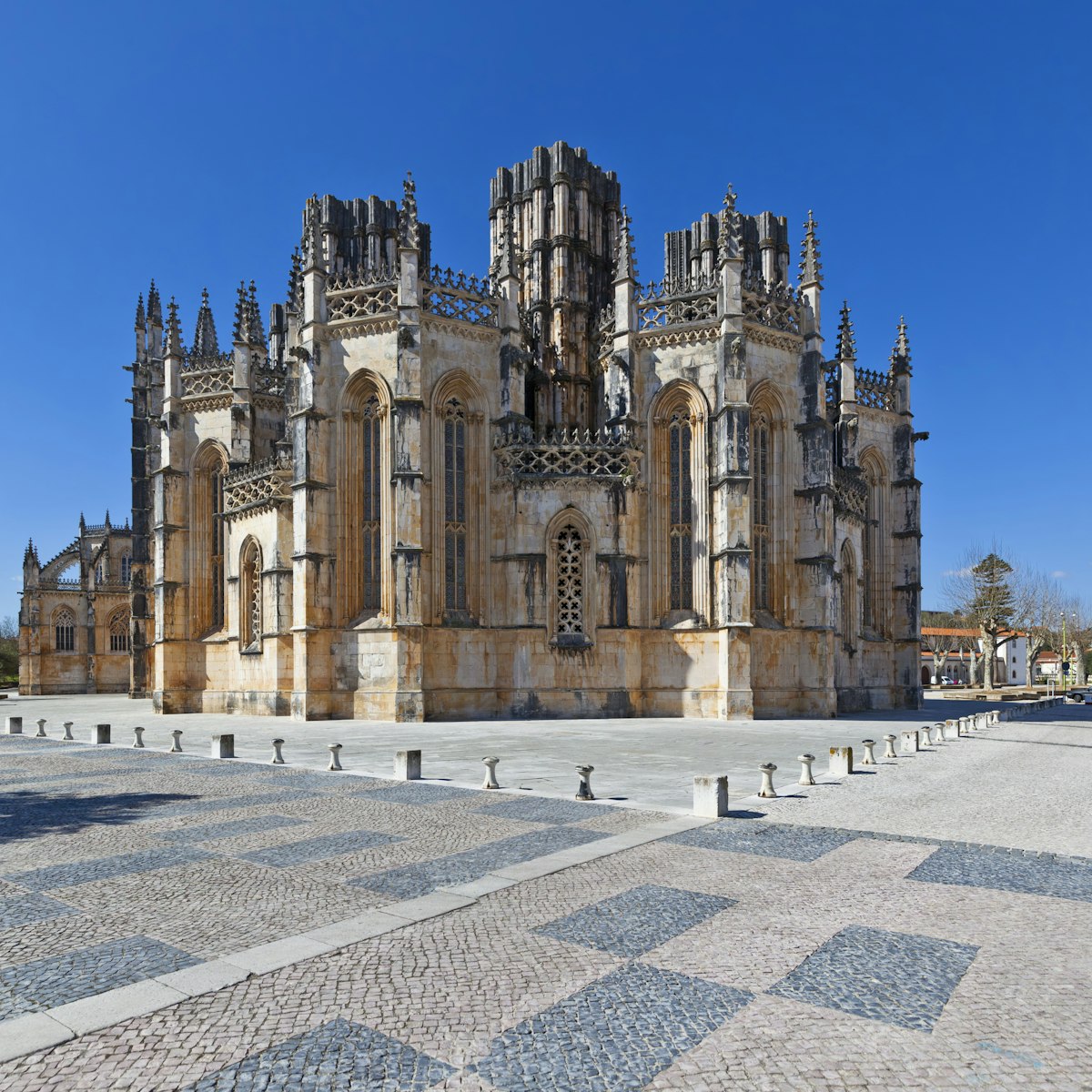
Mosteiro de Santa Maria da Vitória
Estremadura & Ribatejo
The extraordinary monastery of Batalha was built to commemorate the 1385 Battle of Aljubarrota (fought just south of here). Most of the monument was…
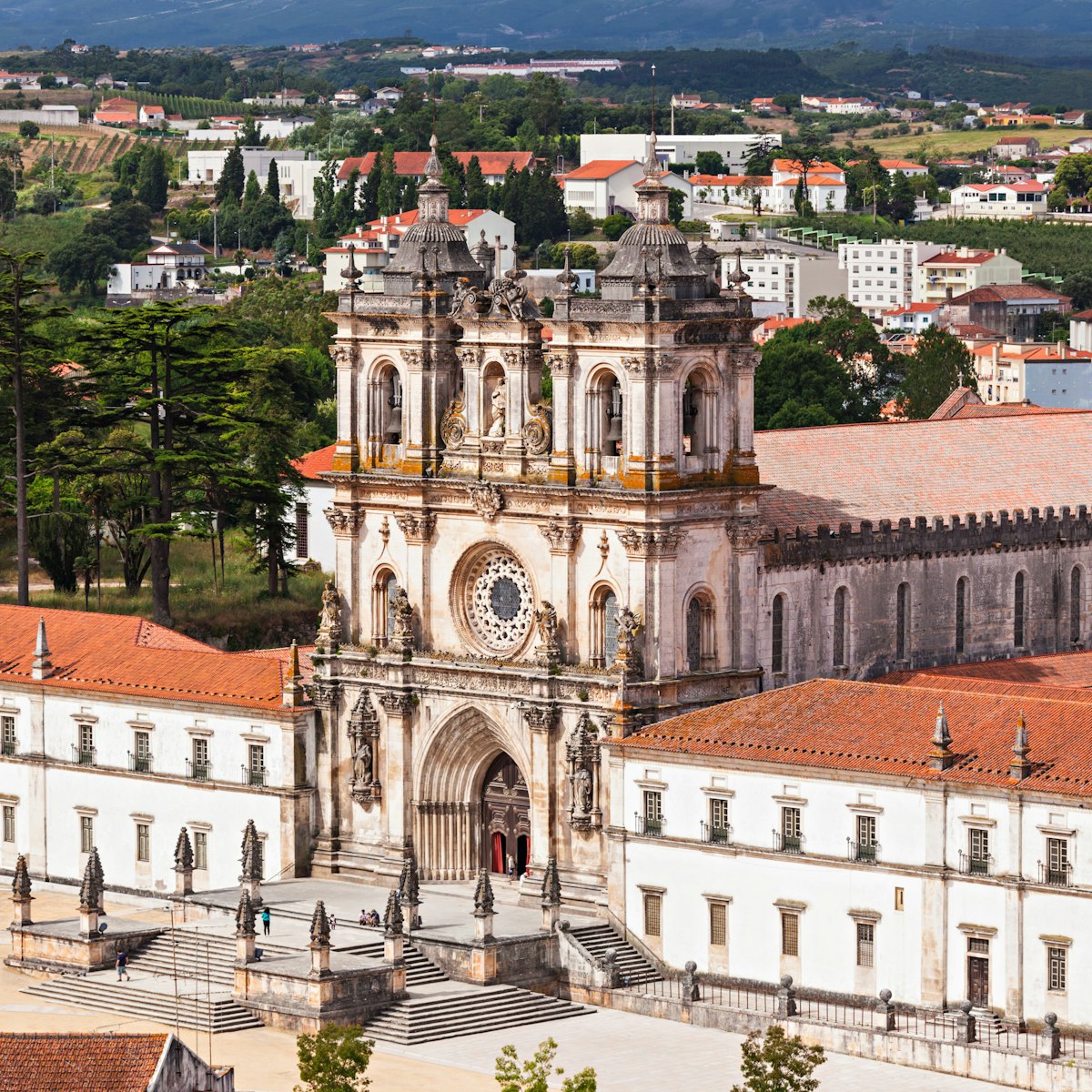
Mosteiro de Santa Maria de Alcobaça
One of Iberia's great monasteries utterly dominates the town of Alcobaça. Hiding behind the imposing baroque facade lies a high, austere, monkish church …
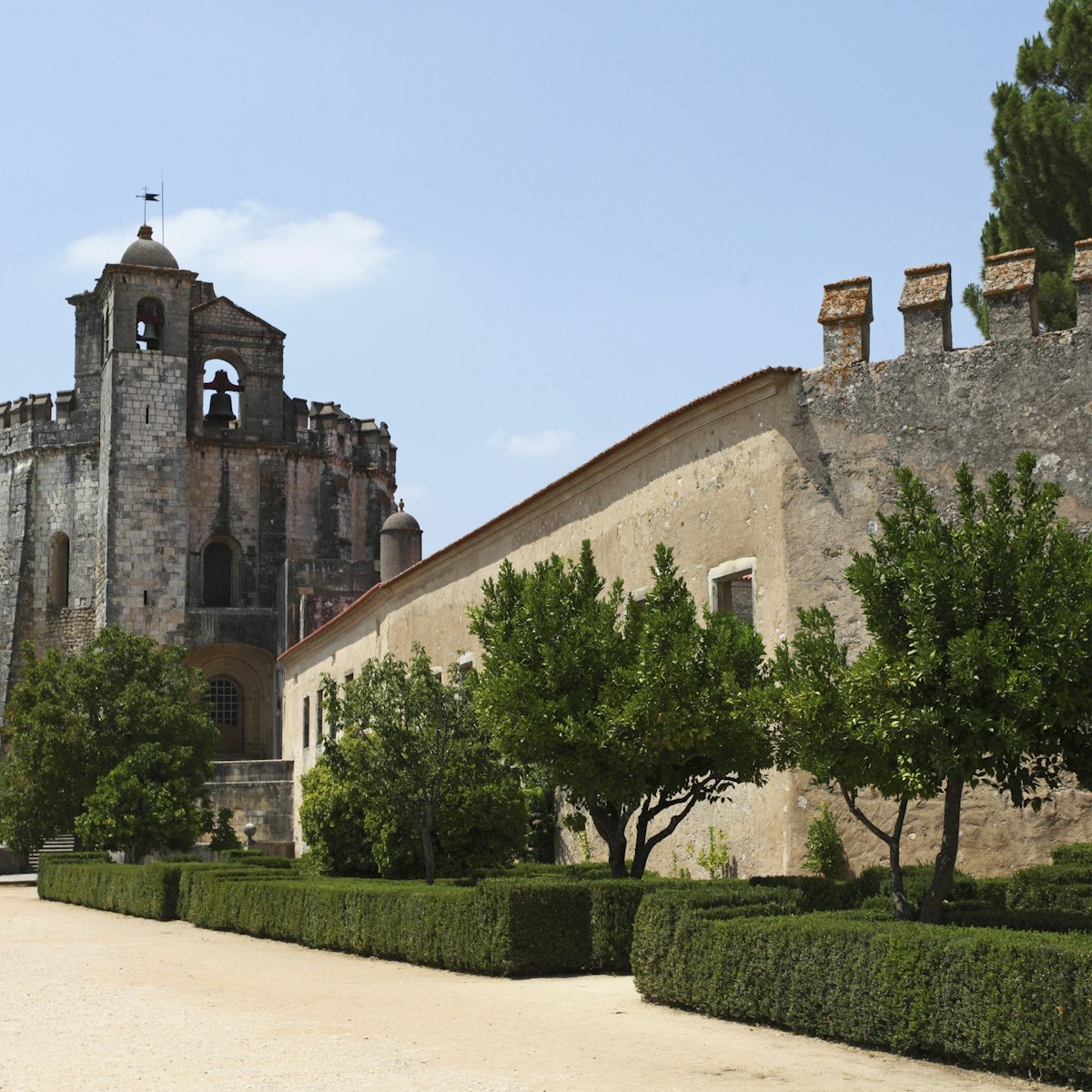
Convento de Cristo
Wrapped in splendour and mystery, the Knights Templar held enormous power in Portugal from the 12th to 16th centuries, and largely bankrolled the Age of…
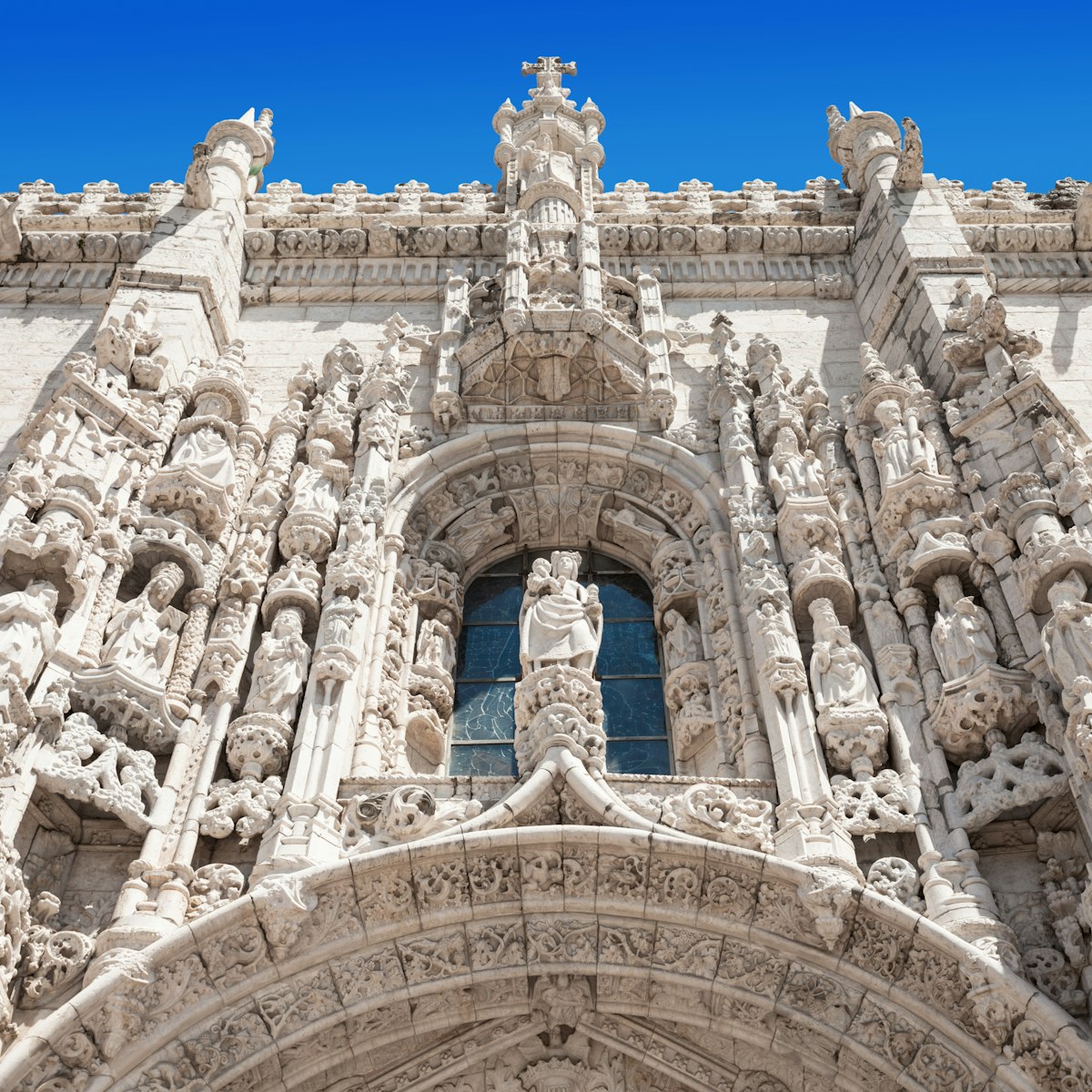
Mosteiro dos Jerónimos
Belém’s undisputed heart-stealer is this Unesco-listed monastery. The mosteiro is the stuff of pure fantasy: a fusion of Diogo de Boitaca’s creative…
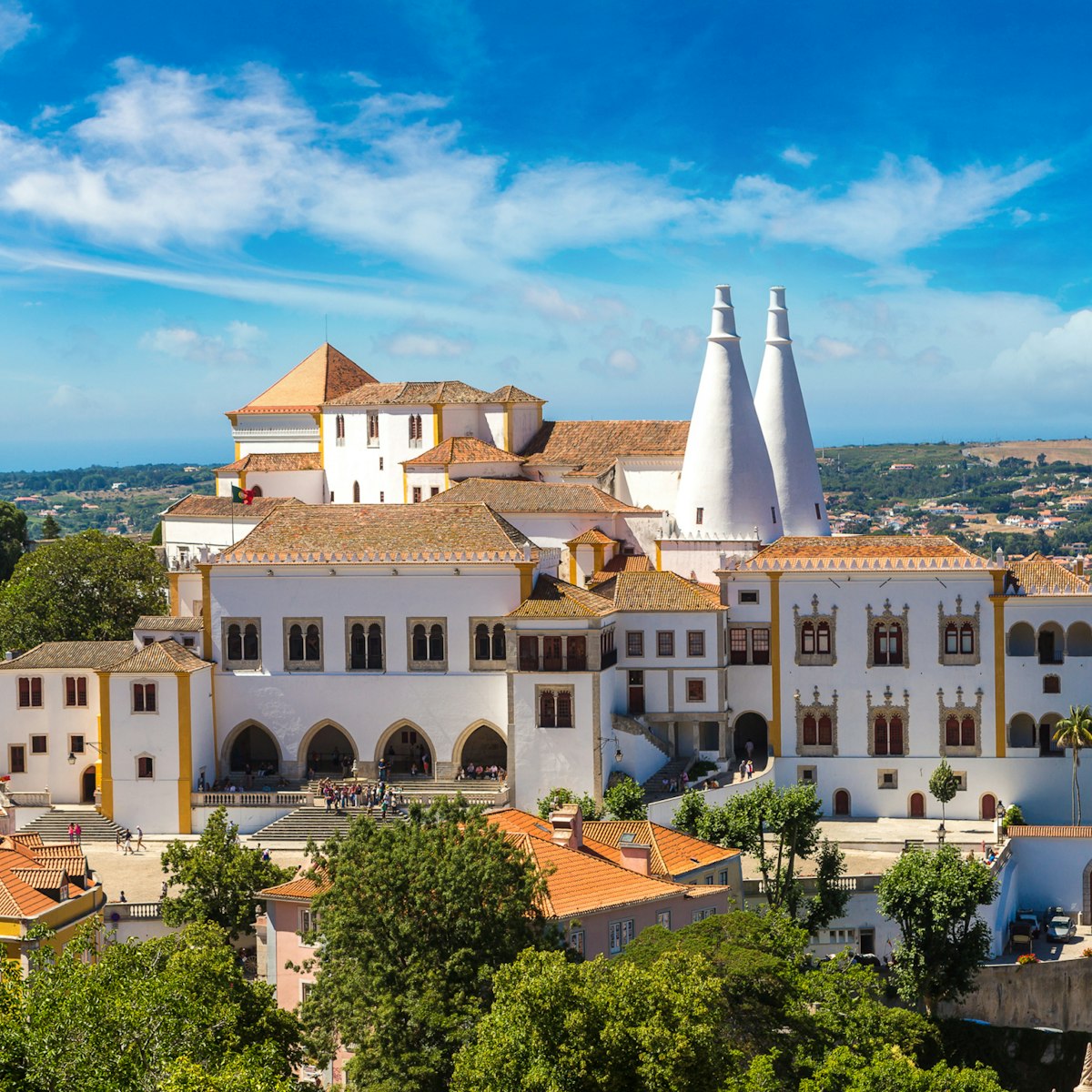
Palácio Nacional de Sintra
The star of Sintra-Vila is this palace, with its iconic twin conical chimneys and lavish, whimsical interior, which is a mix of Moorish and Manueline…
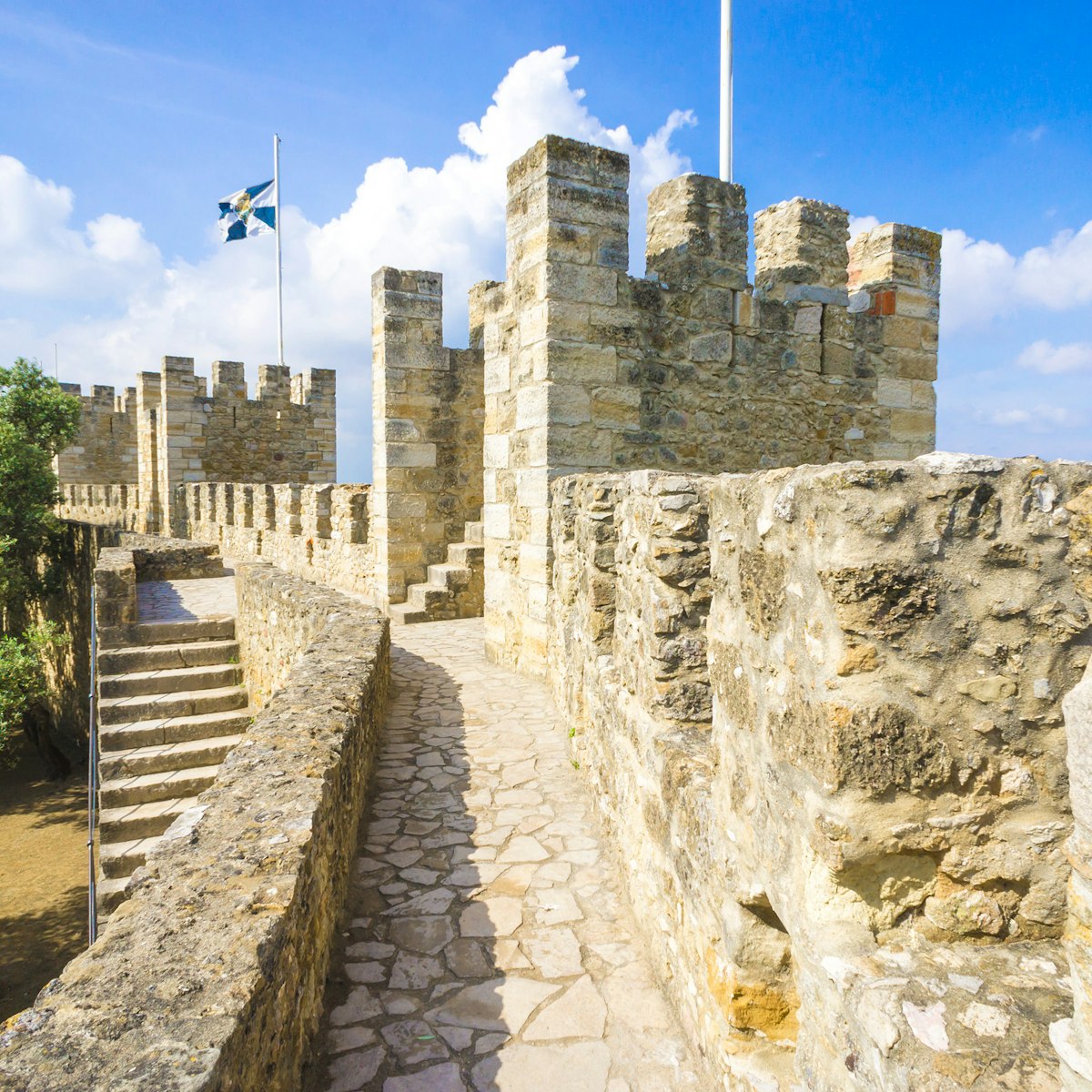
Castelo de São Jorge
Alfama, Castelo & Graça
Towering dramatically above Lisbon, these mid-11th-century hilltop fortifications sneak into almost every snapshot. Roam its snaking ramparts and pine…

Wander downhill (to save your legs) through Alfama's steep, narrow, cobblestoned streets and catch a glimpse of the more traditional side of Lisbon before…
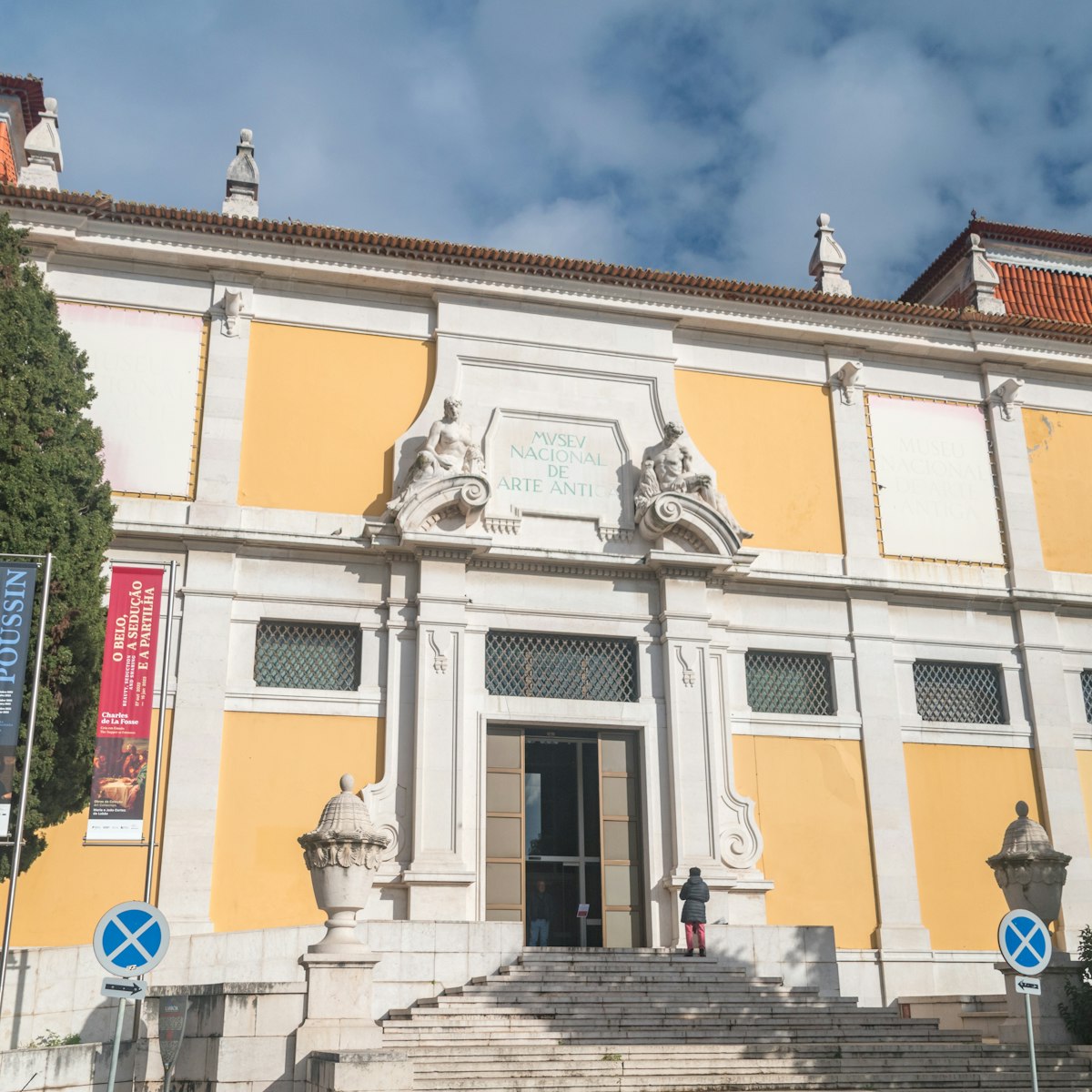
Museu Nacional de Arte Antiga
Set in a lemon-fronted, 17th-century palace, the Museu Nacional de Arte Antiga is Lapa’s biggest draw. It presents a star-studded collection of European…
Top picks from our travel experts
10 of the best things to do in portugal.

Observatório do Lago Alqueva
Offers two-hour open-air sessions taking in the marvellous star-filled skies of the Alentejo. You'll get an overview of constellations visible with the…
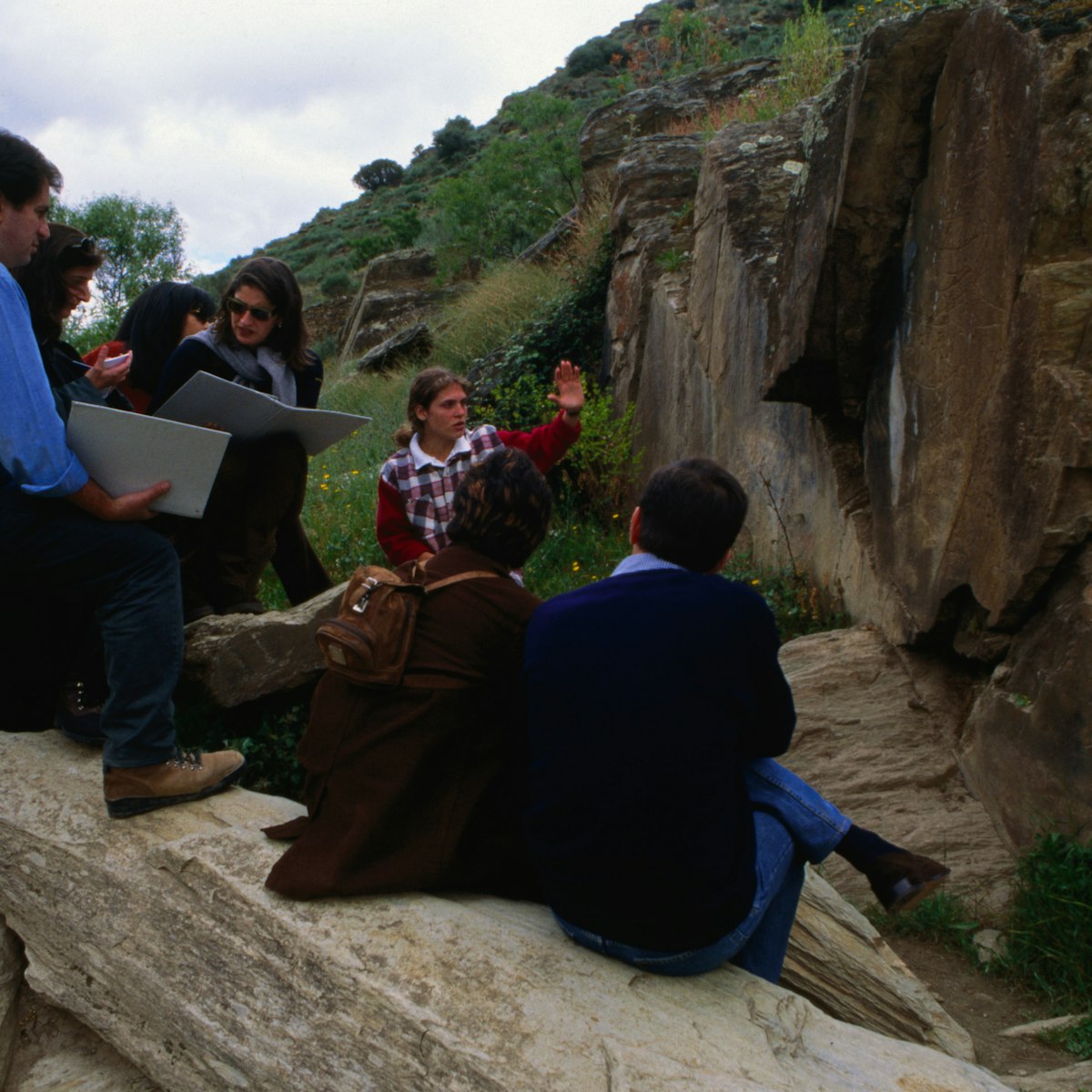
Parque Arqueológico do Vale do Côa
Most visitors to Vila Nova de Foz Côa come for one reason: to see its world-famous gallery of rock art. Although the park is currently an active research…
Planning Tools
Expert guidance to help you plan your trip.
Best Things to Do
From wine tasting to stargazing, experience the best of Portugal with this guide to the top things to do.
Things to Know
From what to wear to restaurants to the best way to get around, our Porto resident gives you the lowdown on things to know before you go to Portugal.
Transportation
From coastal train rides to DIY exploration with a hire car, here's how to get around Portugal.
Visa Requirements
All the info you need about getting a visa for Portugal, how long you can stay and the new visa-waiver program coming in 2024.
Money and Costs
From free museums to wonderful medieval architecture, it's possible to get by on as little as €50 a day in Portugal. Here's how.
Traveling with Kids
Children are welcomed everywhere you go in Portugal. Check out our top tips and the coolest experiences for your next family trip in Europe.
Best Road Trips
Throw together an Iberian soundtrack and you're ready to hit the open road in Portugal. Here are our top Portuguese road trips, from the hills to the coast.
Plan with a local
Experience the real Portugal
Let a local expert craft your dream trip.
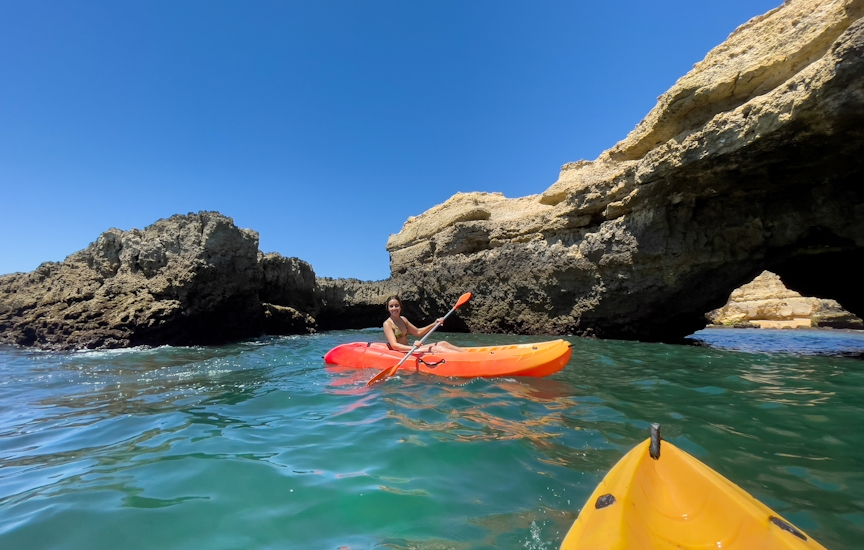
Latest stories from Portugal
Filter by interest:
- All Interests
- Adventure Travel
- Art & Culture
- Beaches, Coasts & Islands
- Food & Drink

Destination Practicalities
Feb 25, 2024 • 7 min read

Feb 23, 2024 • 6 min read

Jan 22, 2024 • 7 min read
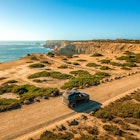
Dec 19, 2023 • 7 min read
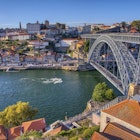
Dec 18, 2023 • 5 min read

Dec 4, 2023 • 6 min read

Nov 17, 2023 • 7 min read

Nov 17, 2023 • 5 min read

Oct 24, 2023 • 5 min read

Aug 15, 2023 • 5 min read
in partnership with getyourguide
Book popular activities in Portugal
Purchase our award-winning guidebooks.
Get to the heart of Portugal with one of our in-depth, award-winning guidebooks, covering maps, itineraries, and expert guidance.
Portugal and beyond
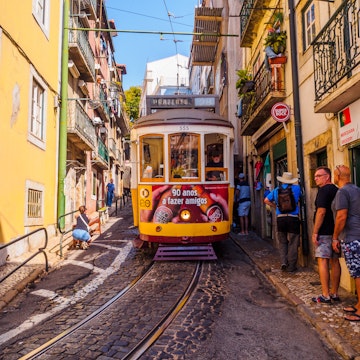

A lot of Castelló to discover
Music, gastronomy, routes, festivals..., upcoming events in castelló, get the best events, experience our founding festivities, the magdalena festivities, come to castelló, we are waiting for you, consult all the relevant information you need, come arrivare, tourist info, dove dormire.

- Privacy Overview
- Cookies de terceros
- Cookie Policy
This website uses cookies so that we can provide you with the best user experience possible. Cookie information is stored in your browser and performs functions such as recognising you when you return to our website and helping our team to understand which sections of the website you find most interesting and useful.
Esta web utiliza Google Analytics para recopilar información anónima tal como el número de visitantes del sitio, o las páginas más populares.
Dejar esta cookie activa nos permite mejorar nuestra web.
Please enable Strictly Necessary Cookies first so that we can save your preferences!
More information about our Cookie Policy

- Philippines
- Czech Republic
- Scandinavia
- Historical Sites
- Solo Travel Paris – How to make the most of the French Capital
- Solo Travel Brussels – The Ultimate Guide
- Solo Travel Belgium – The Ultimate Guide
- Solo Female Travel in Poland – The Ultimate Guide
- Morocco Travel Tips – Is Morocco safe for Female Solo Travel?
- Solo Travel Greece – The Ultimate Guide
- Solo Travel Philippines – Everything you need to know
- The Ultimate Solo Female Travel Guide to England
- Solo Travel Israel – The Ultimate Guide
- Cambodia Solo Female Travel Guide
- Work with Me
Europe , Solo Female Travel
Castelo branco portugal – the ultimate travel guide.
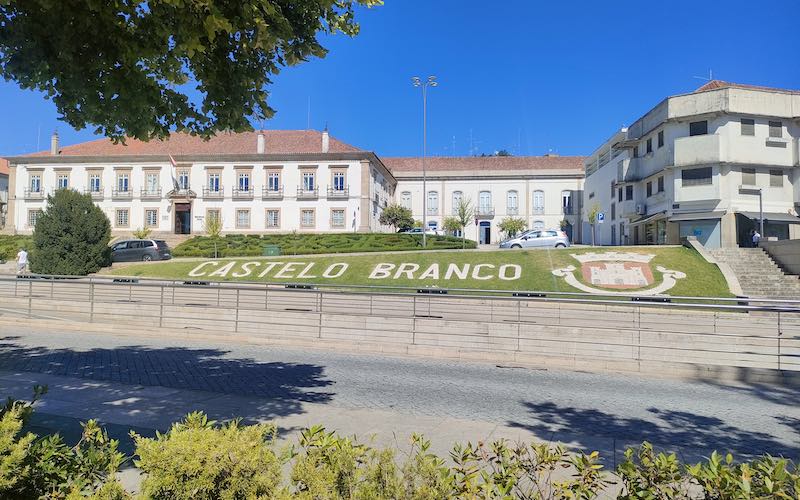
In the East of Portugal, inland and close to the Spanish border is the countryside ‘city’ of Castelo Branco. I say ‘city’ in inverted commas, because, although officially a city, Castelo Branco feels much more like a town, or even a village to some! Here you will find a much more relaxed pace of life than in Lisbon or Porto, and it genuinely feels much more authentically Portuguese. If you are looking to experience a traditional inland destination with opportunities for experiencing the countryside and smaller historical towns off the beaten track, then Castelo Branco in Portugal could be the ideal destination for you.
Disclaimer: Templeseeker is a participant in the Amazon Services LLC Associates Program, an affiliate advertising program designed to provide a means for us to earn fees by linking to Amazon.com and affiliated sites. Other affiliate links may be used in this article on Castelo Branco Portugal, but they do not impact on the price that you pay and they do help me to get this information to you for free. Read my privacy policy for more information regarding affiliates.
I spent a whole week in Castelo Branco, Portugal. Although it’s a destination that can easily be seen in a day or two, I wanted some time to chill out and also time to explore some of the surrounding areas including the river beach swimming pool. I also wanted to see some of the nearby towns and villages including Monsanto, Belmonte, Idanha-a-Velha and Penha Garcia.
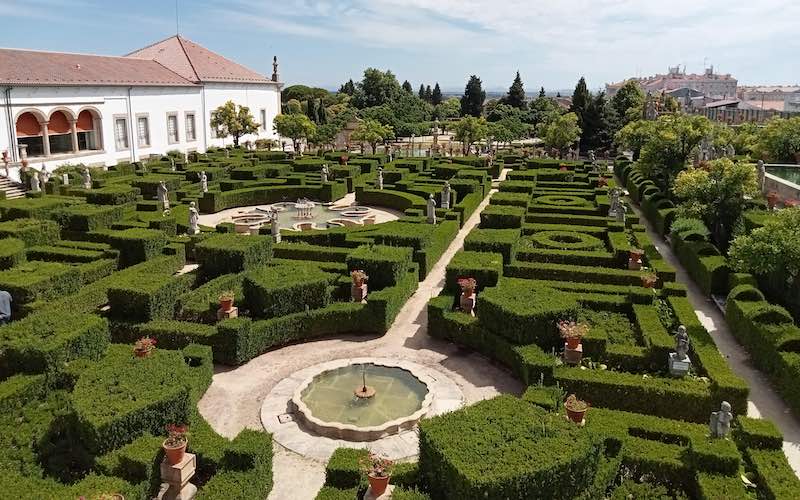
Photography copyright: All the images in this blog are original photography by Amy Green and are property of @templeseeker (unless otherwise stated). Please do not use these without permission or without giving credit and backlink. If you would like to use any of these images please email: [email protected] for permission.
Introduction to solo female travel in Castelo Branco Portugal
Castelo Branco is perfect for solo travel. It’s a very safe traditional Portuguese old town, where the locals are happy and friendly. Be aware that the population is slightly older in demographic, and it’s not a destination for you if you are looking for bars, clubs and an international scene, but I did have some banter with the old men in a local cafe who started on the port at 11.30am!!! The great thing is that men are very respectful of women here – they are friendly but you don’t get hassle.

You may have to learn a bit more Portuguese than you would in Lisbon or Porto, but this really adds to the experience. Also, staff in the hotels and some restaurants still speak good English and so it is easy to get by.
Being a smaller place than Lisbon or Porto, you will find the centre of Castelo Branco very walkable and easily accessible. You can get to know your way around in just one day. I would recommend that you choose to stay in Castelo Branco for at least 3 days if you would like to do some hiking or explore the surrounding areas.
As it is more ‘out in the sticks’ I would advise that you carry more cash on you than you would in the bigger cities – some bars and restaurants in Castelo Branco are still cash only. You can ask ‘posso pagar com cartão/Visa?’ – can I pay by card/Visa?
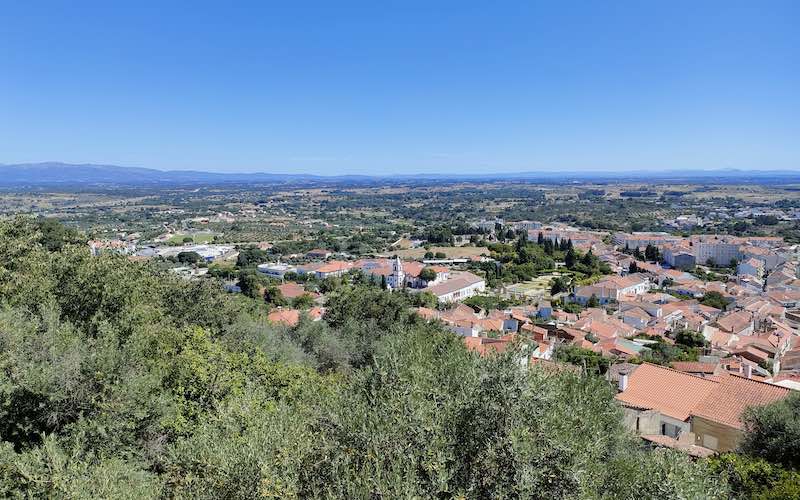
Where to Stay
There are a few nice options for you to choose from regarding where to stay in Castelo Branco. I opted for Hotel Imperio do Rei, a two star hotel in the centre of Castelo Branco. The location was perfect – walkable to the Cathedral and Jardim de Paco episcopal in less than 10 minutes. A great Portuguese breakfast is offered with cereals, meat/cheeses, pastries and pancakes. Although basic, they offer rooms with en suite and WIFI, and the reception staff are extremely friendly. They recommended some great restaurants and tours for me as well. I loved the photography in the bedrooms that reflected the beauty of the local area.
Looking for something a little more luxurious? Go for the Meliá Castelo Branco which is located on a hilltop overlooking the city. As well as the basic amenities, they also have a health club with an indoor pool, sauna and Turkish bath. The only downside to Meliá Castelo Branco is that it’s 2km away from public transport links, and so if you were hoping to use the trains and buses then Hotel Imperio do Rei is a better option.
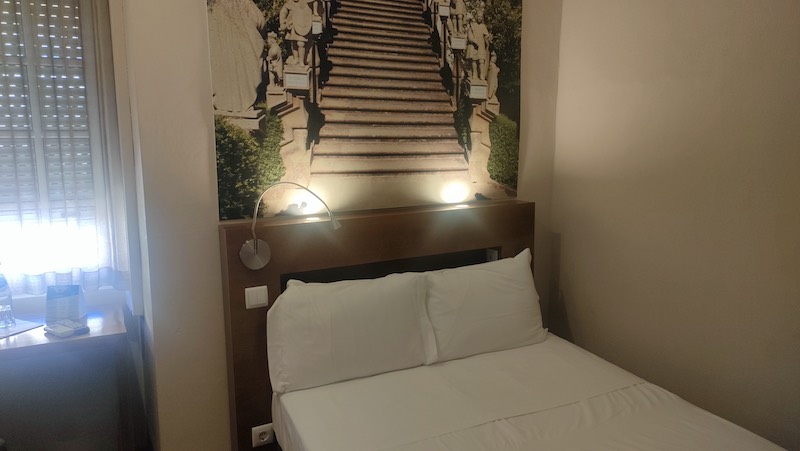
What to see and do in Castelo Branco
The best things to see and do in Castelo Branco include Se Cathedral, Jardim do Paco Episcopal and the river beach swimming complex (Piscina Praia de Castelo Branco). Oh, and of course….the Castelo of Castelo Branco is a must!
Historical Centre
The centre of Castelo Branco in Portugal is full of beautiful buildings, many of them have historical significance. Praça Camões, also called the Praça Velha (Old Square), is the start of the old historical area of Castelo Branco.
Castelo Branco Clock Tower
There are several notable buildings worth stopping to see. A great landmark is the Relogio Tower or old Clock tower, which represents the end of the Medieval city walls.
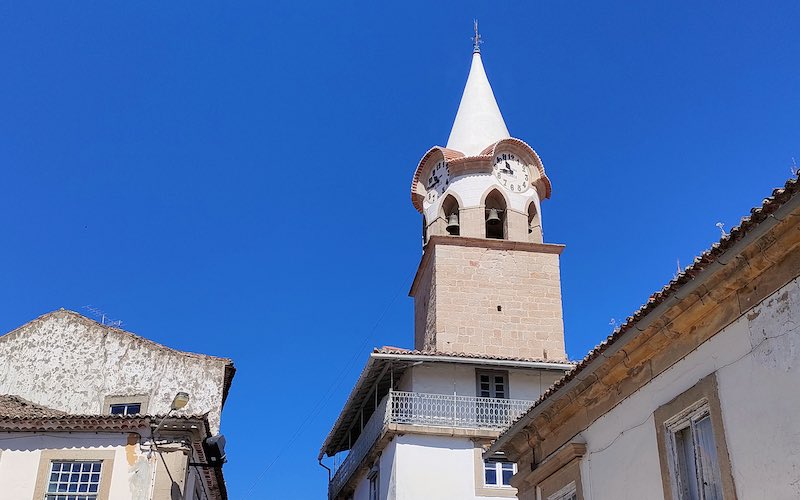
Solar dos Cunha ou Solar dos Mota
The construction of the Solar dos Cunha ou Solar dos Mota dates back to the late 17th century. It was built as the residence of the Guilherme da Cunha family. The renovations which gave it its palace-like appearance began in 1870. The Manor House remained in the possession of the family until the late 19th century, when it was inherited by Alfredo Alves da Mota through marriage. The building was left to the Castelo Branco Municipality in 1993 – it was adapted and now serves as the District Archives.
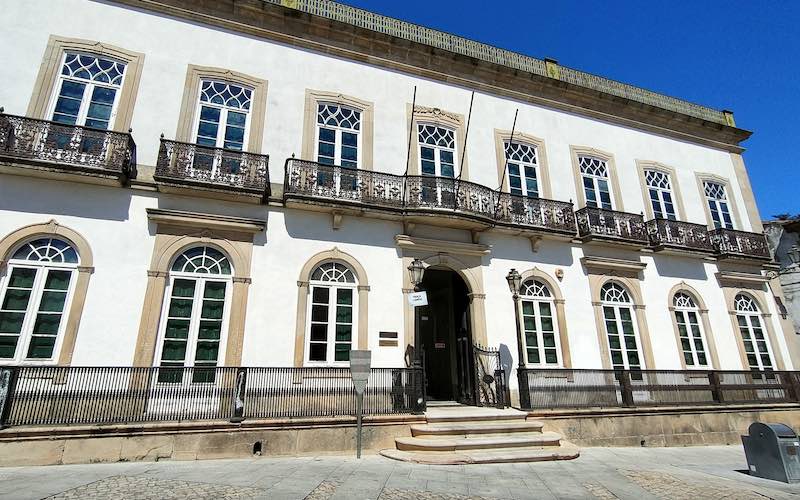
Domus Municipalis
The Domus Municipalis building was built in the 16th century and housed the Castelo Branco Municipal Council. It was also the courthouse and jail and later became home to the Municipal Library. The highlights of the main façade are the veranda, the Armillary Sphere and the Arms of Portugal. The bell tower, still there today, served to announce the closing of the defensive gates of the city.
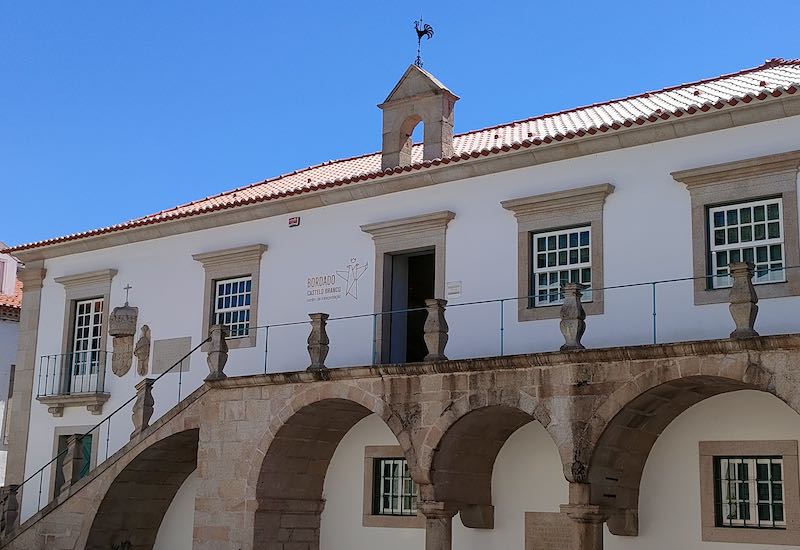
Se Cathedral
You can go inside the Se Cathedral in Castelo Branco. It is locally named the Church of S. Miguel and it probably dates back to the 13th or 14th century. Its existence was referred to in 1213 and it was said to have belonged to the Templars. The central nave has various inscriptions alluding to the reutilisation of structures dating from before the 17th century. The building that we see today is mainly in Baroque- Rococo style. Of note are the elements in gold leaf, the highlights being the main chapel, the Santíssimo Chapel and the Sacristy. Dress conservatively (not too much flesh on show) if you would like to visit the Cathedral and be aware that it is closed on the weekends.
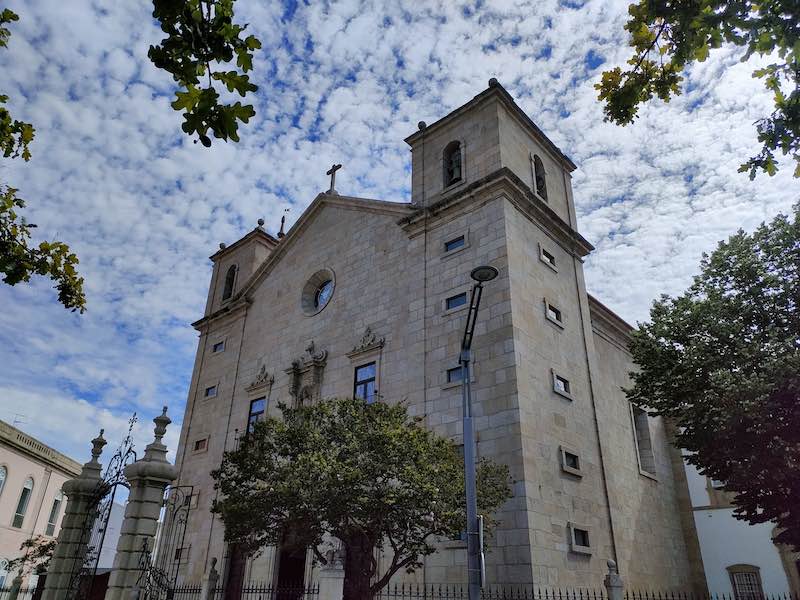
Jardim do Paço Episcopal
The Jardim do Paço Episcopal or Bishops palace garden is one of the most beautiful places to visit in Castelo Branco, Portugal. At just €3 per entrance ticket, this destination is well worth a visit. If you have ever been to Bom Jesus (Braga) or Santuario Nossa Senhora dos Remedios (Lamego), the Jardim do Paço Episcopal in Castelo Branco has a similar feel (though on a smaller scale).
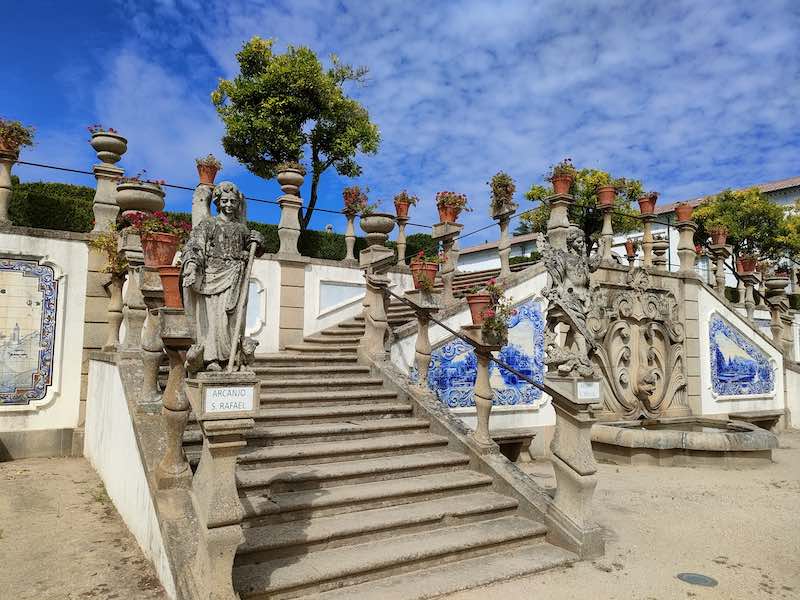
Enjoy the tiled facade of the entrance, the beautifully cut hedges and statues of the box gardens, the fountains (including the crown pool and the Moses Pool) and the Escadaria dos Reis (staircase of Kings). Walk to the top where the Moses pool is located to get the best photographs of the Box garden.
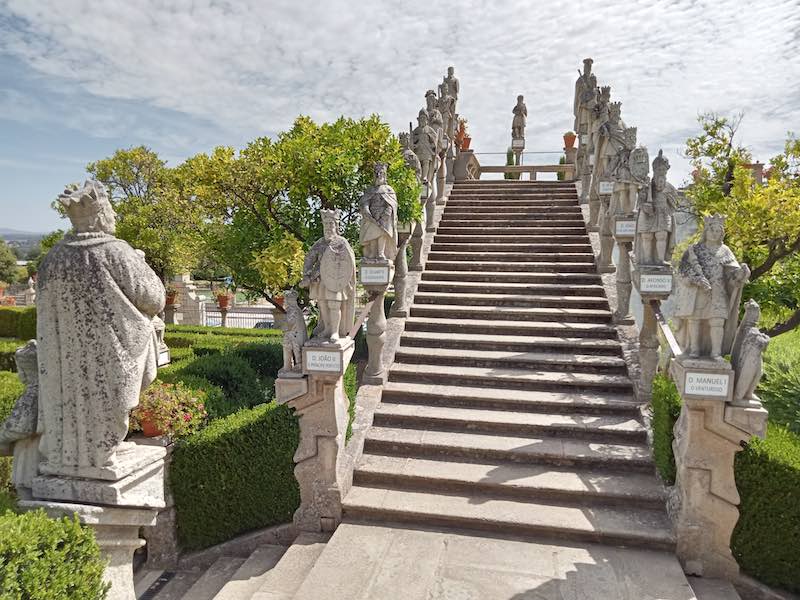
This was my favourite thing to do in Castelo Branco – it is so beautiful, and with the added bonus of being surprisingly quiet compared to some of the gardens in Lisbon and Porto. Plan to spend at least an hour there to enjoy the peacefulness and get do your photography.
Castelo of Castelo Branco
No visit to Castelo Branco would be complete without a hike up to the Castelo itself. It’s a historically improtant castle as it was built by the Knights Templar in the early 13th Century. The São Gens lookout – which replaces the walls – offers amazing views over the city, so get your camera ready!
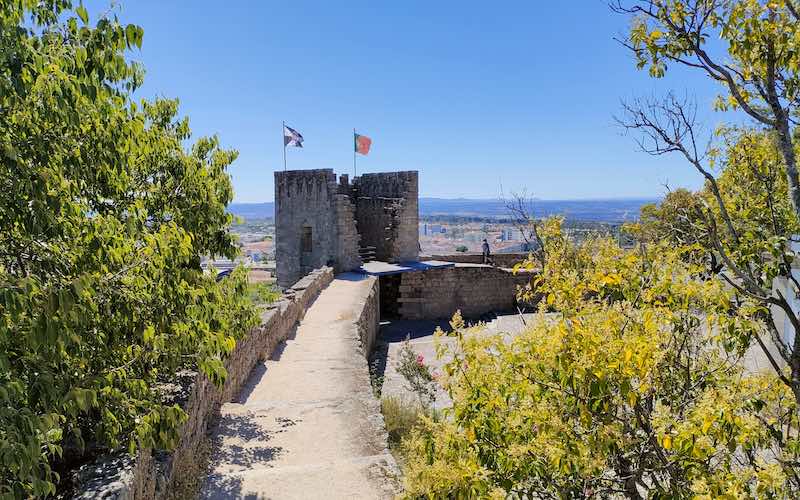
There are many routes up to the castle – Rua Nova, Rua dos Peleteiros, Rua d´Ega and Rua do Muro all head upwards to the summit, where you will find the Church of Santa Maria and the Moorish Castle ruins.
Piscina Praia de Castelo Branco
One of the most relaxing and enjoyable places to go in Castelo Branco is the Piscina Praia de Castelo Branco. These outdoor pools are a great way to cool off during the summertime and it is a family friendly day out.
You can actually walk to Piscina Praia from the centre of Castelo Branco in around half an hour (take plenty of water if it’s a hot day). The tickets are €4,80 per adult with concessions for children and pensioners. You can buy your ticket on site (or online in advance) – ask for um bilhete de adulo, but I found that the staff behind the desk did speak English. Lockers are available and take €1 coins (refundable). The locker keys are not on a wrist band, so I would suggest taking an elastic band or hair bobble to tie it round your wrist to avoid carrying it. Also take a large beach towel and sun cream (maybe even a book) because there are sun beds and places to relax in the sun.
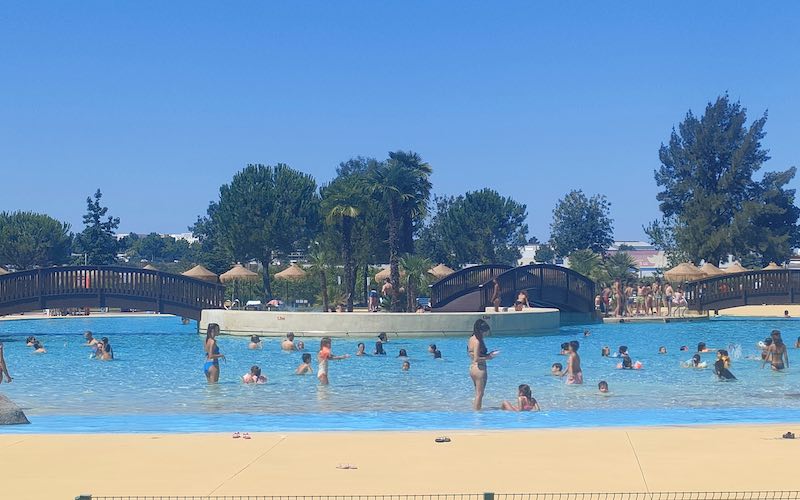
Piscina Praia de Castelo Branco makes a great family day out and is equally good for a solo trip if you need a morning or afternoon to relax after your travels.
Dining out in Castelo Branco
Castelo Branco is a great place to try Portuguese food and drink, and it’s restaurants really are excellent value. Ask for ‘menu del dia’ and many local restaurants have a lunch or evening meal for €10 deal.
- Retiro do Caçador – Portuguese – best value local restaurant in Castelo Branco (I had the mixed grill – grelhado mixte)
- Palitão – Best for Portuguese, European and no. 1 restaurant on Tripadvisor.
- Cabra Preta – Traditional Portuguese, great atmosphere and best for cheese, wine and Portuguese sausage.
- Hamburgueria da Baixa – Hamburgers – Best burgers in Castelo Branco all around €8-10 (I recommend the ‘A Patria’ burger with caramelised onions).
- Tábuas.Come – Relatively new to Castelo Branco and great for steak.
- Namaste – Best place for Vegetarian and Vegan in Castelo Branco. Only open from 12-3pm for lunch and you need to get there early especially on a Friday (when I went at 1.30pm they had already run out!). They do a gorgeous set vegan/veggie menu for €7,50 with different daily options of hummus, falafel, chick-peas and fresh salad.
- Cozinha do Castelo – The restaurant of Meliá Castelo Branco, best for speciality and restaurant with the best view in the city. I recommend the pumpkin soup, clams and codfish.
- Casa da Se – Best place for Gelato (Portuguese ice-cream) in Castelo Branco. It’s owned by the same people who run the Imperio do Rei hotel. I highly recommend the Pistachio Gelato! You can find them on Facebook here .
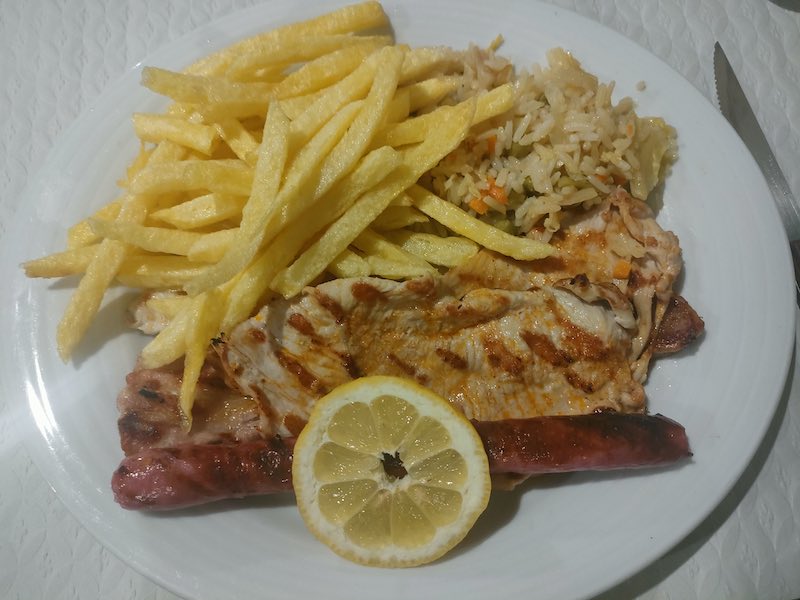
Castelo Branco travel tips
- Stay at the Hotel Imperio do Rei which is centrally located with friendly staff.
- Take a good pair of walking boots as you are likely to do a lot of walking and also some hiking.
- Spend a full day exploring Castelo Branco itself – don’t miss Se Cathedral, Cruxes, Jardim do Paco Episcopal.
- Take a guided walking tour of Castelo Branco if you would like to learn more about the history of the city.
- If you are interested in museums with local art and history then check out Museu Cargaleiro and Museu da Seda (tapestries).
- Eat out at Retiro do Caçador – authentic and very reasonably priced Portuguese food. They have a menu del dia which is soup, main meal (meat or fish), dessert (mousse or ice cream) plus coffee for just €10!
- Stay for at least 3 days to explore the surrounding areas – check out Covilha, Monsanto, Belmonte, Idanha-a-Velha and Penha Garcia.
- Have some cash money at the ready – not everywhere will accept card.
- Take a sun hat, sun cream (factor 30) and after sun plus a water bottle – in the summer months it can get higher than 30 degrees (Celsius).
- There are supermarkets where you can stock up on cheap drinks, snacks and toiletries – Mini Preco’s are jotted around the city and there is a good Pingo Doce on the main street.
What to Pack for visiting Castelo Branco in Portugal
What to pack for Castelo Branco very much depends on the time of year that you visit. In the summer months of July and August temperatures rise above 30 degree Celsius and so you will need to pack lots of shorts, T shirts and sun cream. However, in the winter months from December to February it can be betwee 5-12 degrees C and so you will need to add jeans, leggings, fleece and a raincoat to your packing. Make sure that you adjust this packing list accordingly.
Also, consider whether you are going to travel hand luggage only – it works out a lot cheaper on the Ryanair and Easyjet flights if you don’t check a bag underneath. I basically packed my tech, my travel documents, my Lonely Planet, one Jersey dress and 3 sets of cycling shorts with 5 tops (vest tops and T-shirt tops) and I was good to go! There are laundrettes in Castelo Branco and the Hotel Imperio do Rei offer a laundry service and so this was plenty. I wore my walking boots and thick walking socks and popped a pair of flip-flops in my packing. All this fitted into my Deuter 30L backpack, and toiletries, I just shove in a toothbrush and buy travel toiletries at the airport or when I arrive. Perfect!

Here is a list of what you should pack for Castelo Branco, Portugal…
- A good backpack (I like my Deuter Groden 32L backpack and it was enough for Castelo Branco in summer).
- Travel documents (passport and flight/hotel bookings), bank card (my Visa worked in most shops in Castelo Branco) and cash money in Euros.

- Laptop and smart phone with chargers plus adapters for Europe (two pin Type C) . Download Duolingo on your smartphone and get practicing that Portuguese – you will need it much more in Castelo Branco than you do in Lisbon or Porto.
- Good walking boots (mine are Karrimor ) and thick walking socks (I like Bridgedale Medium weight ). Wear them on the plane to avoid having to pack these.

- Sun glasses, sun hat – If you wear glasses regularly I would recommend that you get sunlight reactive lenses to avoid needing to swap between your normal glasses and sunnies).
- Light Cardigan or a shawl (to keep the sun off you in the day time and to keep you warmer on cool nights). A standard pashmina is fine.
- Sun Cream at least Factor 30 (I use Ambre Solaire ) and after sun – you can also buy this when you get there if you are travelling light as sun cream is reasonably priced in Portuguese supermarkets.
- Bug Spray – If you are hiking or camping in Castelo Branco in the summer then an insect repellant is a must. Choose one with DEET (or a more eco-friendly DEET alternative).
- Plenty of leggings, cycling shorts, shorts and T-shirts .

- A comfortable pair of hiking trousers such as Regatta or Peter Storm light – ones with detachable bottoms that turn into shorts are great for Castelo Branco.
- Jumper and Fleece (especially in the winter months (such as Peter Storm or Berghaus ).
- Very basic make up – I’m talking just a lipstick and rouge for summer months as thick make up will just slide off your face!
- Travel toothpaste and toothbrush plus basic toiletries (you can buy a travel toothbrush and toothpaste set ). Most hotels here provide shampoo and/or shower gel so you probably won’t need to pack that unless you are hosteling it or camping.
- Refillable water bottle – Castelo Branco has a few places with water fountains where you can fill up on the go and save money on bottled water. I like my SIGG – very hardwearing.

- Several sets of underwear – ladies I recommend packing a sports bra for Castelo Branco (I like my new Balance one it’s really comfy for hiking).
- Reading Book – Castelo Branco is a relaxing place, so take some fiction to read – I like Bill Bryson if you want some good travel stories! Although a little outdated it’s funny and relatable.
- A Portugal Travel Guidebook – And finally, I recommend carrying a paperback guidebook for Portugal – I like my Lonely Planet Portugal . The internet is great but it’s nice to have something to read and to help you when you are stuck without WIFI. I love my Lonely Planet – it also makes for good plane reading!

Travelling beyond Castelo Branco
The best local tour guide company for this area is Beira Tours – they offer a variety of tours of Castelo Branco and the surrounding towns and villages. If you have a limited amount of time in Castelo Branco then I would recommend their tuk-tuk tour of the city . If you are in the area for longer then consider one of these tours, which you can also book online with Get Your Guide…
- Belmonte and Castelo Novo Day Trip
- Portas de Ródão Natural Monument Boat Trip
- Castelo Branco: Monsanto, Idanha-a-Velha & Penha Garcia Tour
Here are some more details about the nearby surrounding towns and villages that you might like to explore…
You can get to Covilha by train from Castelo Branco and it makes a nice little day trip – it takes about an hour by train. Check out the main square, Igreja Da Misericordia and Praça do Município. You will find some amazing coffee shops in the centre and plenty of local hikes in Covilha (it’s at the border of the Serra da Estrela Nature Park). There are also a couple of funiculars that you might like to go on: Elevador da Goldra and Funicular de Santo André.
The Portuguese town of Guarda , at 1,056 meters in altitude, is famous for being the highest town in Portugal. Guarda has a rich historical heritage, dating back to the Celtic and Roman periods. The high altitude meant that the city played a strategic role in the defense of the Portuguese border during medieval times. The city’s main square, Praça Luís de Camões, is surrounded by notable landmarks such as the Cathedral of Guarda (Sé da Guarda), a Gothic-style cathedral with impressive interiors and panoramic views from its tower. Other noteworthy sites include the Episcopal Palace and the Church of São Vicente.
And, as expected from a Portuguese city in this region, it also has a castle built on the highest point. Although the castle of Guarda is now in ruins, it is a prominent landmark overlooking the city. Guarda is also the gateway to the Serra da Estrela, the highest mountain range in mainland Portugal.
You can get to Guarda by bus or train from Castelo Branco – book buses on FlixBus and trains on www.cp.pt (remember to book with your passport number and carry passport ID on your route). It’s around an hour and a half to Guarda by public transport – still very doable as a day trip.
Perched high on the hilltops near the Serra da Estrela mountains , Belmonte is a charming medieval village famous for it’s imposing 13th-century granite castle. The castle offers panoramic views of the town and surrounding countryside. The castle houses a museum that explores Belmonte’s history, including its connection to the Jewish community.
Belmonte has a significant Jewish history and is recognised as one of the centres of Jewish culture in Portugal. The town is home to a community of Crypto-Jews, also known as Marranos, who maintained their Jewish traditions in secret during the Portuguese Inquisition. The Jewish Museum of Belmonte will give you an insight into this history, displaying artefacts and documenting the community’s story.
You can get guided tours of Belmonte from Castelo Branco with Beira Tours – it is difficult to get to by public transport.
About 25km Northwest of Castelo Branco lies Monsanto , often referred to as the “most Portuguese village in Portugal” due to its unique architecture, traditional customs, and picturesque setting.Dominating the village is the Castle of Monsanto, perched on a hilltop. The castle dates back to the 12th century and offers panoramic views of the region. Located within the castle walls, the Chapel of St. Michael is a small Romanesque chapel known for its ancient frescoes and religious artefacts. While you are there, try some of the traditional foods including maranho (a meat and rice dish), migas (bread-based dish – I ate this once in Alentejo!), and some of the amazing local cheeses.
Idanha-a-Velha
Idanha-a-Velha is a picturesque historical village to the North East of Castelo Branco and close to the Spanish border. Don’t miss the Roman bridge, the castle (Castelo de Idanha-a-Velha), the North Gate (Porta Norte de Idanha-a-Velha) and the Cathedral.
Penha Garcia
Head even further to the Spanish border and you will come to Penha Garcia. One of the notable sites is the Penha Garcia Castle, perched on a hilltop overlooking the village, which dates back to the 13th century. Penha Garcia is also known for its abundance of fossilised dinosaur footprints. These footprints, known as the “Ichnological Park of Penha Garcia,” are preserved in the rocks near the village.
It is possible to combine Monsanto, Idanha-a-Velha and Penha Garcia into one day trip from Castelo Branco if you hire a driver. There are also tours available on Get Your Guide, but be aware that they are only currently running on Wednesdays and Sundays and you will need to book in advance.
Medical Issues and Travel Insurance
It goes without saying that you should always get travel insurance and make sure that you are covered for any pre-existing conditions. If you are registered disabled, you can get specialist ‘Blue Badge’ travel insurance to cover all of your medical needs. And it’s not just medical issues that you need to think about – travel insurance will also cover you in the event of travel delays that are out of your control and also lost luggage that doesn’t arrive the other end after your flight!
Pharmacies in Castelo Branco speak English and have most minor ailments covered (including sun-burn, thrush, mild dehydration). If you end up needing antibiotics you will need to see a doctor so head to the Centro de Saúde de Castelo Branco.
Overall Verdict – Should I travel to Castelo Branco Portugal?
The answer to the question ‘Is Castelo Branco worth visiting?’ really depends on what you are looking for. If you are wanting to socialise with other expats and enjoy a vibrant nightlife, then Castelo Branco is not the place for you. However, if you are more interested in learning Portuguese, exploring remote castles and going on local hikes or relaxing in the countryside then it is perfect. For me, I really enjoyed Castelo Branco – it allowed me to really embrace a relaxing schedule. This, combined with its tradition and authenticity was just what I need after Liverpool and Porto!
Further Reading
If you are travelling in Portugal then you might also be interested in reading the following articles….
- Things to do in Bragança Portugal
- The ultimate Northern Portugal itinerary
- Guide to solo Travel in Portugal
- Is Aveiro worth visiting?
- Is Porto worth visiting?
- Churches of Lisbon
- Guarda Portugal – The Ultimate Travel Guide
Templeseeker
Hi, I'm Amy and I have over 25 years of travel experience. I love seeking out temples, Churches and other religious and historical buildings. My BA (Religions and Theology) and MA (South Asian Studies) were gained from the University of Manchester. When I'm not blogging about Europe, Asia and the Middle East you will find me at home in Liverpool with my husband and Blake the Patterdale terrier! Come and join me on my templeseeking journey around the world!
DREAMS AHEAD
Discover brazil and the rest of south america.
Ever thought about that trip to South America, about asking all those things you really wanted to know about South America, but never really dared to ask…
Well, this is the place to get started! You can ask us about anything, that is: about South America of course.
Have a look at our traditional tours or let us help you customize your dream. Contact us through our digital media channels, leave us a message here or through our chat at the bottom of this page.
You wont regret it …
Quality Guaranteed
Do you speak..., organised by professionals, choose your adventure, _ushuaia, fin del mundo, amazon river cruise – rio negro (brazil).
For 20 years Amazon Clipper Cruises has been a leader in operating boat cruises in the Amazon River system departing from Manaus. Being the pioneer in Amazon boat cruises gives us a unique knowledge in logistics and knowledge about locations rarely shown to any other visitors.
Amazon River Cruise, Traditional
Brazil & argentina 11 day combo.
I just wanted to thank you for the great organization during my trip to South America I came back today and it is my first day in the office after the trip, It was really great, the guides were perfect, the trips, the transportation, everything…
Thank you very much for the opportunity to see so many beautiful places and to find out their history …
Hope to have the chance to come back to this places again some day
Have a nice day, greetings from rainy Bulgaria
Vassilena Greet Hillen Belgium Dag Eric,
Ondertussen zijn we weer in het grijze en koude België beland en terug aan het werk. Back to reality…
Nogmaals onze hartelijke dank voor jouw aandeel in de organisatie van onze reis, voor de hulp en de tips. Wij hebben er echt van genoten van Rio, Iguacu tot Salvador, en bewaren warme herinneringen aan deze fantastische reis. Onze eerste kennismaking met Zuid-Amerika was meteen raak en is zeker voor herhaling vatbaar.
Hartelijke groeten vanuit Keerbergen, ook aan de medewerkers in jouw kantoor.
Greet, Valère, Matthias en Maxim
Ana USA Trip of a lifetime! You organized a trip of a lifetime to Brazil for my family of five. I have never used a travel agent before but was having trouble navigating the immensity of Brazil and all it has to offer on my own, so I contacted you, drawn to the idea that it was more of an adventurer’s travel agency. You planned one of the best trips we have taken as a family. All of the experiences in Salvador were exceptional. We had drumming and Capoeira lessons, we toured the city, we went to a dance performance. All of these experiences were fun, engaging experiences, and not ‘touristy’ or canned. Then we traveled south to Iheus and Itacaré. We rafted, surfed, swam in waterfalls. It was all seamless and so much fun. We are so appreciative and cannot recommend your services enough.

Moscow Metro – Part 2
Have you been to Moscow ? In all seriousness, they have the prettiest metro stations I have ever seen and I still can’t believe how immaculate and lovely every station was. There are several different stations pictured below and this is the second of several posts where I will show you the beauty of the Moscow Metro. Did you see part 1 ? There really isn’t much to say because I think the pictures speak for themselves. I have so many more pictures to share with you!
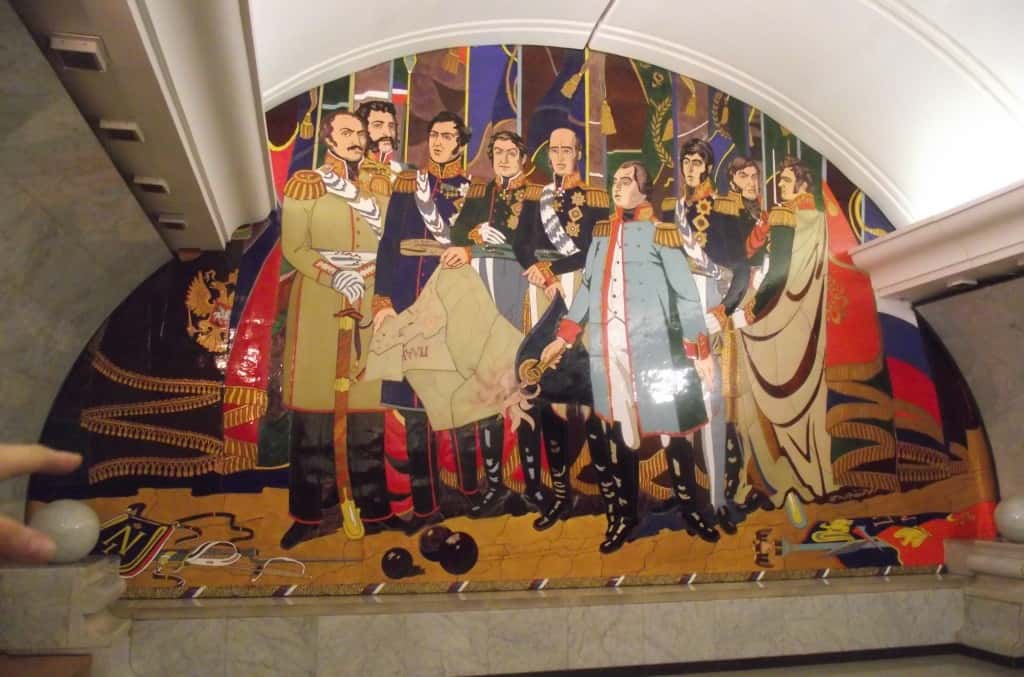
Have you ever been to Moscow? Is it someplace you have thought about visiting?
She speaks fluent English, French and Spanish, and works for a major airline. And guess what? She’s also a licensed elementary teacher and has an MBA.
Similar Posts

Stay Away From Africa!
There is a trend I’m noticing that is really irritating me and if you are doing it I want…
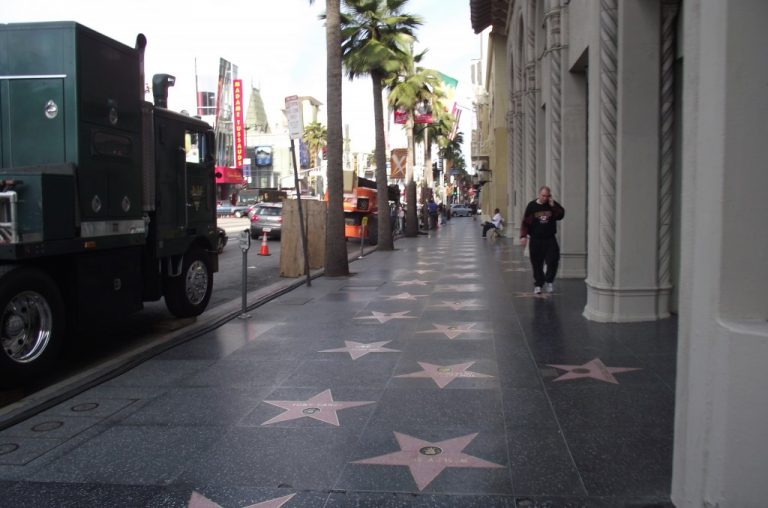
Hollywood Walk Of Fame – Muhammad Ali
Have you heard of the Hollywood Walk Of Fame? Did you know there is one star on Hollywood Blvd….

Did You Know There Are Canals In Paris?
If you are heading to Paris and are looking for some non-touristy things to do, check out the canals….

Apartment Rental Chicago
As you know I am crazy about apartment rentals. I had to fly to Chicago for one night and…
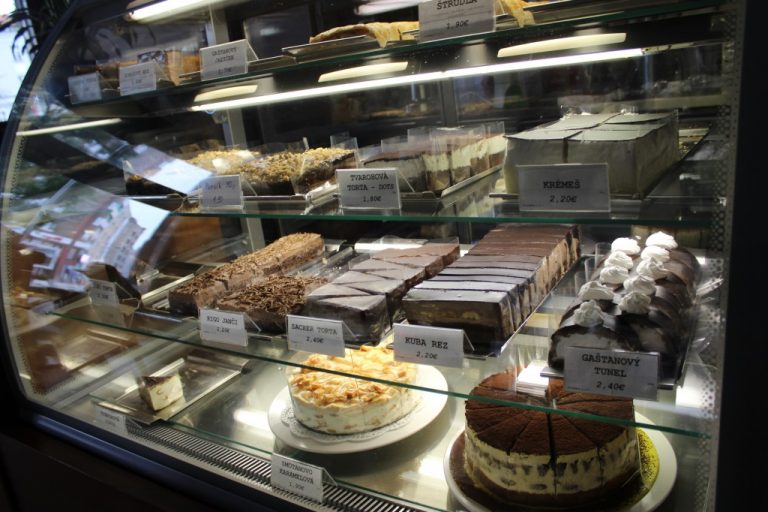
Would You Expect To Find These Type Of Pastries In Bratislava?
Do you think of pastries when you think of Eastern Europe? I doubt it. When I walked into this…

Luxury Vacation Apartment Rental In Cape Town
There are plenty of luxury vacation apartment rentals in Cape Town and this one is superb. I stayed…
This is the train STATION?? Oh my god… So gorgeous. Moscow has never even crossed my mind as a possible travel destination but this is gorgeous…Hmmm… LOL
I know, right? We spent several hours in the metro, just marveling at the beauty of each one. Thanks for stopping by!
Leave a Reply Cancel reply
Your email address will not be published. Required fields are marked *
- Articles >
The Moscow Metro Museum of Art: 10 Must-See Stations
There are few times one can claim having been on the subway all afternoon and loving it, but the Moscow Metro provides just that opportunity. While many cities boast famous public transport systems—New York’s subway, London’s underground, San Salvador’s chicken buses—few warrant hours of exploration. Moscow is different: Take one ride on the Metro, and you’ll find out that this network of railways can be so much more than point A to B drudgery.
The Metro began operating in 1935 with just thirteen stations, covering less than seven miles, but it has since grown into the world’s third busiest transit system ( Tokyo is first ), spanning about 200 miles and offering over 180 stops along the way. The construction of the Metro began under Joseph Stalin’s command, and being one of the USSR’s most ambitious building projects, the iron-fisted leader instructed designers to create a place full of svet (radiance) and svetloe budushchee (a radiant future), a palace for the people and a tribute to the Mother nation.
Consequently, the Metro is among the most memorable attractions in Moscow. The stations provide a unique collection of public art, comparable to anything the city’s galleries have to offer and providing a sense of the Soviet era, which is absent from the State National History Museum. Even better, touring the Metro delivers palpable, experiential moments, which many of us don’t get standing in front of painting or a case of coins.
Though tours are available , discovering the Moscow Metro on your own provides a much more comprehensive, truer experience, something much less sterile than following a guide. What better place is there to see the “real” Moscow than on mass transit: A few hours will expose you to characters and caricatures you’ll be hard-pressed to find dining near the Bolshoi Theater. You become part of the attraction, hear it in the screech of the train, feel it as hurried commuters brush by: The Metro sucks you beneath the city and churns you into the mix.
With the recommendations of our born-and-bred Muscovite students, my wife Emma and I have just taken a self-guided tour of what some locals consider the top ten stations of the Moscow Metro. What most satisfied me about our Metro tour was the sense of adventure . I loved following our route on the maps of the wagon walls as we circled the city, plotting out the course to the subsequent stops; having the weird sensation of being underground for nearly four hours; and discovering the next cavern of treasures, playing Indiana Jones for the afternoon, piecing together fragments of Russia’s mysterious history. It’s the ultimate interactive museum.
Top Ten Stations (In order of appearance)
Kievskaya station.

Kievskaya Station went public in March of 1937, the rails between it and Park Kultury Station being the first to cross the Moscow River. Kievskaya is full of mosaics depicting aristocratic scenes of Russian life, with great cameo appearances by Lenin, Trotsky, and Stalin. Each work has a Cyrillic title/explanation etched in the marble beneath it; however, if your Russian is rusty, you can just appreciate seeing familiar revolutionary dates like 1905 ( the Russian Revolution ) and 1917 ( the October Revolution ).
Mayakovskaya Station
Mayakovskaya Station ranks in my top three most notable Metro stations. Mayakovskaya just feels right, done Art Deco but no sense of gaudiness or pretention. The arches are adorned with rounded chrome piping and create feeling of being in a jukebox, but the roof’s expansive mosaics of the sky are the real showstopper. Subjects cleverly range from looking up at a high jumper, workers atop a building, spires of Orthodox cathedrals, to nimble aircraft humming by, a fleet of prop planes spelling out CCCP in the bluest of skies.
Novoslobodskaya Station

Novoslobodskaya is the Metro’s unique stained glass station. Each column has its own distinctive panels of colorful glass, most of them with a floral theme, some of them capturing the odd sailor, musician, artist, gardener, or stenographer in action. The glass is framed in Art Deco metalwork, and there is the lovely aspect of discovering panels in the less frequented haunches of the hall (on the trackside, between the incoming staircases). Novosblod is, I’ve been told, the favorite amongst out-of-town visitors.
Komsomolskaya Station
Komsomolskaya Station is one of palatial grandeur. It seems both magnificent and obligatory, like the presidential palace of a colonial city. The yellow ceiling has leafy, white concrete garland and a series of golden military mosaics accenting the tile mosaics of glorified Russian life. Switching lines here, the hallway has an Alice-in-Wonderland feel, impossibly long with decorative tile walls, culminating in a very old station left in a remarkable state of disrepair, offering a really tangible glimpse behind the palace walls.
Dostoevskaya Station

Dostoevskaya is a tribute to the late, great hero of Russian literature . The station at first glance seems bare and unimpressive, a stark marble platform without a whiff of reassembled chips of tile. However, two columns have eerie stone inlay collages of scenes from Dostoevsky’s work, including The Idiot , The Brothers Karamazov , and Crime and Punishment. Then, standing at the center of the platform, the marble creates a kaleidoscope of reflections. At the entrance, there is a large, inlay portrait of the author.
Chkalovskaya Station
Chkalovskaya does space Art Deco style (yet again). Chrome borders all. Passageways with curvy overhangs create the illusion of walking through the belly of a chic, new-age spacecraft. There are two (kos)mosaics, one at each end, with planetary subjects. Transferring here brings you above ground, where some rather elaborate metalwork is on display. By name similarity only, I’d expected Komsolskaya Station to deliver some kosmonaut décor; instead, it was Chkalovskaya that took us up to the space station.
Elektrozavodskaya Station

Elektrozavodskaya is full of marble reliefs of workers, men and women, laboring through the different stages of industry. The superhuman figures are round with muscles, Hollywood fit, and seemingly undeterred by each Herculean task they respectively perform. The station is chocked with brass, from hammer and sickle light fixtures to beautiful, angular framework up the innards of the columns. The station’s art pieces are less clever or extravagant than others, but identifying the different stages of industry is entertaining.
Baumanskaya Statio
Baumanskaya Station is the only stop that wasn’t suggested by the students. Pulling in, the network of statues was just too enticing: Out of half-circle depressions in the platform’s columns, the USSR’s proud and powerful labor force again flaunts its success. Pilots, blacksmiths, politicians, and artists have all congregated, posing amongst more Art Deco framing. At the far end, a massive Soviet flag dons the face of Lenin and banners for ’05, ’17, and ‘45. Standing in front of the flag, you can play with the echoing roof.
Ploshchad Revolutsii Station

Novokuznetskaya Station
Novokuznetskaya Station finishes off this tour, more or less, where it started: beautiful mosaics. This station recalls the skyward-facing pieces from Mayakovskaya (Station #2), only with a little larger pictures in a more cramped, very trafficked area. Due to a line of street lamps in the center of the platform, it has the atmosphere of a bustling market. The more inventive sky scenes include a man on a ladder, women picking fruit, and a tank-dozer being craned in. The station’s also has a handsome black-and-white stone mural.
Here is a map and a brief description of our route:
Start at (1)Kievskaya on the “ring line” (look for the squares at the bottom of the platform signs to help you navigate—the ring line is #5, brown line) and go north to Belorusskaya, make a quick switch to the Dark Green/#2 line, and go south one stop to (2)Mayakovskaya. Backtrack to the ring line—Brown/#5—and continue north, getting off at (3)Novosblodskaya and (4)Komsolskaya. At Komsolskaya Station, transfer to the Red/#1 line, go south for two stops to Chistye Prudy, and get on the Light Green/#10 line going north. Take a look at (5)Dostoevskaya Station on the northern segment of Light Green/#10 line then change directions and head south to (6)Chkalovskaya, which offers a transfer to the Dark Blue/#3 line, going west, away from the city center. Have a look (7)Elektroskaya Station before backtracking into the center of Moscow, stopping off at (8)Baumskaya, getting off the Dark Blue/#3 line at (9)Ploschad Revolyutsii. Change to the Dark Green/#2 line and go south one stop to see (10)Novokuznetskaya Station.
Check out our new Moscow Indie Travel Guide , book a flight to Moscow and read 10 Bars with Views Worth Blowing the Budget For
Jonathon Engels, formerly a patron saint of misadventure, has been stumbling his way across cultural borders since 2005 and is currently volunteering in the mountains outside of Antigua, Guatemala. For more of his work, visit his website and blog .

Photo credits: SergeyRod , all others courtesy of the author and may not be used without permission
Firebird Travel
RUSSIA TRAVEL HOME
Thank you for your enquiry.
RUSSIA TRAVEL PACKAGES A selection of Russian tours to take as they are or adjust to your needs.
THE GOLDEN RING Visit the heart of ancient Russia. What is the Golden Ring?
MOSCOW TOURS What you can see in Moscow.
MOSCOW DAY TRIPS Get out of Moscow and take a relaxing trip to some of these places
ST. PETERSBURG Some of the sights to see in Petersburg
LAKE BAIKAL TOURS Hiking and trekking around the world's deepest lake in the heart of Siberia
RUSSIAN DIGS Come and work in the field on a Russian Archaeological dig. Full training given on site.
TRAVEL TIPS & SERVICES Getting around in Russia
If you do not receive a confirmation email shortly then you have probably incorrectly entered your email.
Number of travelers ">
Special Interests or requests. "> ">
If you experience difficulties please use this link to send Regular Email . All information is treated as confidential
Claudia Looi
Touring the Top 10 Moscow Metro Stations
By Claudia Looi 2 Comments

Komsomolskaya metro station looks like a museum. It has vaulted ceilings and baroque decor.
Hidden underground, in the heart of Moscow, are historical and architectural treasures of Russia. These are Soviet-era creations – the metro stations of Moscow.
Our guide Maria introduced these elaborate metro stations as “the palaces for the people.” Built between 1937 and 1955, each station holds its own history and stories. Stalin had the idea of building beautiful underground spaces that the masses could enjoy. They would look like museums, art centers, concert halls, palaces and churches. Each would have a different theme. None would be alike.
The two-hour private tour was with a former Intourist tour guide named Maria. Maria lived in Moscow all her life and through the communist era of 60s to 90s. She has been a tour guide for more than 30 years. Being in her 60s, she moved rather quickly for her age. We traveled and crammed with Maria and other Muscovites on the metro to visit 10 different metro stations.

Arrow showing the direction of metro line 1 and 2

Moscow subways are very clean
To Maria, every street, metro and building told a story. I couldn’t keep up with her stories. I don’t remember most of what she said because I was just thrilled being in Moscow. Added to that, she spilled out so many Russian words and names, which to one who can’t read Cyrillic, sounded so foreign and could be easily forgotten.
The metro tour was the first part of our all day tour of Moscow with Maria. Here are the stations we visited:
1. Komsomolskaya Metro Station is the most beautiful of them all. Painted yellow and decorated with chandeliers, gold leaves and semi precious stones, the station looks like a stately museum. And possibly decorated like a palace. I saw Komsomolskaya first, before the rest of the stations upon arrival in Moscow by train from St. Petersburg.
2. Revolution Square Metro Station (Ploshchad Revolyutsii) has marble arches and 72 bronze sculptures designed by Alexey Dushkin. The marble arches are flanked by the bronze sculptures. If you look closely you will see passersby touching the bronze dog's nose. Legend has it that good luck comes to those who touch the dog's nose.

Touch the dog's nose for good luck. At the Revolution Square station

Revolution Square Metro Station
3. Arbatskaya Metro Station served as a shelter during the Soviet-era. It is one of the largest and the deepest metro stations in Moscow.

Arbatskaya Metro Station
4. Biblioteka Imeni Lenina Metro Station was built in 1935 and named after the Russian State Library. It is located near the library and has a big mosaic portrait of Lenin and yellow ceramic tiles on the track walls.

Lenin's portrait at the Biblioteka Imeni Lenina Metro Station

5. Kievskaya Metro Station was one of the first to be completed in Moscow. Named after the capital city of Ukraine by Kiev-born, Nikita Khruschev, Stalin's successor.

Kievskaya Metro Station
6. Novoslobodskaya Metro Station was built in 1952. It has 32 stained glass murals with brass borders.

Novoslobodskaya metro station
7. Kurskaya Metro Station was one of the first few to be built in Moscow in 1938. It has ceiling panels and artwork showing Soviet leadership, Soviet lifestyle and political power. It has a dome with patriotic slogans decorated with red stars representing the Soviet's World War II Hall of Fame. Kurskaya Metro Station is a must-visit station in Moscow.

Ceiling panel and artworks at Kurskaya Metro Station

8. Mayakovskaya Metro Station built in 1938. It was named after Russian poet Vladmir Mayakovsky. This is one of the most beautiful metro stations in the world with 34 mosaics painted by Alexander Deyneka.

Mayakovskaya station

One of the over 30 ceiling mosaics in Mayakovskaya metro station
9. Belorusskaya Metro Station is named after the people of Belarus. In the picture below, there are statues of 3 members of the Partisan Resistance in Belarus during World War II. The statues were sculpted by Sergei Orlov, S. Rabinovich and I. Slonim.

10. Teatralnaya Metro Station (Theatre Metro Station) is located near the Bolshoi Theatre.

Teatralnaya Metro Station decorated with porcelain figures .

Taking the metro's escalator at the end of the tour with Maria the tour guide.
Have you visited the Moscow Metro? Leave your comment below.
January 15, 2017 at 8:17 am
An excellent read! Thanks for much for sharing the Russian metro system with us. We're heading to Moscow in April and exploring the metro stations were on our list and after reading your post, I'm even more excited to go visit them. Thanks again 🙂
December 6, 2017 at 10:45 pm
Hi, do you remember which tour company you contacted for this tour?
Leave a Reply Cancel reply
You must be logged in to post a comment.
Please go to the Instagram Feed settings page to create a feed.

IMAGES
VIDEO
COMMENTS
Portugal, Europe. The jewel of the Costa Verde, Viana do Castelo is blessed with an appealing medieval centre, an attractive riverfront and lovely beaches just outside the city. The old quarter showcases leafy 19th-century boulevards and narrow lanes crowded with Manueline manors and rococo palaces, all dramatically presided over by the pearly ...
Viana do Castelo spans the northern banks of the mighty Rio Lima, and this shoreline has a pleasant mix of park, ultra-modern architecture and a bustling fishing port. Dominating the skyline of Viana do Castelo is the Santuário de Santa Luzia, a neo-byzantine church that stands atop the Monte de Santa Luzia hill. From the top of the church's ...
February 3, 2024 by Ana Veiga. Viana do Castelo is a charming waterfront city in the North of Portugal. It's a delightful place and a perfect example of a classic Northern Portuguese city, rich in history and culture, surrounded by incredible scenery, while proudly displaying its Portuguese heart.
Viana do Castelo Horseback Riding Tour with Transport from Porto / Braga. 12. Nature and Wildlife Tours. from. $104. per adult (price varies by group size) Private Tour Santiago de Compostela & Viana do Castelo from Porto. 1. Historical Tours.
Lets explore the best things to do in Viana do Castelo: 1. Praça da República. Source: wikimedia. Praça da República. This long square in the centre of the old town is somewhere you'll returning, whether on a sightseeing tour or just to take the weight off for a few minutes with a shot of coffee or cold beer.
Viana do Castelo in October. Estimated hotel price. $46. 1 night at 3-star hotel. Viana Do Castelo gets hot in the summer but ocean breezes make it feel cooler. Winters can be wet and quite cold. Summer is the peak season for visitors. Jan Feb Mar Apr May Jun Jul Aug Sep Oct Nov Dec 0°F 15°F 30°F 45°F 60°F 75°F.
The Coast Town of Viana do Castelo. Sitting comfortably between the Lima Estuary and the rolling hills of Portugal 's enchanting Minho region , Viana do Castelo boasts an extended history with vestiges of human habitation dating back as far as the Stone Age. King Afonso III granted it a charter in 1258 when it was a small fishing village.
Viana do Castelo is one of the most beautiful Portuguese cities, in the Minho region of Northern Portugal. The Pilgrimage of Nossa Senhora da Agonia and the amazing views of the Lima River make this city unforgettable. ... This city travel guide to Viana do Castelo is a usable article. It has information on how to get there and on restaurants ...
A self-guided walking tour is the best way to appreciate the stunning architecture of Viana do Castelo. The buildings date from several different centuries so styles vary: highlights include the early 20th-century Basilica of Santa Luzia; the 16th-century fountain and former city hall building at the Praça da República; the gothic Cathedral on the Largo da Matriz; and the Monument to ...
Traveling to Viana do Castelo is a great way to combine the scenic medieval charm of its downtown and bask in the sun on its great beaches. Don't miss out on the medieval architecture in its old town such as Saint Mary the Great Church, or the revivalist Santuário de Santa Luzia. Travel here to make your Portugal holiday truly unforgettable ...
Best Places To Visit in Viana do Castelo. 1. Viana do Castelo, Portugal: Located in the north of Portugal, Viana do Castelo is a charming coastal town that offers a mix of history, culture, and natural beauty.The town is known for its stunning beaches, such as Praia do Cabedelo, and its picturesque historic center, which is home to the Santa Luzia Sanctuary and the Gil Eannes Museum ship.
It's possible to walk to Castelo de São Jorge from Chiado and Baixa without tackling the steep hills if you take advantage of Lisbon's system of "elevadors". View from castelo sao jorge Baixa Convento de Carmo and Elevador de Santa Justa. These elevadors link lower elevation of Baixa with the Castelo at a much higher elevation. The ...
Best Time To Visit Castelo (Lisbon) The best time to visit Castelo in Lisbon is during the spring and fall seasons. During these times, the weather is mild and pleasant, making it ideal for exploring the historic and picturesque neighborhood of Castelo. The summer months can be quite hot and crowded, with many tourists flocking to the area.Winter in Lisbon can be chilly and rainy, which may ...
Centro Aventura organises guided kayak and paddle trips on the River Lima at Viana do Castelo. Photograph: Filipe Rego But the highlight of the region is Ponte de Lima, a half-hour drive east from ...
Castelo de Vide is in the Alto Alentejo (the Upper Alentejo), near the border with Spain. It's also on the edge of the Parque Natural da Serra de Sao Mamede, a region that contains the stunning medieval castle and hilltop of Marvao. It's in the far north of the Alentejo, to the north of the regional centre of Portalegre.
Castelo de São Jorge. ... Traveling with Kids. Children are welcomed everywhere you go in Portugal. Check out our top tips and the coolest experiences for your next family trip in Europe. Read article. Best Road Trips. Throw together an Iberian soundtrack and you're ready to hit the open road in Portugal. Here are our top Portuguese road trips ...
A lot of Castelló to discover Sports tourism Cultural tourism Congress tourism Beach tourism Gastronomic Tourism Festivals and traditions Free time tourism Nature tourism Festivities of the Magdalena The City GRAU OF CASTELLÓ Music, Gastronomy, Routes, Festivals... UPCOMING EVENTS IN CASTELLÓ GET THE BEST EVENTS Consult the full Agenda Experience ourFounding Festivities The Magdalena ...
Castelo Branco Portugal - The ultimate travel Guide. Posted on July 14, 2023 by Templeseeker. 14. Jul. In the East of Portugal, inland and close to the Spanish border is the countryside 'city' of Castelo Branco. I say 'city' in inverted commas, because, although officially a city, Castelo Branco feels much more like a town, or even a ...
Brazil & Argentina 11 day Combo. Argentina, Brazil Argentina, Brazil. Discover a little of Brazilian and Argentinean culture in a single trip. We will take you to the wonderful city of Rio de Janeiro, visit the magnificent waterfalls of Foz do Iguaçu: Brazilian and Argentinean sides and finalize with the Paris of South America: Buenos Aires.
Ihere is something special about seeing art and beauty while hundreds of feet underground. The metro in Moscow is breathtakingly beautiful, don't you think?
Have a look (7)Elektroskaya Station before backtracking into the center of Moscow, stopping off at (8)Baumskaya, getting off the Dark Blue/#3 line at (9)Ploschad Revolyutsii. Change to the Dark Green/#2 line and go south one stop to see (10)Novokuznetskaya Station. Check out our new Moscow Indie Travel Guide, book a flight to Moscow and read 10 ...
RUSSIA TRAVEL PACKAGES A selection of Russian tours to take as they are or adjust to your needs. THE GOLDEN RING Visit the heart of ancient Russia. What is the Golden Ring? MOSCOW TOURS What you can see in Moscow. MOSCOW DAY TRIPS Get out of Moscow and take a relaxing trip to some of these places.
6. Novoslobodskaya Metro Station was built in 1952. It has 32 stained glass murals with brass borders. Novoslobodskaya metro station. 7. Kurskaya Metro Station was one of the first few to be built in Moscow in 1938. It has ceiling panels and artwork showing Soviet leadership, Soviet lifestyle and political power.